

Stand out in Fort Worth®. Made from genuine leather our gear is designed with the rider and horse in mind. Make a statement in the Rustic Beauty collection with the gracefully stitched pattern and rose gold beads feature. Ride in confidence with the long-lasting quality stainless-steel hardware and buckles.

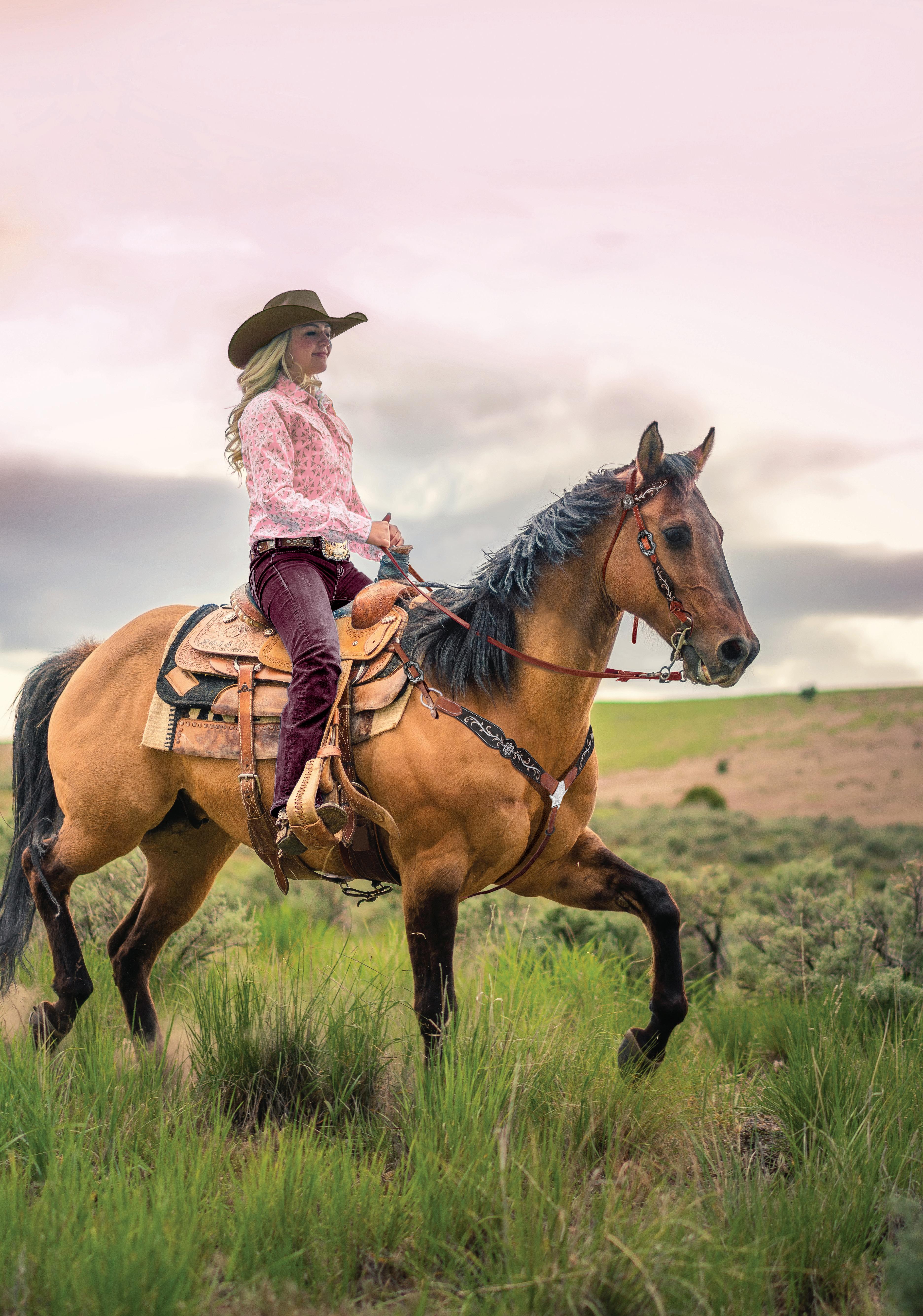
Australian owned and operated. Available at your local saddlery, distributed by saddlerytrading.com.

Timeless, Rustic, Beauty
Handcrafted for the modern cowgirl.
Fort Worth ® Rustic Beauty Collection.
Fort Worth ® Rustic Beauty Headstall. 2 Fort Worth ® Rustic Beauty Noseband.
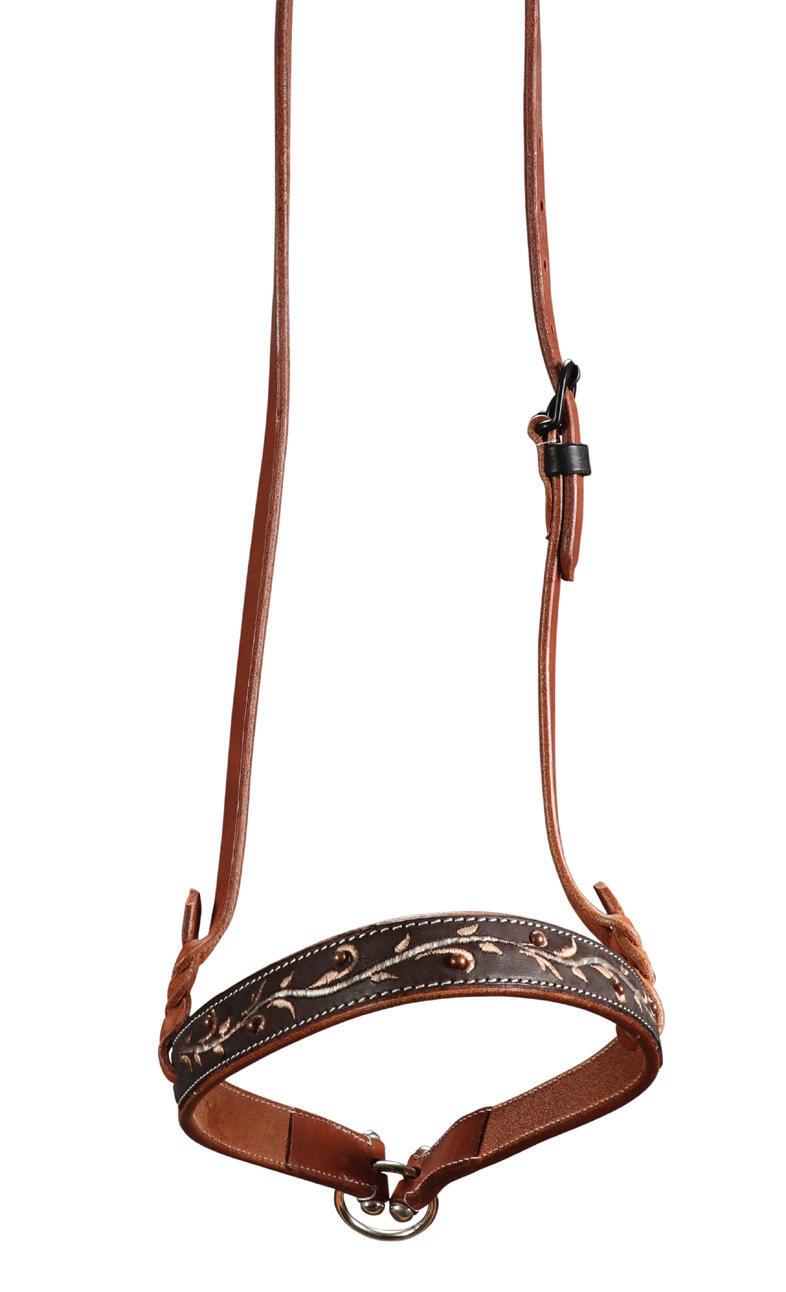
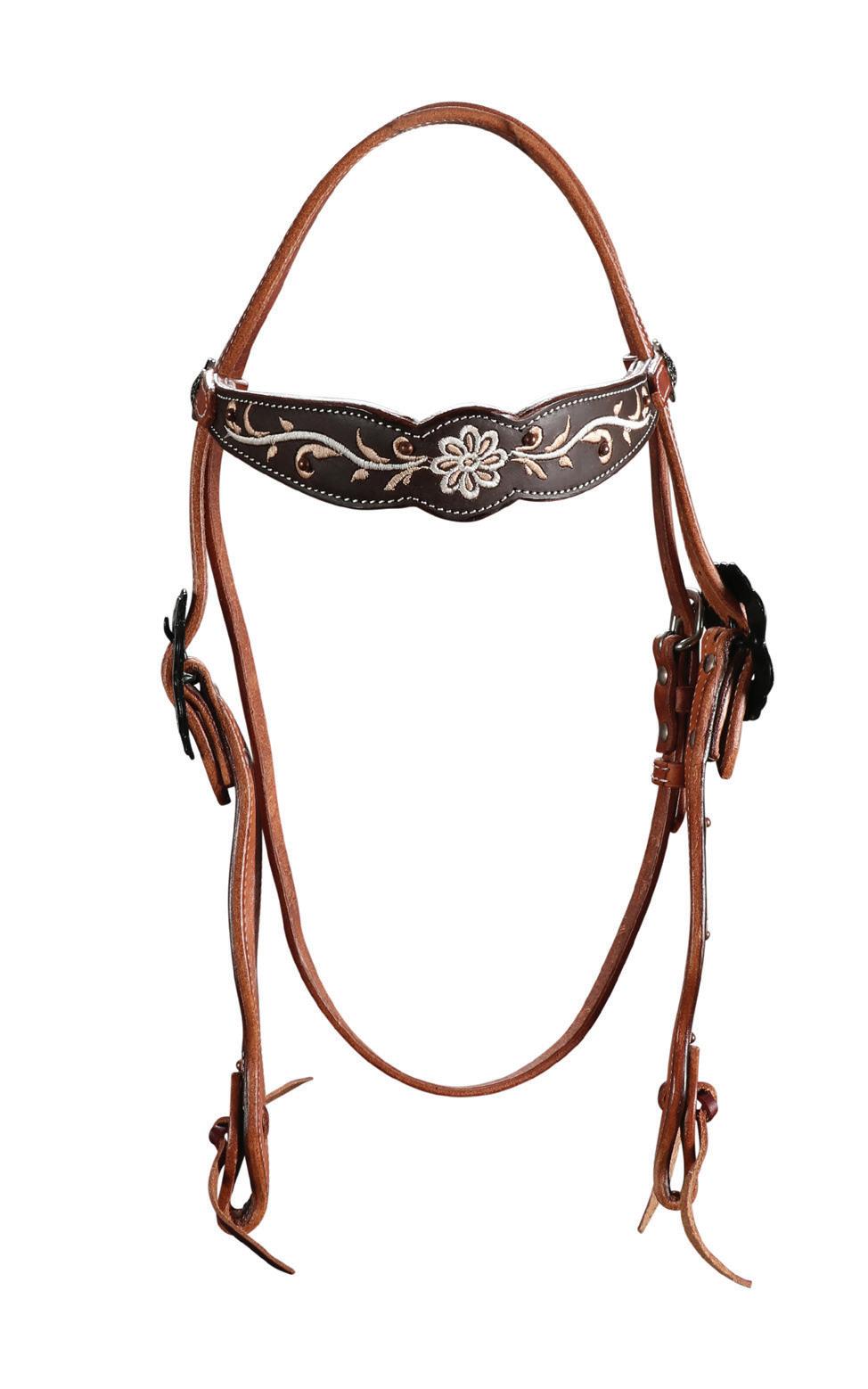

3 Fort Worth ® Rustic Beauty One Ear Headstall.

4 Fort Worth ® Spur Straps.
5 Fort Worth ® Rustic Beauty Breast Collar.

Fort Worth ® Quality Guarantee.
We guarantee Fort Worth ® products are engineered with 100% quality materials and construction, so you can guarantee a great performance every time.
Fort Worth ® is available through our largest stockist Greg Grant Saddlery, or your loacl saddlery. Call 07 5490 5500 to find your nearest stockist.
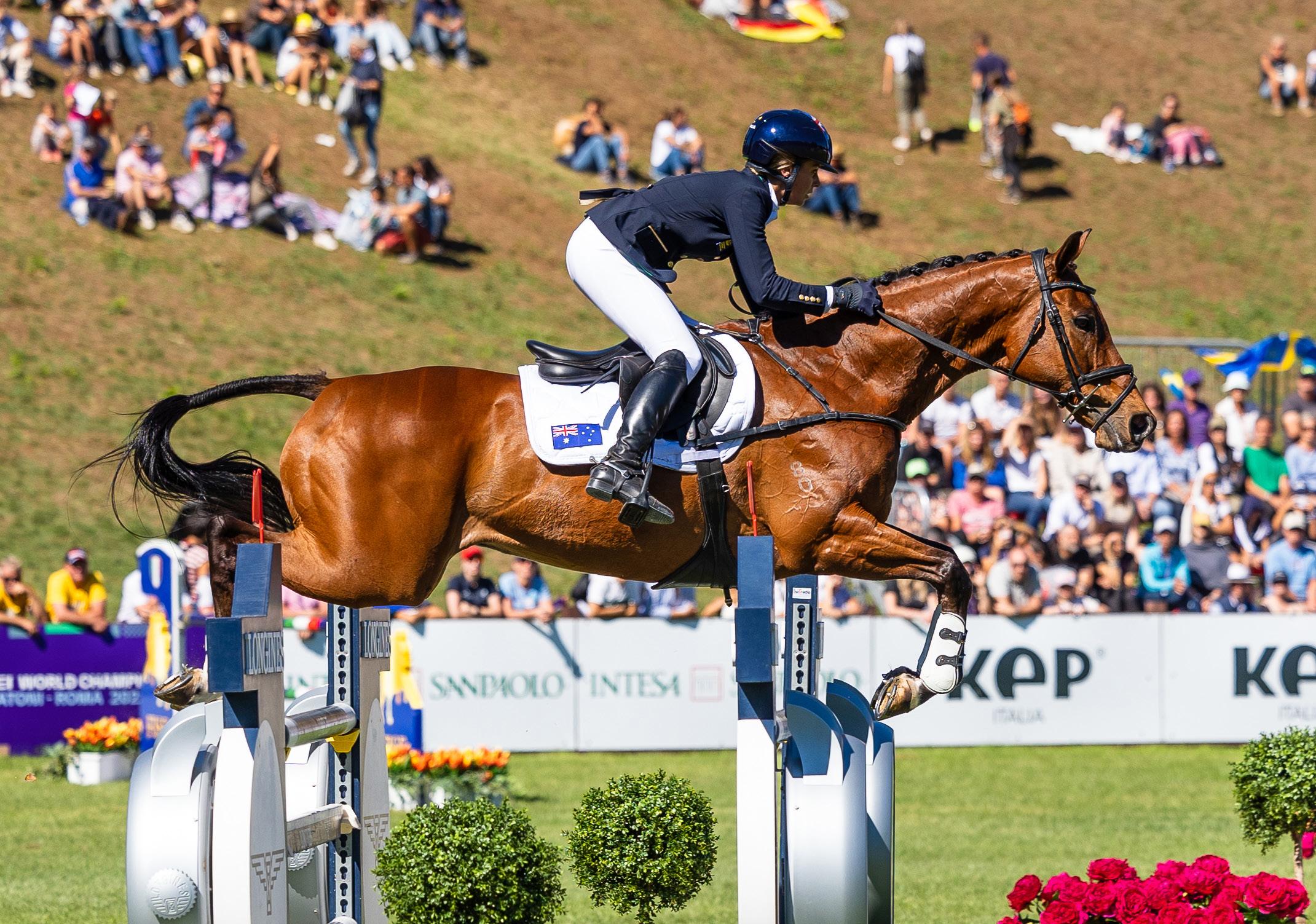
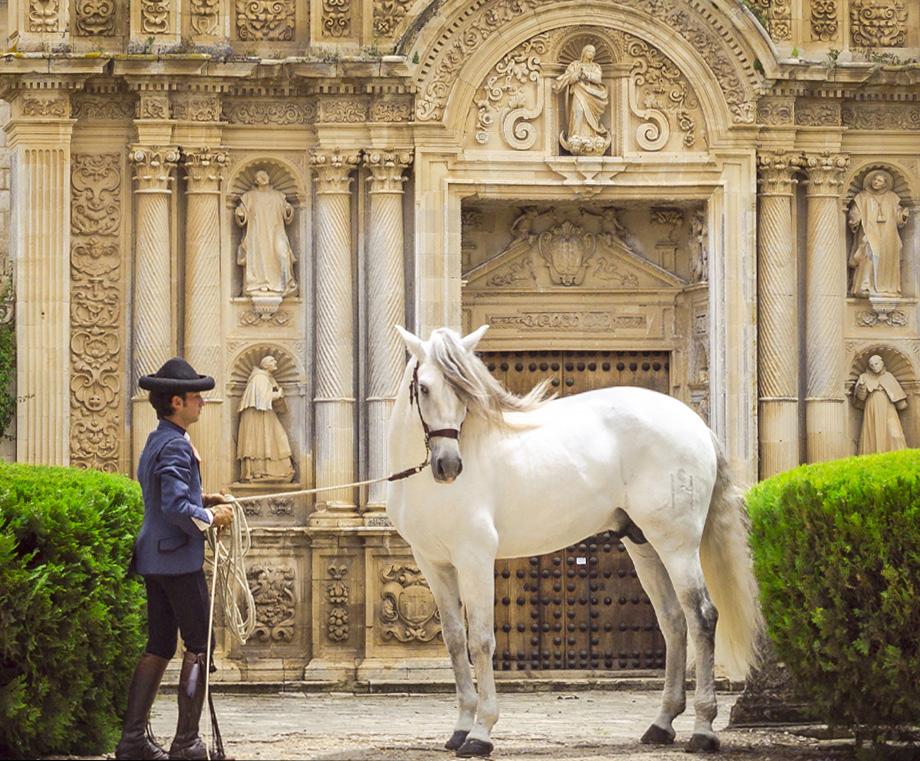

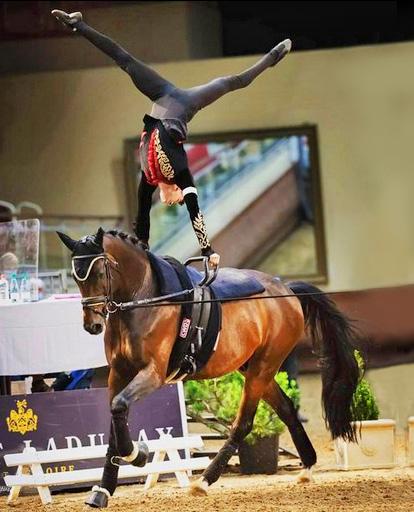
4 | EQUESTRIAN HUB ISSUE 10 • 2022 58 THIS PUBLICATION IS PUBLISHED BY EQUESTRIAN HUB. MATERIALS IN THIS PUBLICATION HAVE BEEN CREATED BY A VARIETY OF DIFFERENT ENTITIES AND TO THE EXTENT PERMITTED BY LAW, THE PUBLISHER ACCEPTS NO RESPONSIBILITY FOR MATERIALS CREATED BY OTHERS. THE VIEWS EXPRESSED IN THIS PUBLICATION DO NOT NECESSARILY REPRESENT THE OPINION OF THE PUBLISHER, ITS AGENTS OR EMPLOYEES. CONTENTS OF ADVERTISEMENTS ARE THE RESPONSIBILITY OF THE ADVERTISERS. ANY USE OF THE INFORMATION IN THIS PUBLICATION IS AT THE SOLE RISK OF THE PERSON USING THAT INFORMATION. ©2021 EQUESTRIAN HUB EXCEPT AS PERMITTED BY LAW, NO PART OF THIS MAGAZINE MAY BE REPRODUCED IN WHOLE OR PART WITHOUT PRIOR WRITTEN PERMISSION OF EQUESTRIAN HUB. ALL RIGHTS RESERVED. INFORMATION AND CREDITS ARE CORRECT WHEN GOING TO PRINT BUT MAY CHANGE AFTERWARDS. 56 10 52 Editor Amanda McWhinnie amanda@equestrianhub.com.au Advertising Enquiries Sara Davies 0480 315 943 sara@equestrianhub.com.au Sponsorship Enquiries Fiona Todd 0414 760 067 fiona@equestrianhub.com.au Website www.equestrianhub.com.au Published by Equestrian Hub PO Box 13, Tintenbar NSW 2478 0414 760 067 info@equestrianhub.com.au www.equestrianhub.com.au Follow Equestrian Hub equesthub equesthub On the Cover Shenae Lowings and Bold Venture gallop up the hill at last month’s FEI World Championships in Pratoni, Italy (Image by Michelle Terlato Photography). Creative Kimberley Bloom Design www.kimberleybloom.com.au kim@kimberleybloom.com.au
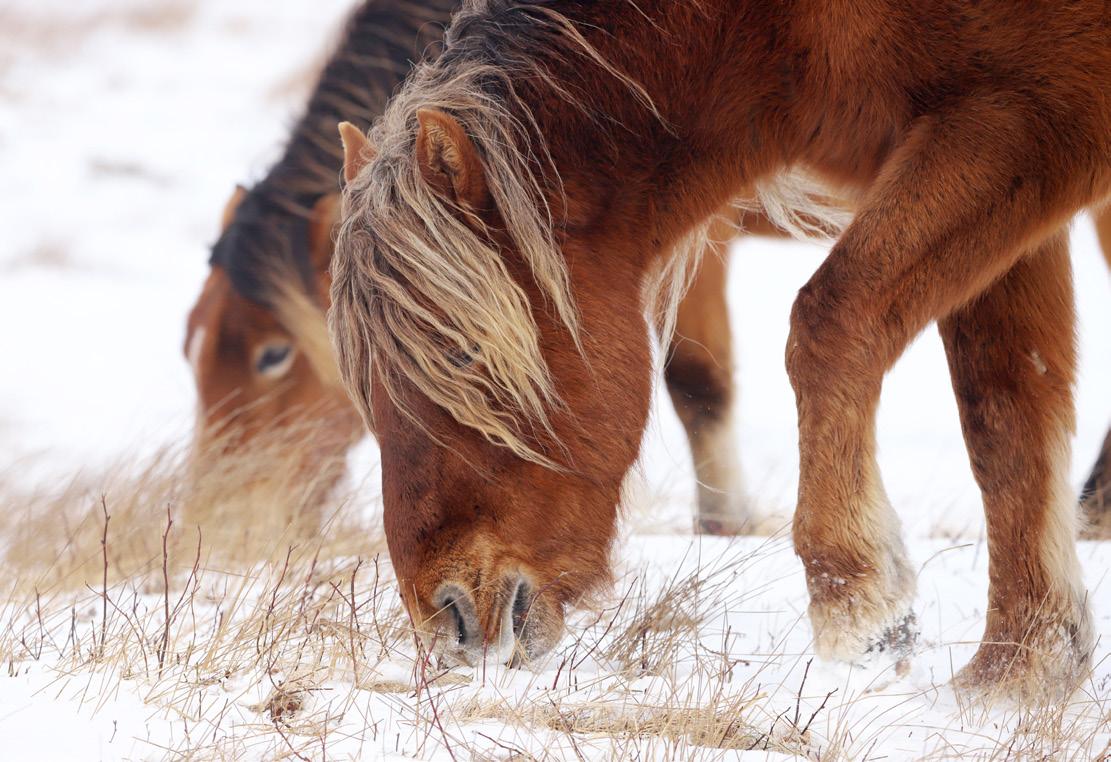

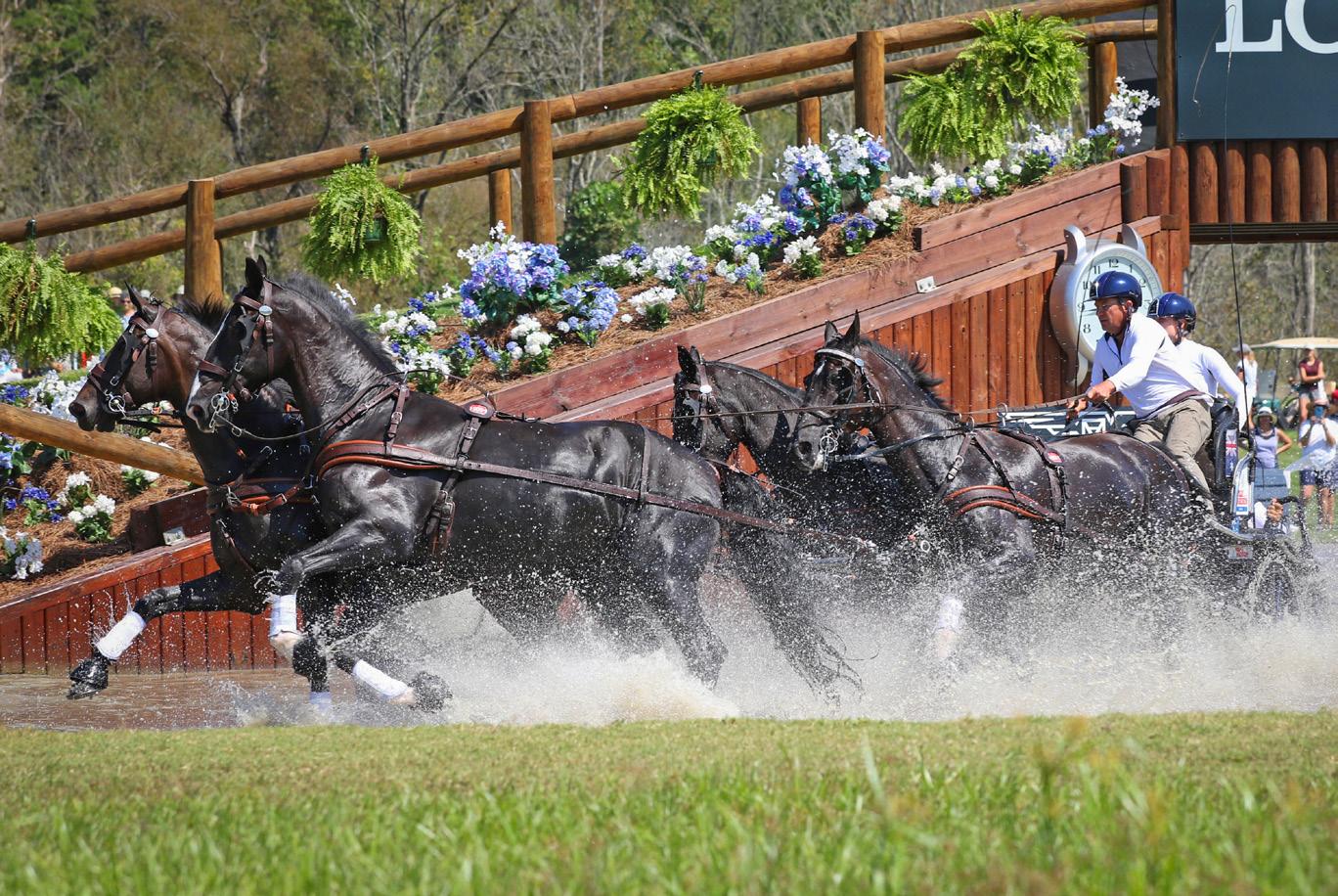

EQUESTRIANHUB.COM.A U | 5 42 00 24 48 Contents ISSUE 10 • 2022 6 Our Contributors 9 From the Horse’s Mouth 10 Spotlight on Shenae Lowings 17 Coaching with Christine: Positive vs negative 20 Ask an Expert: David Nash 23 Meet the Mentors 24 Feature: On being para-equestrian 28 Hanging Tough: Self-carriage 30 Feature: The questions you never asked 34 Vet Vibes: Lameness 38 Nutrition: Who decides what your horse eats? 42 Training Tips: Tips for a double bit transition 48 Feature: It’s a wrap 52 Feature: Piggy March wins Burghley 2022 56 International Trends: Cavago’s come to town 58 Feature: Fourth time’s a charm 61 Tacked up: Colour coordination 64 Life After Racing: A slice of Pie 67 Travel: Riding by the Rockies 71 Fashion Trends: Endurance haute couture 74 Breed: The wild horses of Sable Island 76 Property Central 79 Saddle Review: Erreplus Freestyle 80 Young Rider: William Bates 82 20 Questions with Wayne Turner 74
Nicole Tough
Nicole is an EA Level 2 Dressage Specialist
Coach and National A Level Judge, with over 30 years’ experience, training, competing, judging and coaching.
She enjoys presenting seminars and masterclasses, has trained in Germany, Spain and The Netherlands, and has produced nine very successful FEI horses. In this issue she shares her training theories on self-carriage.
David Shoobridge

David is an elite Australian dressage rider and highly sought after trainer and coach. His partnership with KWPN stallion 00 Seven was one of Australia’s most successful combinations in the world of FEI dressage.

Transitioning to a double bit requires patience, care and good timing, and David shares his expertise in this month’s Training Tips.

Suzy Jarratt
Suzy has lengthy and varied form as a writer and presenter. She works for several Australian and overseas companies, is the author of three published books, and has won an international award for equestrian journalism. In this issue she meets young eventer William Bates and the wild horses of Sable Island, before taking a spin around the colour wheel.

Dr Doug English
A veterinarian and long-time turmeric researcher, Doug completed his Bachelor of Veterinary Science at the University of Queensland in 1974. He’s well-known throughout Australia for his work in the equine industry and is a long-time Equine Veterinarians Australia member. Don’t miss Vet Vibes, and his informative article on lameness and how to detect it.
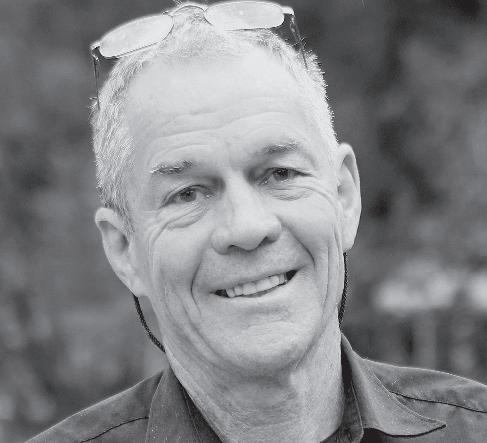
Jessica Morton
Jessica is a dual national New Zealand-Italian freelance journalist, equestrian traveller and writer. Currently based in Tuscany, she’s perfectly positioned to bring us the very latest in European equestrian trends and innovations. Don’t miss her roundup of eventing and driving at the FEI World Championships, held last month in Pratoni del Vivaro, Italy.
Mathilde Gregoire
David Nash
Director of Nutrition Technology at KER, David is an equine nutrition professional with many years’ experience. He advises on feeding and managing horses across all disciplines, and has been instrumental in quality control, laboratory management and analysis, and pasture research. In this issue, he looks at the banned substances hidden away where you might least expect them.
Christine Armishaw
Christine is a horse trainer, coach and passionate eventing and jumping rider. A Kiwi girl based in NSW, she teaches others not just how to ride, but also how to understand their horse. In this issue she speaks to Lisa Martin, a remarkable para equestrian, and explains the basics of positive and negative reinforcement in her coaching article.



With over 40 countries visited, 20 on horseback, Mathilde combines her two greatest passions: horses and traveling. Through writing, her mission is to inspire women and solo travellers to follow their dreams and embark on equestrian journeys around the world. In this issue she shares her adventures riding through the magnificent landscape of Alberta, Canada.

6 | EQUESTRIAN HUB ISSUE 10 • 2022
OUR CONTRIBUTORS
Lisa Martin
Lisa grew up with horses and later trained with dressage great Rozzie Ryan. But a life-changing mishap with a young horse, followed by another serious accident and lengthy hospital stay significantly changed the course of her career. Lisa has overcome immense odds to become a successful para dressage rider, recently competing at the 2022 FEI World Championships in Herning.

Kara Vasylenko
Kara has owned geldings for most of her life and sheath cleaning was just another necessary job. But it wasn’t until other owners began asking her to clean their horses that she started her business Pony Privates Sheath Cleaning. In this issue, she explains why this task is essential for your horse’s health and well-being.
Rebecca Nadge
Rebecca evented at 2* and worked in racing stables before becoming a journalist for newsrooms across Australia and New Zealand. She now works full time as a pen rider at a cattle feedlot, while juggling freelancing and a degree in Equine Science. In this issue, she spoke to Kara Vasylenko about the sometimes uncomfortable subject of sheath cleaning.
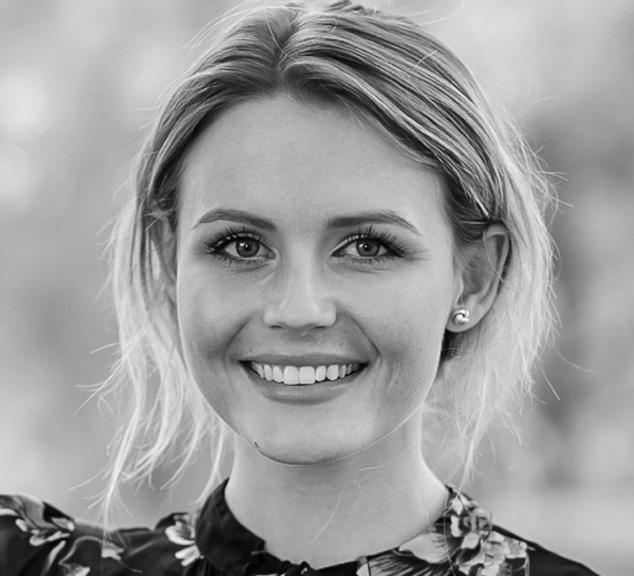

Tara Madgwick
Tara is the co-creator and long-time editor of Breednet, Australia’s premier Thoroughbred bloodstock website. Combining race and sales results with stallion profiles and news, Breednet provides unique coverage of the breeding industry. Tara is also a passionate advocate for life after racing, and in this issue tells the story of Pie, a kind, quirky and intelligent ex-racehorse.
Rachel Roan
Tania Huppatz


Tania runs Snaffle Travel, a successful travel company combining her love of horses and travel. She attends some of the major horse shows and equestrian-related locations around the world, and is keen to share her experiences with the Equestrian Hub community. In this issue she reports on the always exciting Land Rover Burghley Horse Trials.
Holly Mills
Holly Mills holds a BA in Animal Science and is an Equine Nutrition Advisor for MITAVITE®. Passionate about horse health, she helps owners improve the diet and wellbeing of their horses. She is also researching advancements in horse health at the University of Adelaide. If you’ve ever wondered who really decides what your horse eats, Holly has some answers for you.


Jamie Hocking

Based in Denmark, Jamie is the standing Australian National Champion in equestrian vaulting, holds a world ranking, and is determined to reach the top of his chosen sport. In this issue he speaks with World Champion vaulter Lambert Leclezio of France, who successfully defended his title when he competed at Herning, Denmark in August this year.
Rachel has ridden her whole life. A passionate horse enthusiast who’s working to establish a small stud of dressage bred performance horses, her interest in writing and storytelling grew during her university media studies. She recently spoke to Eventer Shenae Lowings, who has just competed at the World Championships, and to elite dressage rider David Shoobridge.
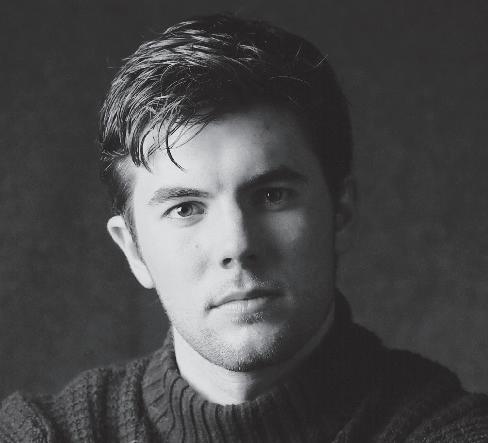
EQUESTRIANHUB.COM.A U | 7
OUR CONTRIBUTORS





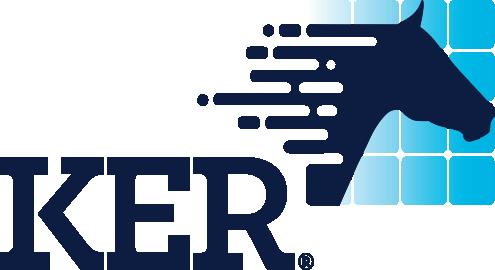

03 8562 7000 | ker.com Nutrition Consultation Service 1800 772 198 | advice@ker.com Developed by Kentucky Equine Research® World Leaders in Equine NutritionTM Equi-Jewel® is a scienti cally formulated high-fat, low-starch, and cool-energy conditioner. Equi-Jewel is the original, research-proven stabilised rice bran product for horses and is the only conditioning supplement to include KER BMC ™ to bu er the digestive tract. This, combined with Equi-Jewel’s proven track record, make it the go-to topline conditioner for horse owners, leading trainers, and breeding farms around the world. Now available at a stockist near you! New Look, Same Proven Formula Often Imitated. Never Equalled. Equi-Jewel®
From the Horse’s Mouth
With Fiona Todd
Welcome to another exciting issue of your favourite equestrian magazine. And isn’t it wonderful that after the COVIDinduced competition drought of the past few years, there’re now more events than we know what to do with!

On that note, we shine our spotlight on eventer Shenae Lowings, who last month represented Australia at the World Championships in Pratoni, Italy. Not only do we chat with Shenae, we also bring you coverage of both the eventing and driving components of the championships, plus Tania Huppatz’s wrap of another standout on the equestrian calendar, the Land Rover Burghley Horse Trials.
Still with international competition in focus, Jamie Hocking catches up with equestrian vaulter and long-time friend Lambert Leclezio. Lambert broke all records at the August World Championships in Herning when he took out his fourth world title. Paraequestrian Lisa Martin, who has faced some extraordinary challenges in her riding career and has just returned from the World Championships, also shares her story in this issue.
To bring our collective feet firmly back down to earth, if competing’s on your own mind you’ll want to check in on some interesting insights on banned substances from David Nash, Director of Nutrition Technology at KER … and spoiler alert, they lurk where you’d least expect them!
And we’re delighted to announce that we’ve welcomed EA Level 2 Dressage

Specialist Coach and National A Level Judge Nicole Tough to our editorial team. Nicole will be drawing on her years of experience to bring us some invaluable insights, this month focussing on the importance of self-carriage. Also in this issue, we hear from elite dressage rider and Equestrian Hub mentor David Shoobridge, who talks to Rachel Roan about transitioning to a double bit, and on a more general training topic, Christine Armishaw drills down on that sometimes confusing subject of positive and negative reinforcement.
Keeping your horse healthy and happy is obviously a priority, and in this issue Dr Doug looks at lameness, how to identify it and what to do about it; MITAVITE equine nutritionist Holly Mills
investigates those tricky feed labels and suggests how to get the best nutritional value for your feed dollar; and Rebecca Nadge talks with Kara Vasylenko to find out why sheath cleaning is so important for your horse’s well-being.
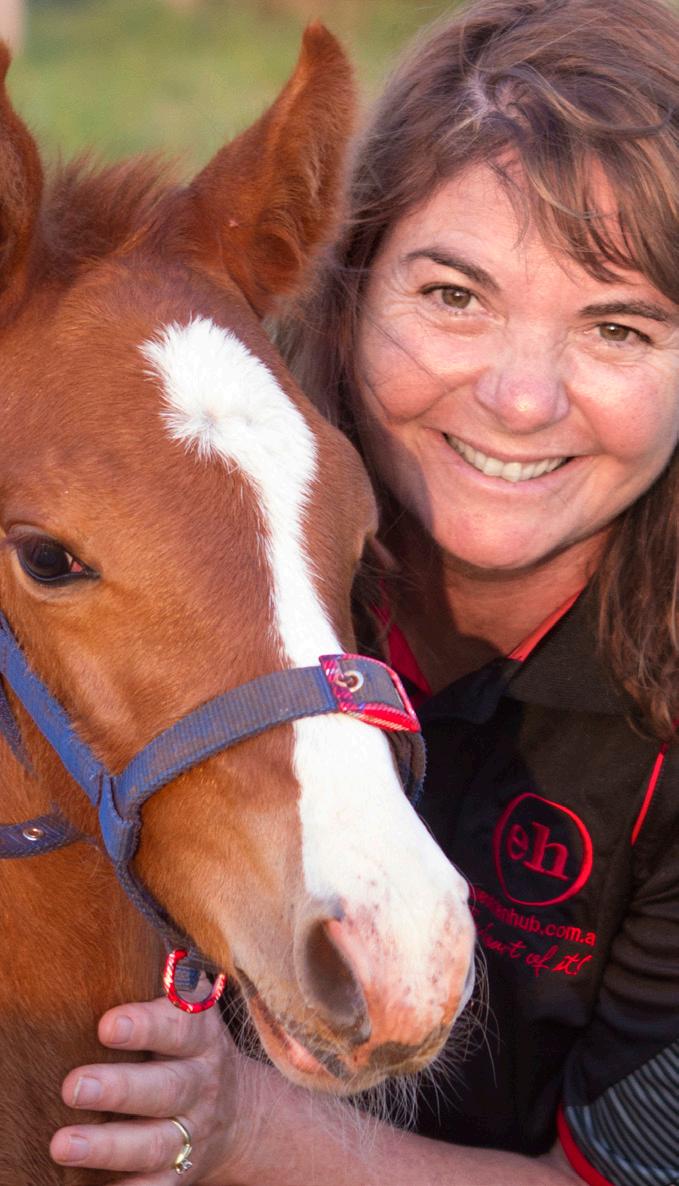
In Life After Racing, Tara Madgwick tells the story of Pie, the quirky and kind exracehorse who knows how to win hearts; Jessica Morton explains the advantages of Cavago, the fastest-growing booking platform for equestrian activities pretty much anywhere around the world; and the globetrotting Mathilde Gregoire takes us for the ride of a lifetime in Alberta, Canada. And while we’re in that particularly lovely neck of the woods, Suzy Jarratt discovers why the wild horses who inhabit a remote Canadian island have captured the imagination of photographers and documentary film makers alike.
In the interests of kitting you and your horse out in style, we look at haute couture for endurance riders (and any other equestrian who appreciates flair and functionality), and take a ride on the fabulous matchy-matchy colour wheel of saddlecloths, bonnets and bandages.
Our super interesting 20 Questions is with farrier Wayne Turner, a man dedicated to a modern approach to his profession, and this month’s Young Rider is William Bates who’s galloping up the eventing ranks while keep a remarkably mature head on his shoulders.
We also introduce two more of our wonderful mentors – Alanna Richards and household name Vicki Roycroft – and explore the virtues of the Erreplus Freestyle.
And finally, as you settle back with a glass of your preferred tipple, we take you on a tour of Helgstrand at Turnberry, the luxurious Australian home of world renowned Helgstrand Dressage.
Cheers,
EQUESTRIANHUB.COM.A U | 9
PUBLISHER’S LETTER
On the way to the top

So far, eventer Shenae Lowings has achieved some notable successes, and the best may very well be yet to come, writes RACHEL ROAN.
Twenty-five year old eventer Shenae Lowings is proving to be an up-and-comer in the equestrian world. After winning the CCI4* at the 2022 Melbourne International Three Day Event, she represented Australia at the World Championships in Pratoni, Italy, last month.
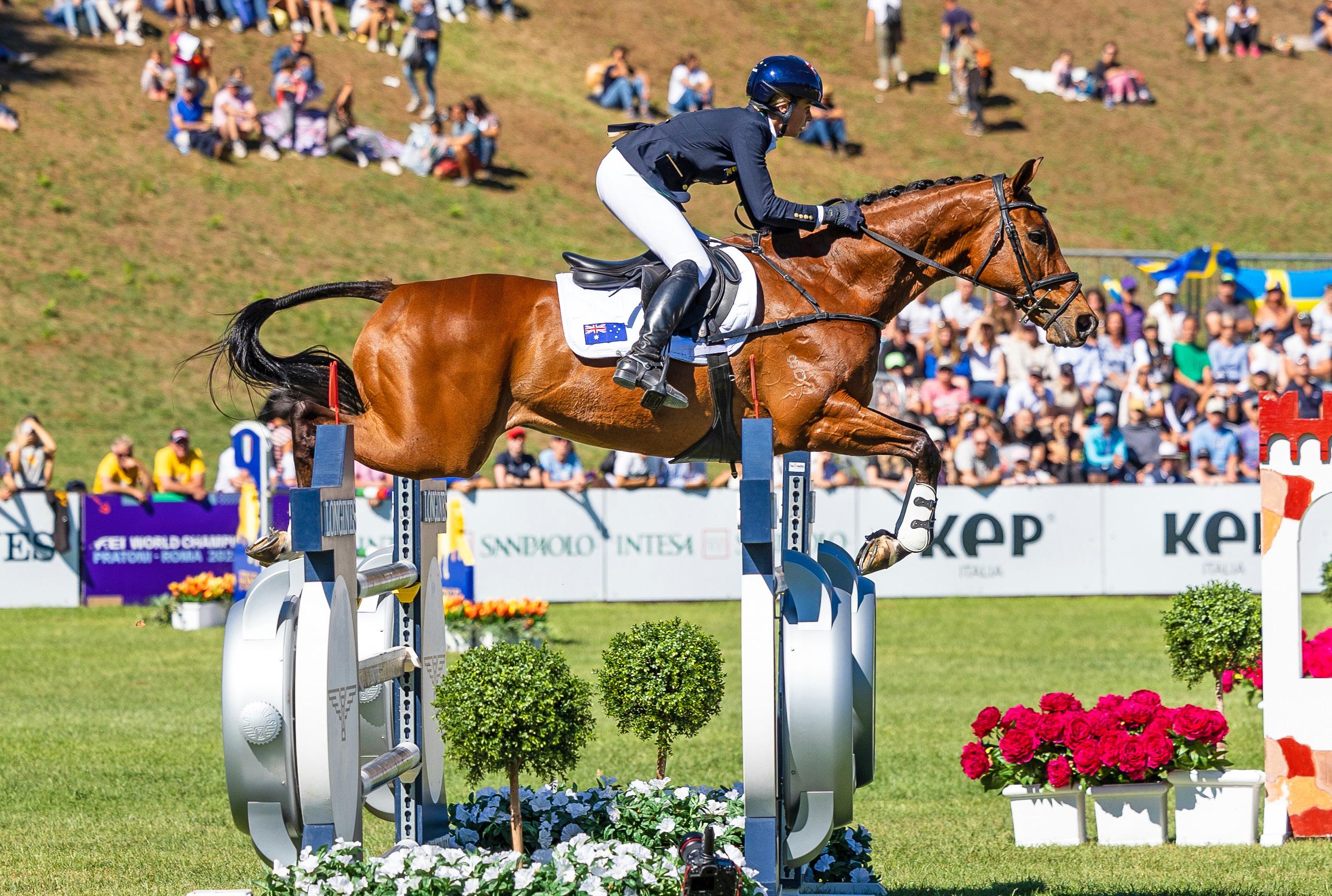
Originally a West Australian girl, Shenae grew up in Attadale in suburban Perth.
Despite being around horses as a child, she admits she never dreamed of going to the top. Her grandfather was a bookmaker and from the age of five, she accompanied him to the races every Saturday, becoming familiar with trotters and gallopers and gaining confidence around the business of the track. While her family were “kind of from a horsey background” (her mum had done a bit of non-competitive show jumping and
hacking and her dad had trained trotters when he was younger), by the time she developed an interest in riding they were pursuing other hobbies. She recalls her first pony arriving when she was around ten. After months of lessons at a local riding school, her parents purchased one of the school’s horses. “He was a proper little hacking pony,” Shenae recalls, a stark contrast to the eventers she now rides. Although making it to the Perth Royal in ridden classes, Shenae found it left her wanting more: “I wanted to go out in the bush and jump fallen logs. The pony hadn’t jumped before and didn’t like it, and I wasn’t overly excited about hacking.”
So when her parents purchased a five acre property, they took the opportunity to buy 12-year-old Shenae her first competitive show jumping pony, Belina Rapsody. It was meant to be. The 14hh superstar had talent to burn, and he loved the sport. Even though he wasn’t too keen on water jumps, he took her through to 105cm.
10 | EQUESTRIAN HUB ISSUE 10 • 2022 SPOTLIGHT
By this time, Shenae had developed a passion for eventing. “I was obsessed with watching Badminton DVDs,” she confesses, “and my dad would always be googling thrills and spills.” I question whether watching eventing falls ever made her reconsider her decision to event: “No, not at all! My sister was very turned off by all of that, whereas I didn’t care. I just loved it.” Attending events with BML Performance Horses, a local agistment centre, sealed the deal for Shenae. “They did a lot of eventing and I would go with them. Once I saw what it was all about, I didn’t want to do anything else. That was all I ever wanted to do. I didn’t try anything else.”
But the path to professional riding is rarely easy. “I finished school in 2013 and got an office job. I worked in admin and accounts for seven years, but it paid the bills and allowed me to keep doing what I wanted to do,” she explains.
By 2016, Shenae had moved across the country with four horses to base herself in NSW with Prue and Craig Barrett, finding another office job to keep herself afloat financially. “Prue is a major influence on my riding and gave me the system that I still use to this day. She has a very methodical style of coaching and it becomes a real routine for the horses. She asks the horse to use every part of their body and it really brings out the best in them. That’s what I love about her.” Shenae adds that it’s important to continue to learn, to be coached by a range of people, and to ride as many different horses as possible.
In 2020, Shenae felt ready for another change and took up a job with Shane and Nicki Rose at Bimbadeen Park, employed for the first time in a role that actually involved working with horses. “Bimbadeen’s an extremely busy place. You start work early and don’t finish till late.” And for Shenae, that was exactly the right move. “It was so beneficial for what I wanted to do, and I believe it made me a better rider. I learned a lot of new things.”

So far, Shenae has accrued some significant achievements. At 3* level, she found success with Venture Sky High (Squirrel to his friends) her Warmblood cross gelding. “He was the first major horse to give me success in eventing. He taught me a lot on the flat. He was good in dressage, a great show jumper
FACING PAGE: Shenae and Bold Venture at last month’s FEI World Championships in Pretoni (Image by Australian Equestrian Team/Kirsty Pasto).
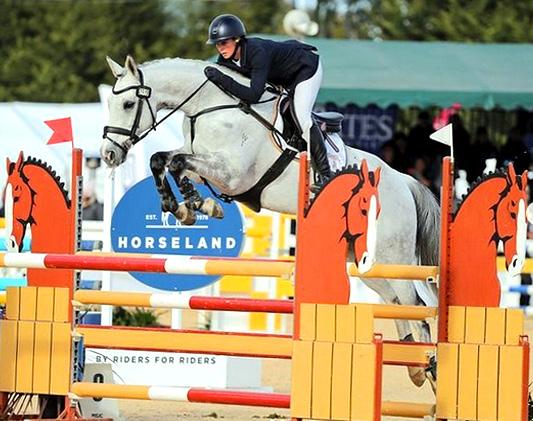
TOP: Winners at the 2022 Melbourne International 3DE (Image by Australian Equestrian Team/Kirsty Pasto).
BOTTOM: Shenae hopes the naturally talented SS Graphite will be her next top horse (Image by Derek O’Leary Photography).

EQUESTRIANHUB.COM.A U | 11
SPOTLIGHT
and while he was not overly brave in cross country when he started out, he tried hard and eventually became very consistent.” Consistency and training paid off when Shenae and Squirrel qualified for two Young Rider teams chosen to compete at the Oceania Games; in New Zealand in 2015 and Melbourne in 2017.
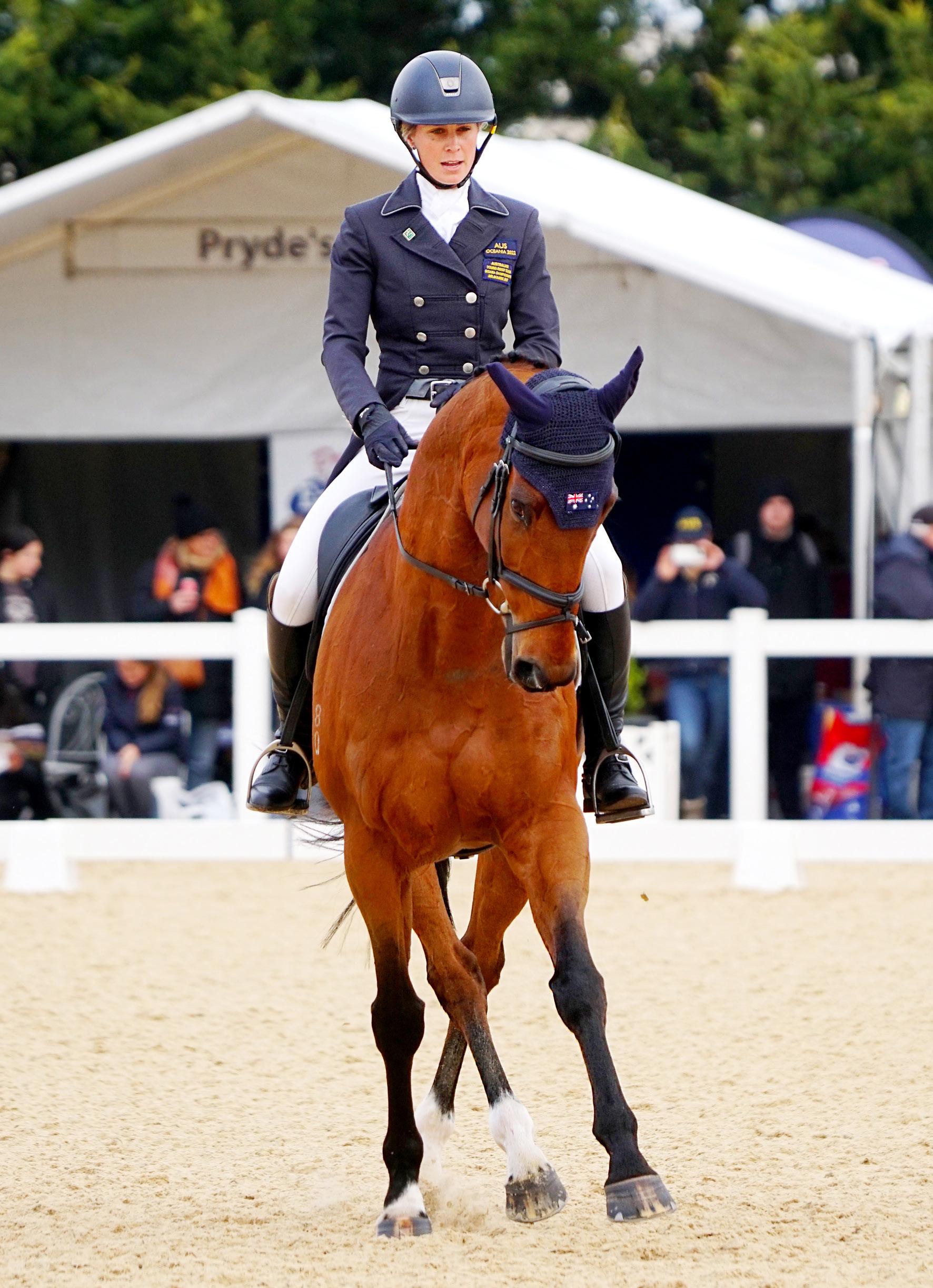
Shenae’s first 4* horse was Ballyhoo. “He pretty much taught me all I know
about cross country,” she tells me. “He was an amazing cross country horse and he gave me heaps of confidence, which has stayed with me really, for all the other horses I’ve had since.” And for other young riders, Shenae has some advice: “It’s really important to ride different horses when you’re starting out. It makes you realise what type of horse you should look for. I think if you just stay with the one type, then you’ll only ever know that one type.”
Because of its three phases, each one challenging in its own right, eventing is a sport that requires a horse to be talented in multiple disciplines, and a rider isn’t always blessed with a mount that excels in all three. Which is why Shenae believes it’s important to look at temperament when you’re shopping for a horse. “I don’t really have an ideal horse. I love working with one that’s willing to try and willing to do things for you,” she says. “I do love Thoroughbreds. I’ve had some good ones and the best horse I’ve had to date is a TB, but it doesn’t mean I won’t ride anything else.”
When she takes on a new horse, Shenae doesn’t trial them first. “I know the trainers I buy them from,” she explains, “but I do look at their confirmation and their breeding. You can get a bit of a gauge on what their temperament is likely to be from the breeding.”

She notes that many OTT Thoroughbreds can be quirky and stresses the importance of being picky when looking for one. “It’s hard to find an OTT with a good mind that hasn’t been buzzed by racing.” That said, Bold Venture (aka Bentley), her partner when she won the Melbourne CCI4*, was originally off the track. “He’s the quirkiest horse I’ve ever owned, but I knew that he wasn’t fried,” she says. “When I put work into him, he didn’t panic. While he might have other little quirks, like being startled if I walk up to him too quickly in the paddock, he’s always been good with work. I knew he was going to be able to cope with the pressure of higher level events.”
Shenae has her sights firmly set on the future, and has been busy training. Her current team consists of Bentley, her main 4* horse, and SS Graphite (Smokey), a recent off the track addition. “Hopefully Smokey is going to be my next top horse,” she tells me. “He’s naturally talented, a really good jumper and he doesn’t lack confidence. I’ve
12 | EQUESTRIAN HUB ISSUE 10 • 2022 SPOTLIGHT
The pair scored a creditable 24.9 in the CCI4*L dressage phase (Image by Equine Focus Photography).

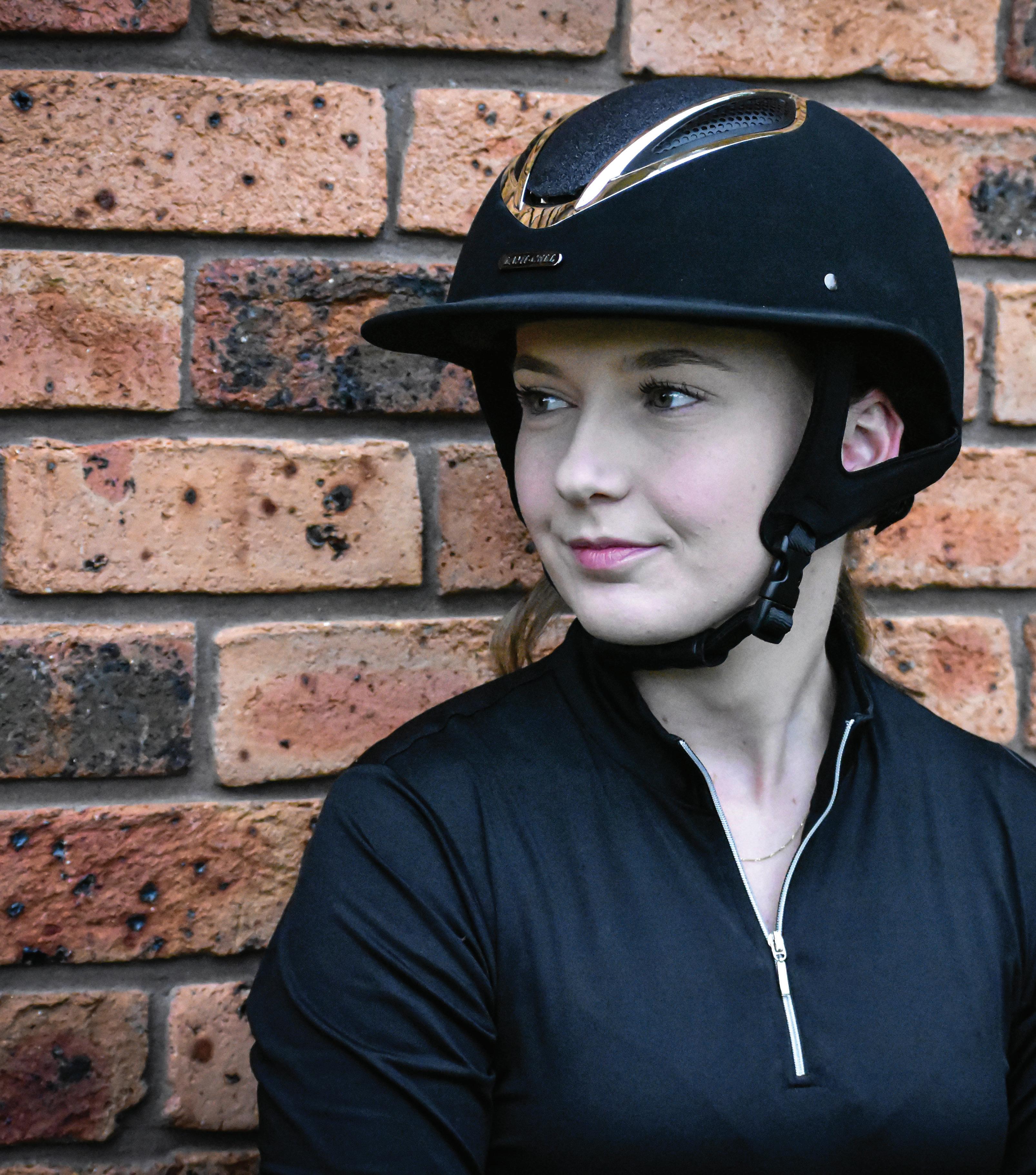
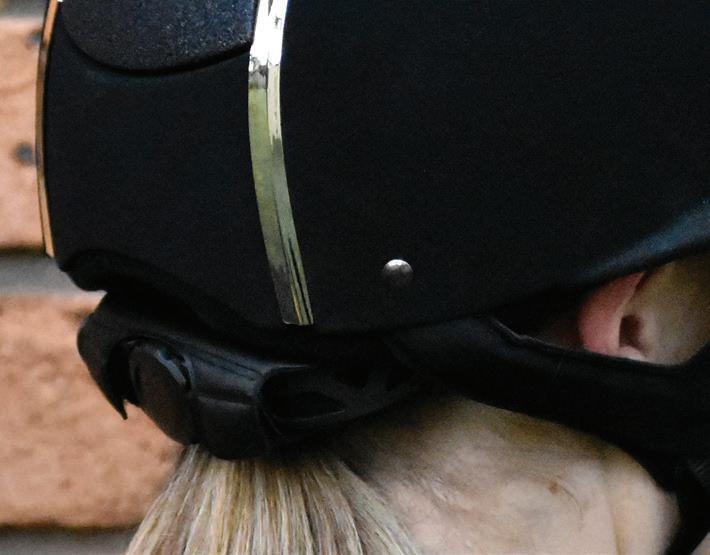


14 | EQUESTRIAN HUB ISSUE 10 • 2022 AUSTRALIA: Zilco International Pty Ltd [tel] +61 2 8765 9999 [e] sales@zilco.com.au NEW ZEALAND: Zilco NZ Ltd [tel] +64 3 381 0270 [e] sales@zilco.co.nz Available from participating saddlery outlets in Australia and New Zealand. Discount only available at zilco.net. Exclusive to Zilco International. IF IT’S BRANDED ZILCO, IT’S BRANDED QUALITY. Ergonomically designed, extra-wide brim for better shade over the face and eyes 40% OFF Luxurious nubuck leather finish, with stylish glitter panel and metallic air vents Dial adjustment for a custom fit, plus extra changeable comfort liner for easy cleaning ARTEMIS STYLE WITH A BIT OF BLING was $309.95 now $185.97 CLICK HERE TO SHOP AND SAVE! zilco.net
been able to move him through the levels quickly because he is such a good jumper.” She also has her first home bred mount, Bold Cointreau, a fiveyear-old out of a Thoroughbred mare by Contendro I. “He’s 2* at the moment. He is still so young but is ticking all the boxes, so with time he should be a really good horse,” she adds.
After last month’s World Championships, competing overseas is an experience that Shenae is looking forward to
repeating. She’s excited by the prospect: “I definitely want to do this as my profession. I’ve set goals to compete on the European circuit, to do all the 5* events, Badminton, Burghley, plus Kentucky. And who knows, hopefully one day the Olympics,” she muses, “that’s my big goal.”
With partner and fellow eventer Sam Woods, Shenae is now based in Milton on the NSW’s South Coast. They have plans to open a breaking and pre-


training business, as well as to take on some coaching, something she really enjoys. But big dreams call for hard work, which she’s well prepared for: “It’s not an easy sport. If you want to put in the hard yards and make it work, then it absolutely can.” At the same time, she knows it’s important to enjoy the journey. “You’ll ride many ups and downs. Just go with it,” she advises. While every rider has their own strategies for producing successful horses, Shenae says that for her, getting them really round over the back is the main aim. She believes that building a horse’s strength is crucial and having a good dressage foundation will help make the other two eventing phases easier. “I want them to use their own neck and find their own balance. It just makes them so much stronger. Even if you don’t like dressage, it’s really important to have that foundation. If your horse is schooled well on the flat, it makes the jumping aspect a lot easier,” she explains. “Eventing is a tough sport, especially at the top level. It’s very demanding on both the horse and rider.”
But Shenae is realistic about those demands and is prepared for injuries and disappointments. “I know that, as with any athlete, there can be wear and tear on the rider as well as on the horse, and there’s an expectation that either one of you may be injured at some point.” She believes a good strategy is to have a backup horse and keep an open and positive mind. Ideally, she tries to run no more than five competition horses: “But there are always other young ones coming up, so if anything happens to one of your team, there’s another in the wings you can bring in to take their place.”
All in all, Shenae Lowings seems to be blessed with talent as well as levelheaded realism – and what better characteristics could there be for a successful career in the exacting world of eventing.


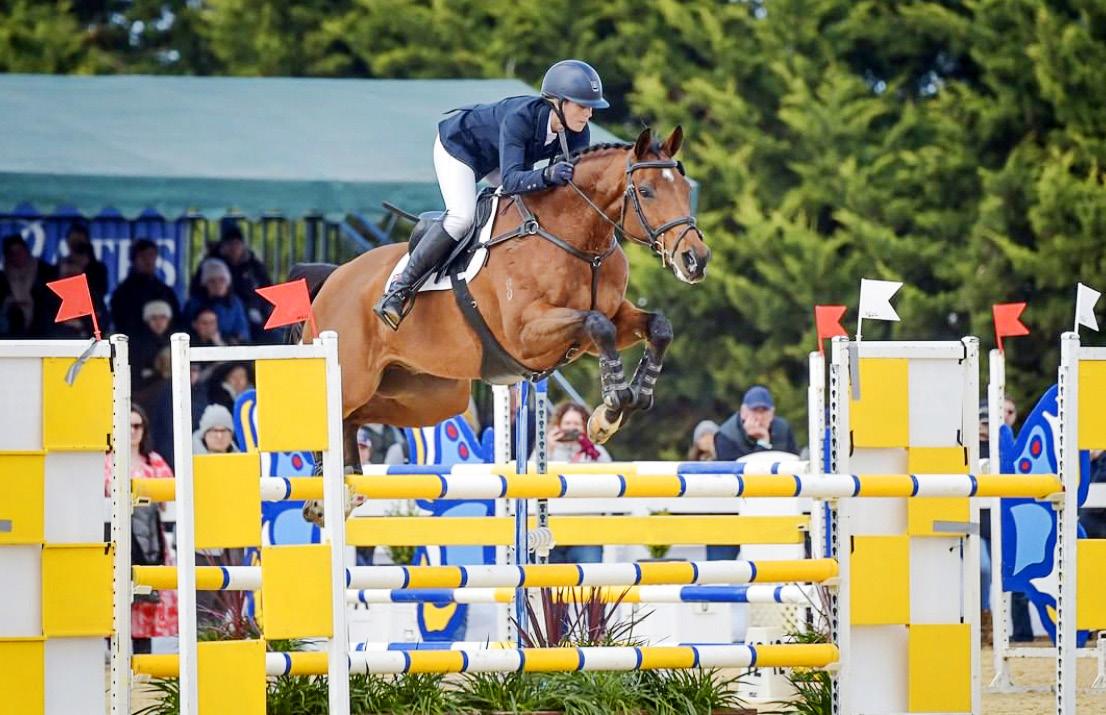
EQUESTRIANHUB.COM.A U | 15
OTT Thoroughbred Bold Venture has been able to cope with the pressure of high level events (Image courtesy Shenae Lowings).
The quirkiest horse Shenae has ever owned, Bold Venture has more than proved himself (Image by Australian Equestrian Team/Kirsty Pasto).
SPOTLIGHT

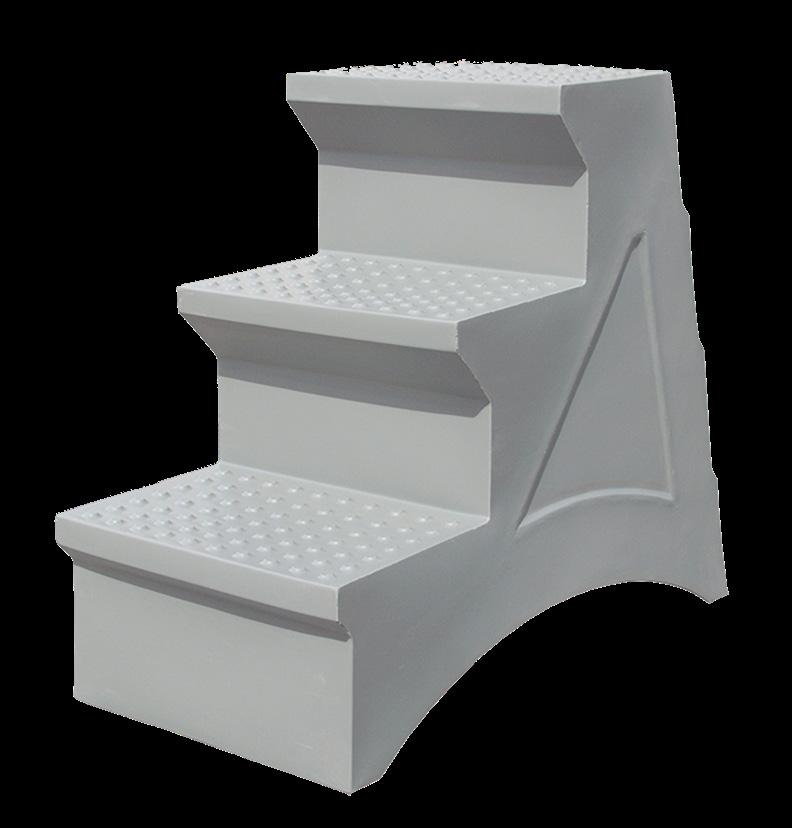




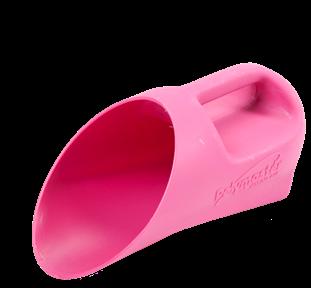

16 | EQUESTRIAN HUB ISSUE 10 • 2022 1800 062 064 | polymaster.com.au Handi Step HSP Hayrack PT03 Poly Feed Scoops PSC 8ltr Stable Feeder PT48W 18ltr Tyre Feeder PTF18 Your horse deserves the best. Spoil Them!
WITH CHRISTINE
Positive versus negative
The reasons why you would add or take something away would be either to encourage a behaviour you want, or to stop one from happening. The things you might be adding or removing include pressure, treats, voice or touch, all depending on the case at hand.

Subtracting says yes
Negative reinforcement only got a bad rep because of the connotations associated with the word ‘negative’. However, it simply means to take something away in order to encourage a certain behaviour or action.
You may have heard of positive and negative reinforcement, but what do those terms actually mean? CHRISTINE ARMISHAW explains.
Positive reinforcement versus negative reinforcement – now that’s jargon that may have you scratching your head! Some people hear the term negative reinforcement and panic, preferring to give the idea a wide berth. Is it even fair to use these types of training based on the way a horse learns? I love to use both techniques

with every horse I work with, and here's why horses respond so well when I do.
But first things first, let’s get straight with what positive and negative actually mean. They are not referring to ‘good’ and ‘bad’. Instead, put your mind into basic math mode: ‘positive’ means to add something; ‘negative’ means to subtract, or to take something away.
This is how it looks: the horse is still, the rider squeezes or kicks the horse’s sides (adds pressure), the horse walks on, and the squeezing or kicking (pressure) is stopped (taken away). When the rider carries this out correctly and with perfect timing, they’re effectively saying to the horse yes, moving forward is the easiest way to get my leg pressure to stop. But, and this is arguably the most important point, the horse doesn’t walk on because the rider squeezed or kicked, but rather because they learn that the rider will stop squeezing or kicking when they do walk on.
EQUESTRIANHUB.COM.A U | 17
COACHING
This is fundamental equine education that is often lacking because the rider doesn’t fully understand how negative reinforcement works. If a rider feels their horse has to be kicked all the time just to keep it moving, the problem does not lie with the horse, but rather with the way the rider is administering their ‘go’ aid. The rider needs to apply enough initial pressure to get the horse to move forward then, once they start moving, to stop kicking and leave the horse alone. A horse is sensitive enough to feel a fly land on their skin and subsequently twitch it off, so if your horse is not responding to the repeated thumping of your heels against their sides, that’s a training issue.
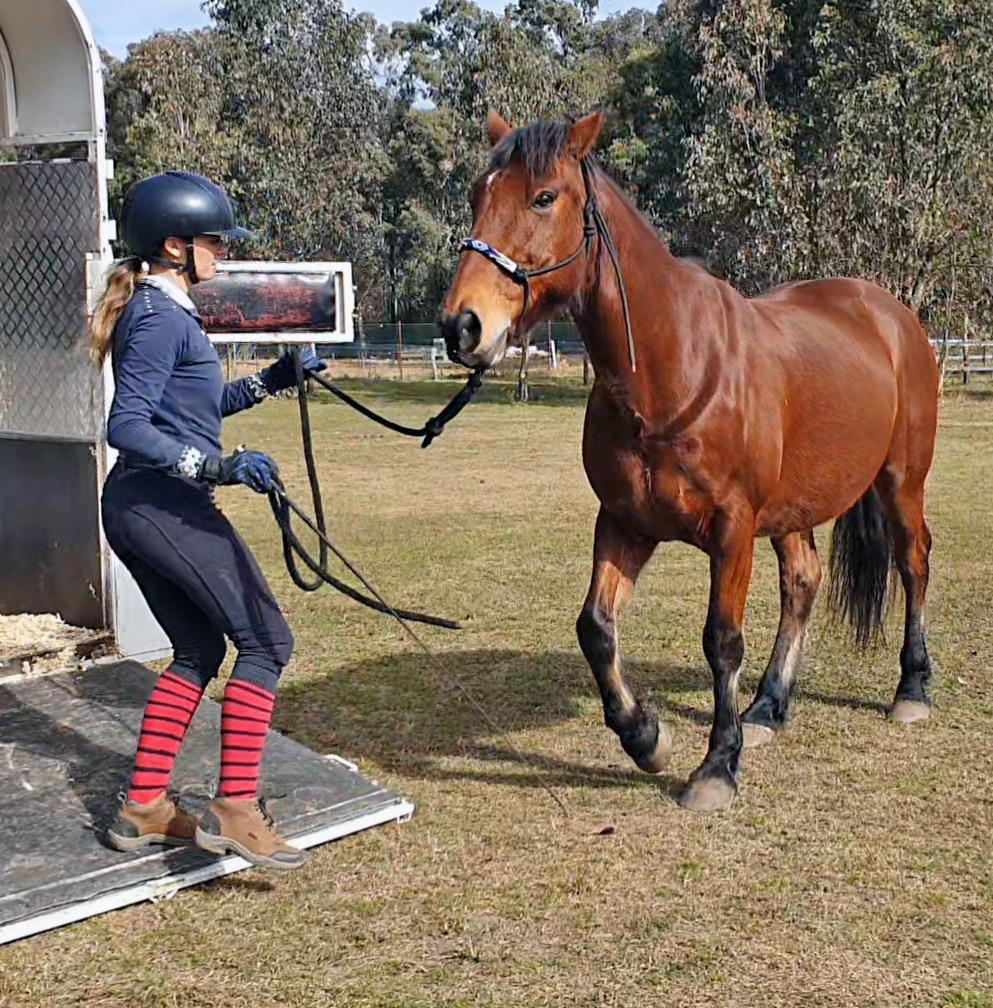
Look at it this way, when a foal is born, they don’t come into this world knowing that when a human eventually climbs aboard and squeezes their sides they are meant to move. We have to teach them this concept through pressure being added and then released. Which leads us to the other term for negative reinforcement - pressure and release. Whatever you call it, this is arguably one of the most effective horse training methods around.
Adding can say yes too
Positive reinforcement is the concept of adding something to reinforce an action or behaviour. You might be clickertraining your horse to step up onto a pedestal. Every time they come close or start to lift their foot, you’d click and offer a food reward in order to encourage them to repeat or build on that action. Here you are adding something - the food - to reinforce the behaviour you want, with the aim of motivating your horse to do it again. Pure positive reinforcement would culminate in your horse being totally free to move around, with you only clicking and rewarding when they choose to offer the action you’re asking for.
Conversely, if you do this training with a halter and lead rope, and you pull your horse towards the pedestal, only stopping the pulling when they come close or start to lift their foot onto it, you’ve crossed back into negative reinforcement.
Blend for success
The good news is positive and negative reinforcement don’t have to be mutually exclusive. Release of pressure, combined with adding food rewards, pats, or verbal praise can help to reinforce the action you want your horse to take.
One method is not necessarily better than the other, but rather both are incredibly useful training techniques that can and should be used together. This could be squeezing your horse with your leg to get them to walk on, then stopping the squeezing when they move (negative reinforcement), while also giving them a soft pat and verbal praise (positive reinforcement).

Understanding how a horse learns and how to tap into this during training is useful across all equestrian pursuits. And anything we’re able to do to make training clearer, easier to understand and more enjoyable for the horse will only serve to strengthen and foster success in our horse-human partnership.
At Equestrian Hub you can watch a video of Christine demonstrating positive and negative reinforcement training techniques.
PREVIOUS PAGE: Christine gives Lyric positive reinforcement by way of a soft pat.
BELOW LEFT: Pressure from whip tapping, the halter, and the lead rope are applied to ask Noble forward.

BELOW RIGHT: To reinforce the action that Christine wants, all pressure ceases as soon as Noble takes a step forward (negative reinforcement).
All images by Oliver Armishaw-Webb

18 | EQUESTRIAN HUB ISSUE 10 • 2022
COACHING

EQUESTRIANHUB.COM.A U | 19
ASK AN EXPERT
David Nash: Equine Nutritionist
We asked DAVID NASH, Director of Nutrition Technology at Kentucky Equine Research, about common products that contain banned substances.
Anumber of common ingredients contain prohibited substances. Some herbal products, including those containing hemp, have the potential to test positive. Hemp oils have a very, very small level of the banned substance THC, and there is a small chance that they could swab.
Responsibility ends with the rider and it’s up to them to be aware of what’s being fed or given to their horse. For example,

Willow tree, or the bark, contains salicylic acid, a precursor to aspirin. Another one is Devil’s Claw root, used as an antiinflammatory and one that a lot of people feed as a raw ingredient, or incorporated in one of several joint supplements. Other things you might not think of include chocolate, cola, or energy drinks. They all have caffeine and/or other prohibited substances in them.
In Australia, ingredients and nutrient declarations are largely unregulated, so
on some products you don’t see a lot of ingredients listed. Equestrian Australia follows the FEI prohibited and controlled substances rules and has lists of these on their website. They break substances up into controlled medication (they’re the ones that have a therapeutic benefit and are commonly used), and substances that are completely banned, with no legitimate reason whatsoever for them to be in a horse. Be aware that if a substance has the same chemical structure or biological effect as a listed substance, it is also prohibited, just as if it were included on the list.
For disciplines or breed associations that do not follow FEI rulings please refer to their specific regulations.
It’s probably also important to consider some of the calming products. Valerian can swab, as can GABA antagonists which act as stimulants. For example, some forages such as Teff hay contain synephrine. Synephrine can also be found in some herbal and nutritional supplements and in the peel extract of bitter orange, commonly used as a flavouring agent. I think if you’re going to consider using any of these it’s important to consult with an FEI accredited vet if you are concerned about competing. You can also go back to the manufactures to ask - but if you’re still unsure, simply don’t use them.
The amount of a substance needed to test positive will depend on the lab. Many modern laboratories can detect nearly down to the molecular level. In many instances the rules state, ‘any trace’, so it may be that one grain of sand in the whole body.
When adding anything new to the diet you must consider the ‘stacking’ or accumulative effect of some nutrients such as cobalt, which occurs naturally in raw feed ingredients and supplements.
ABOVE: The opiate in poppies can produce a positive swab.

20 | EQUESTRIAN HUB ISSUE 10 • 2022
The United Kingdom has a NOPS system, where feeds are tested for naturally occurring prohibited substances. However, in Australia there’s no such system and potential problems could arise from plants like Datura, a weed often found with sunflower seeds. Poppies have been found mixed in with oats, especially in Tasmania. But now that they’re grown in Victoria for medicinal purposes, there’s yet another chance for naturally occurring prohibited substances to get into the horse’s system through no fault of the rider.
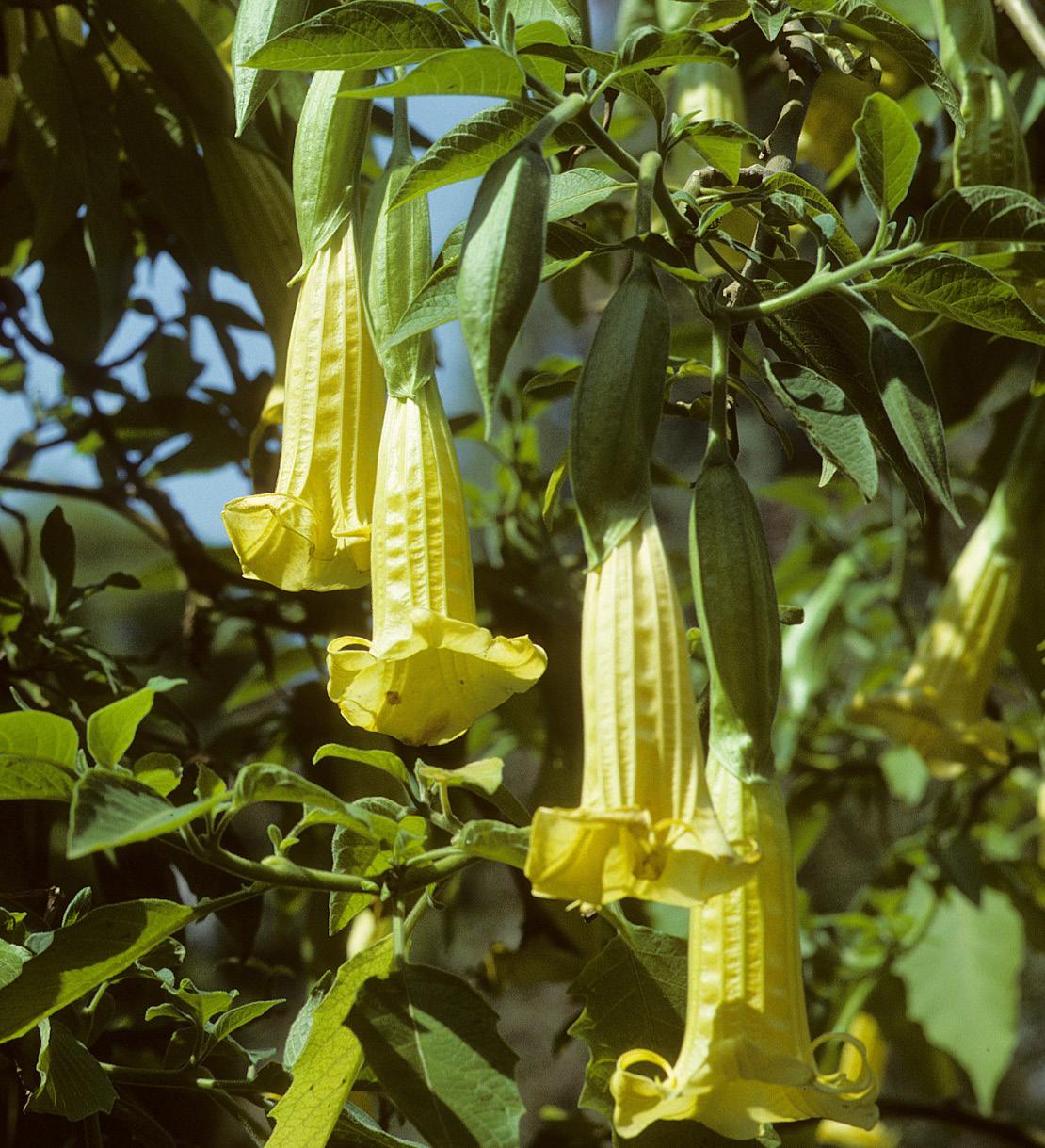

So err on the side of caution! Look at some of our Aussie swimmers who have been banned for having a sports supplement drink and ended up sitting out two or three years of their career through simply not knowing exactly what they are consuming.
And remember, the FEI’s message is clear: If in any doubt do not give it to your horse.
 Datura is a weed often found with sunflower seeds.
Datura is a weed often found with sunflower seeds.
Equestrian Hub Mentorship


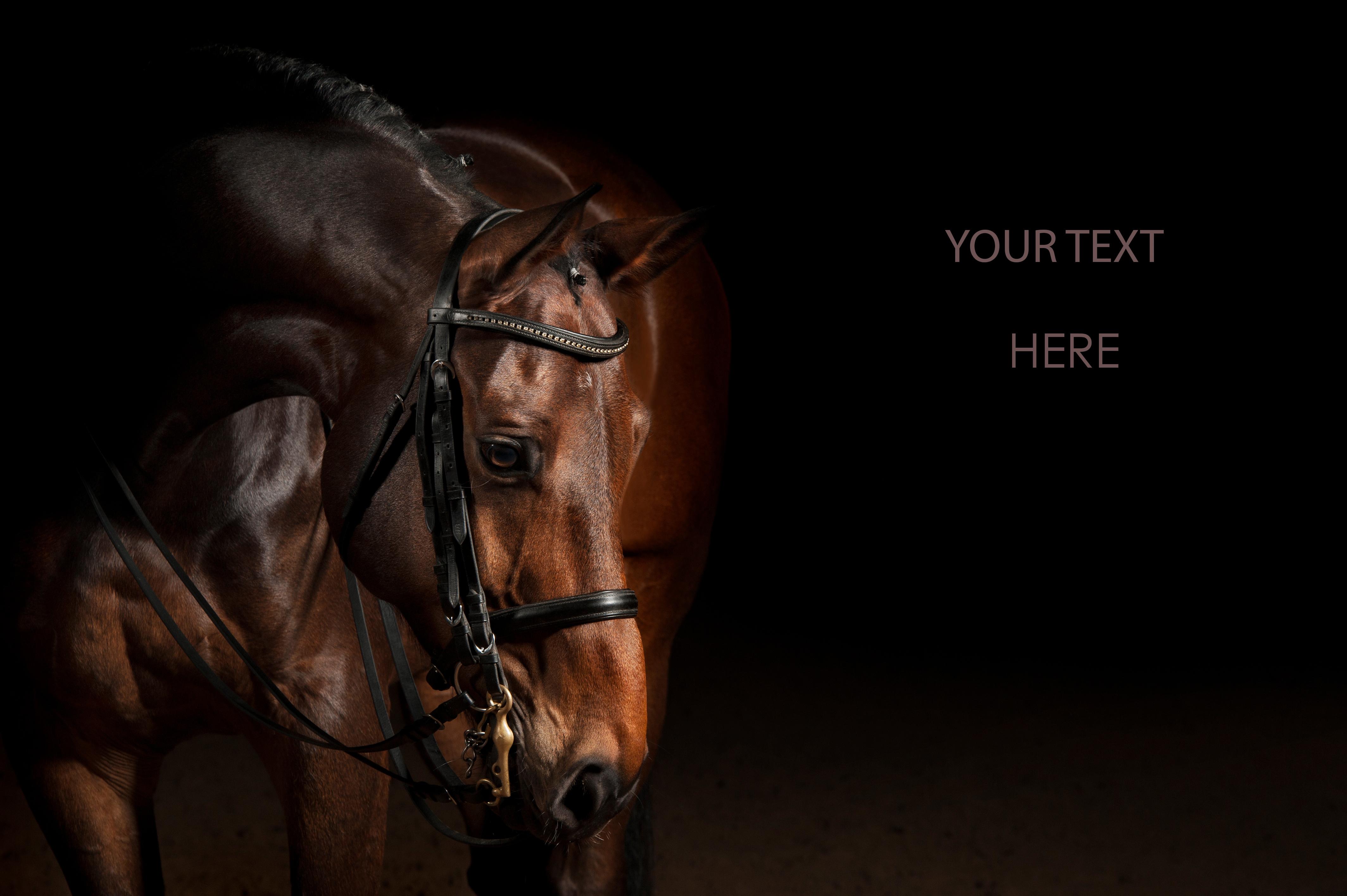
Apply Now Mentor Mentor P r o g r a Pm r o g r a m
Encouraging and supporting riders to achieve their best, and reach their goals. Major Sponsor
The Mentoring Program

Meet our mentors
Alanna Richards
An experienced show rider with a string of Royal Champions and Reserve Championships behind her, Alanna is ideally placed to help you make your show ring dreams a reality. But for Alanna, who has some great mentors herself, it’s not just about the riding and show ring successes; it’s about constant improvement and being a good horsewoman.
Helped by her mum who also loved horses, Alanna started riding at a local riding school when she was four. Throughout her childhood, she did “lots of everything” but loved show jumping. When she was about seven, she became friends with showy people and got Kobe, her first show pony, who she rode and competed with for several years.
Next came a string of quality show horses. She competed at Royals and Grand Nationals until her early teens, when she rode casually for a few years before becoming serious about her sport again.
In 2016 she purchased her “best horse” France, and in 2018 moved to South Australia to train with Chris and Vicki Lawrie, who have a wealth of show ring experience. She has won many titles with France, including Royal Championships, Reserve Championships, Reserve at Grand Nationals, and two Reserves at EA Nationals, along with many other Royal show wins and placings, National and Royal Show Child’s Champions, and HOTY titles.

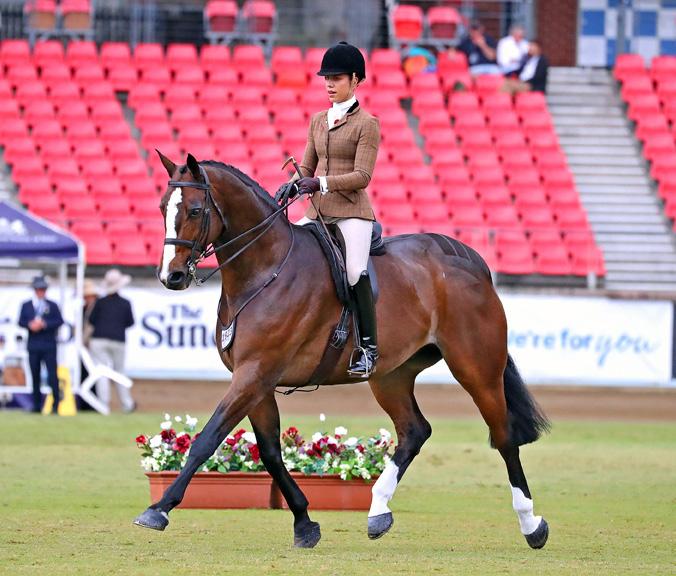
Alanna and France have won Royal Championships, Reserve Championships, and Reserve at Grand Nationals (Image by Lisa Gordon Photography).
Vicki Roycroft
With a work ethic that puts many younger riders in the shade, this self-confessed “not great” Junior rider became an elite athlete and a household name. A three-time Olympian, Vicki Roycroft has won more World Cup Qualifiers than any other Australian rider. She has represented Australia at four World Cup Finals, is an NCAS Level III Show Jumping and Eventing Coach, has previously served as Chair on the EA National Show Jumping Committee and the Australian Show Jumping Riders Association, and was the recipient of an Australian Sports Medal.
One of Vicki’s best known horses was Apache, a 15.2hh Thoroughbred with a dismal racing history who she bought for $500. But Apache went on to win the Grand Prix at Wentworth Park, and was runner-up in the Geneva World Cup.
In 1987, Vicki and Apache won the Rome Grand Prix, one of the most hotly contested events on the planet, against an outstanding field that included Katherine Burdsall and The Natural who a few weeks previously had won the World Cup. That victory made Vicki the first woman and the first Australian to win the title, and propelled Apache into the ranks of the world’s top ten horses.
Today Vicki still competes, produces horses at her Mount White property, and enjoys teaching and coaching as a way of giving back to the equestrian community.
Congo Z, the last horse with whom Vicki won a World Cup Qualifier, at home at the Roycroft Stables in Mount White (Image courtesy Vicki Roycroft).
EQUESTRIANHUB.COM.A U | 23
On being para-equestrian
Lisa Martin is a remarkable para equestrian who has overcome huge challenges. CHRISTINE ARMISHAW discovers what makes her tick.
Lisa Martin’s story starts like that of many other horse-mad kids, riding ponies from a young age and dabbling in a bit of everything from polocrosse to eventing. “Mum and Dad had horses, so it was just in my blood,
something that had to be done,” Lisa recalls. She wasn’t given a saddle, but had to jump on bareback, get down to the back paddock and bring the cattle in. “Mum didn’t want to send me out on a 100 acre property and have to worry

about me falling and getting tangled in the stirrups or something,” laughs Lisa. From playing on ponies and attending Pony Club with her best friend, Lisa started to narrow her focus. Initially, she spent a lot of time chasing red and white flags. “Heath [Ryan] tried to get me eventing, but I just wasn’t gutsy enough and was never going to make anything of being an eventer.”
She then pivoted, turning her attention to dressage with Rozzie Ryan. “I was one of the first students to train with Rozzie when she came to Australia. I spent a lot of years working with her.” Lisa was then lucky enough to have her parents buy her an amazing FEI mount from her aunt. Over the next twelve years, that horse took her all the way to winning multiple FEI championships and secured her places on several national dressage teams, opening up many exciting new opportunities.
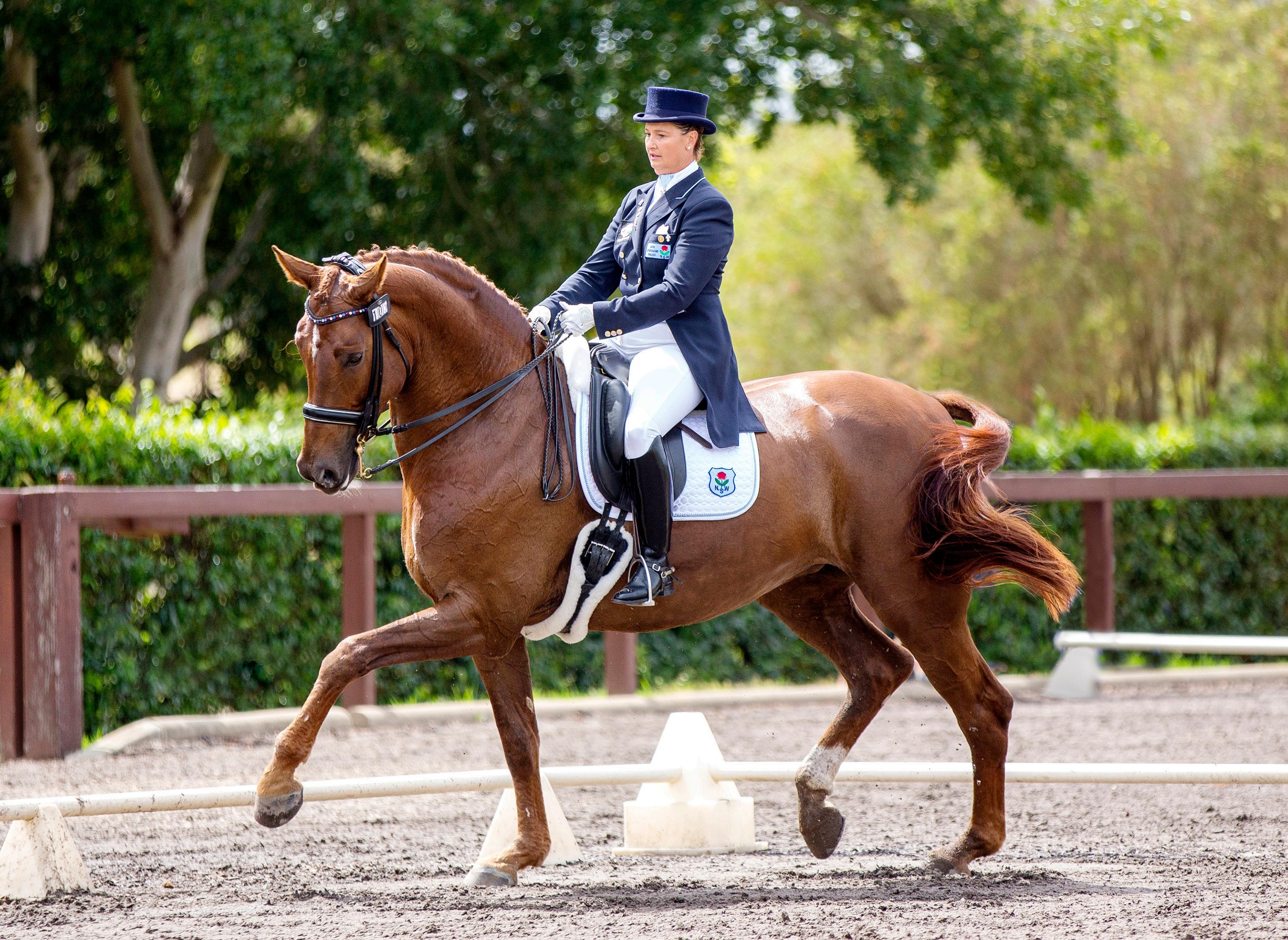
24 | EQUESTRIAN HUB ISSUE 10 • 2022
FEATURE
Ups and downs
Along the way, Lisa’s life got an unexpected and life-changing shake up. “I was training a heap of horses at the time and I came off a young horse. I landed awkwardly on my right leg and the tibia went down through the bottom of my foot and split all the joints.”
Sixteen surgeries were required to save Lisa’s leg, but her ankle was never the same again.
However, not to be deterred, she continued to pour her heart and soul into dressage and doors of opportunity continued to open for her. One year, at the Australian Young Horse Championships, Mary Hanna asked Lisa if she’d like to fill her spot and ride in a masterclass clinic with the German gold medallist Hubertus Schmidt (Mary’s own horse had been side-lined). “So I said yes and did the masterclass without a clue who this person was,” says Lisa. “After the masterclass, Hubertus mentioned that if I ever wanted to head to Germany, he’d love to help me out and teach me a bit more.” Lisa, still baffled as to who Hubertus was, contacted Rozzie to see

if it would be a worthwhile adventure. “Rozzie said ‘are you serious?’, and told me how lucky I was to be offered such an opportunity.” Then, all in a bit of a whirlwind, Lisa got herself to Germany and spent the next twelve months refining her craft there and throughout Europe, riding Grand Prix at some of the equestrian world’s most prestigious dressage events - Hartpury and Hickstead to name just two.
Getting classified
Still riding in able-bodied dressage, it took a while for Lisa to be convinced that she should become graded for a para classification. “While over in England, I watched the Australian Para team compete and their physio at the time helped me out with my ankle because it was giving me a lot of trouble,” Lisa explains. “They kept telling me that I should ride in para dressage, but I thought no, that’s only for people in wheelchairs. I really had no idea what para was.”
Time went on and it was while Lisa was competing at the Australian Dressage Championships that the subject of para

came up once again. “I was told that if I was interested in getting classified, I could have the chance to ride for my country.” She thought about it, decided it could be a wonderful opportunity and three weeks later went to Boneo Park and was classified as a Grade IV para rider.
She did her first qualifying test 24 hours later, then did another qualifier in Sydney and days later was on a plane to South America! Lisa and her spectacular mare, First Famous, made it all the way to the Rio Paralympic Games. They performed very well, but in a somewhat controversial conclusion, missed out on medalling by point one of a per cent to finish fourth. But she’d had the opportunity to ride for her country and a whole new world had opened up.
Resilience
Lisa continued to ride in both able-bodied and para dressage until a couple of years ago. She had been in the arena doing a rein back when her mare got her hind leg caught over the arena kick board. Scrambling backwards, she lost her legs before coming down on top of Lisa. “I ended up breaking my sacrum and my pelvis in multiple places, my pubic bone was smashed, the bottom of my spine was badly damaged, and my internal organs all got squashed,” Lisa tells me.
During a nine month hospital stay, she underwent multiple operations, the first of which was to have steel plates put across from one side of her pelvis to the other. When a short time later the plates became unstable, Lisa suffered through the skin in her pelvic area being degloved, and spent months having fluid drained and new bars added to support her pelvis.
Finally, over a year later, Lisa is back to riding but admits there are new challenges she’s had to overcome:
FACING PAGE: First Famous took Lisa all the way to the Rio Paralympic Games (Image by Allira Fontana Photography).
LEFT: Juicy Wiggle at her first WEG qualifier at Boneo (Image by OneEyedFrog Photography).
EQUESTRIANHUB.COM.A U | 25
FEATURE
“I struggle with sitting trot now and it really frustrates me. Normally you sit in a saddle and tilt your pelvis forward, pushing from the lower back, I can't do that anymore. I have to rely on my lower legs for support.”
However, this resilient rider’s hard work and commitment has continued to pay off. Lisa was elated to be selected for the 2022 FEI World Championships in Herning, Denmark, with her own horse, Juicy Wiggle (although it was touch and go for a while, with Equestrian Australia almost not sending a para team). “I’ll be honest,” she remarks, “it’s just not good enough to win medals, we [Australia] have to do better than this.” But her eye is still on the prize and Lisa has Paris 2024 in her sights.

Just do it Lisa’s advice to anyone sitting on the fence, unsure if they want to ride para or not, is to just take the first step: “Go and get classified, you don’t have to compete at that stage. Then, if you want to give it a go, give it a go!” She points
out that it helps the horse’s education and it’s great for young horses to be exposed to the atmosphere. She also believes that riding para tests makes you a much more accurate rider. “You can get away with fancy movement in an able-bodied test, but the para tests really demand accuracy.”

And you just never know where it might take you. “How many riders can say
they’ve competed at a World or Olympic Championship?” Lisa concludes. What are you waiting for? Now could be just the time to give it a go.
Watch Lisa’s video interview at Equestrian Hub, when she shares her thoughts on para prejudices, and why cross-training is better for any dressage horse.
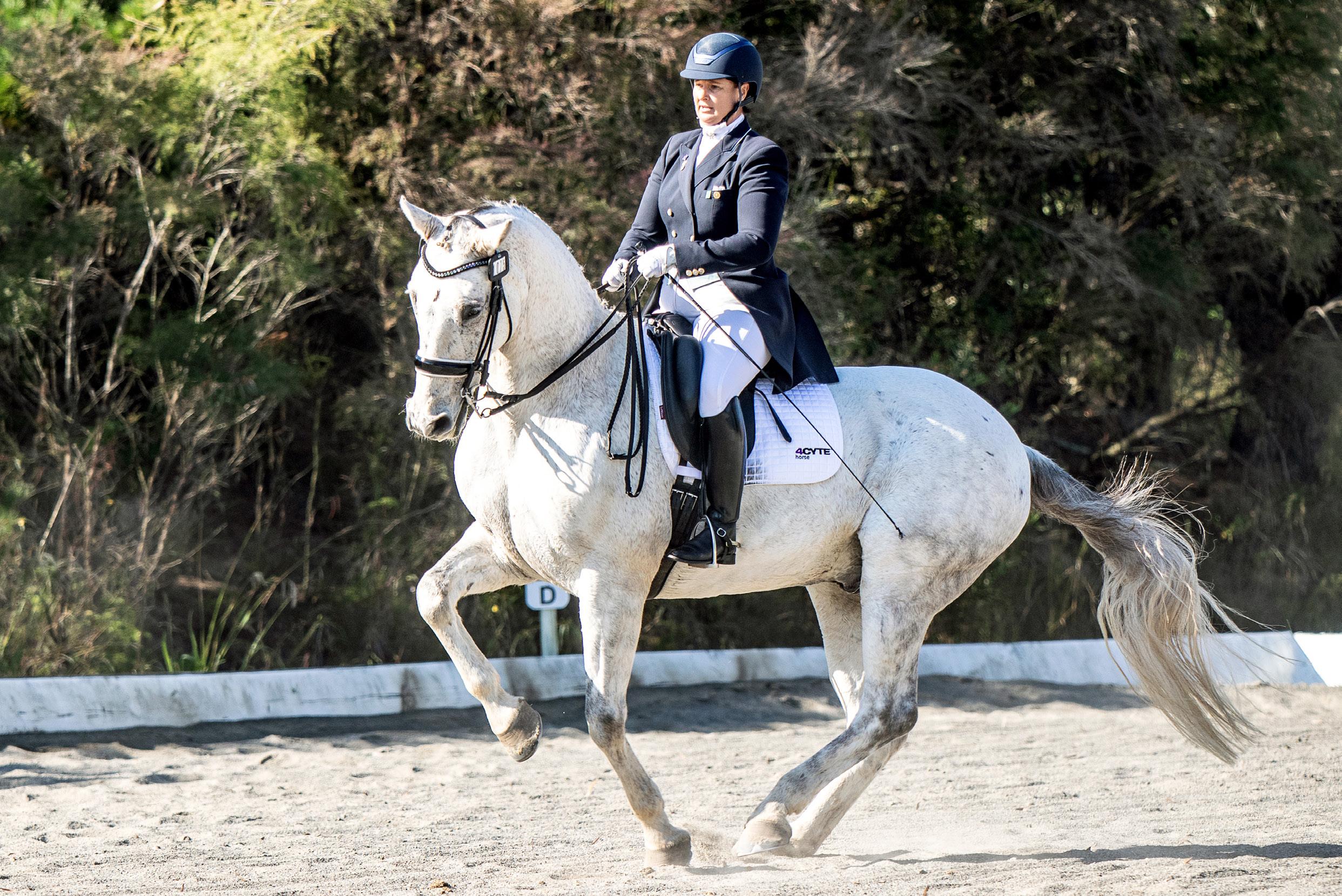
26 | EQUESTRIAN HUB ISSUE 10 • 2022
In Time, Juicy Wiggle’s half-brother, competing at Grand Prix (Image by Half Steps Photography).
At the 2022 World Championships in Herning with Juicy Wiggle (Image © Australian Equestrian Team/Libby Law).






EQUESTRIANHUB.COM.A U | 27 BODY PROTECTOR THE MOST COMFORTABLE PROTECTOR ON THE MARKET Cutting edge comfort & flexibility achieved through revolutionary SegTek construction. Channelled airflow hole heat release system. Slip it on, zip it up and fit for ease of use. HELMET RANGE FEATURING MIPS TECHNOLOGY The MIPS Brain Protection System features a low friction layer which allows 10-15mm movement in all directions designed to redirect rotational forces, which can reduce the risk of brain damage. AUSTRALIA: Zilco International Pty Ltd [tel] +61 2 8765 9999 [e] sales@zilco.com.au NEW ZEALAND: Zilco NZ Ltd [tel] +64 3 381 0270 [e] sales@zilco.co.nz Available online and at from participating saddlery outlets in Australia and New Zealand. Exclusive to Zilco International. IF IT’S BRANDED ZILCO, IT’S BRANDED QUALITY. DISTRIBUTED BY VISIT US: STAND 452 THE EPSOM PAVILION & GET YOUR $50 VOUCHER To spend on any Champion Helmet or Body Protector zilco.net
HANGING TOUGH
Self-Carriage
Self-carriage: what’s it all about?

Top dressage rider NICOLE TOUGH explains what it is and how to achieve it.
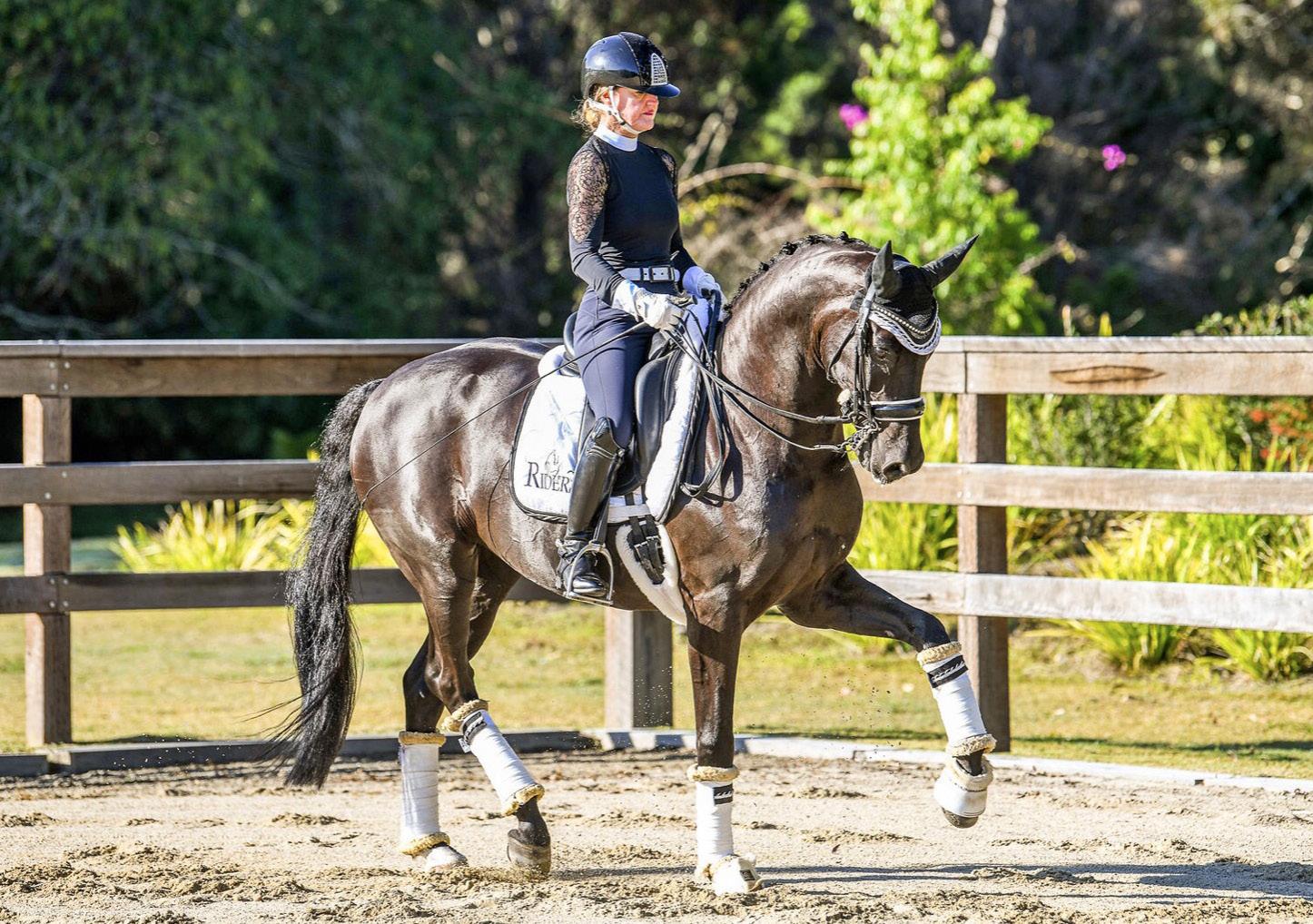
When the rider can slacken the reins for at least five to six steps (uberstreichen) and the horse doesn’t become longer or faster in the steps, and remains in the same frame – this is self-carriage. I was fortunate to both take lessons from and to watch lessons with FEI Judge General Stephen Clarke, who said to his student:
“Let go. Take the water wings off, and see if they can swim for themselves.”
In Australia, we call them floaties, but what a wonderful analogy it is. We have to give our horses the chance to self-carry. If we always keep the floaties on, we’ll never teach them to swim on their own.
Here’s the thing: horses can use their muscles to carry themselves; or they
can use their muscles for evasions. It is the rider’s job to make self-carriage the more desirable option. It’s not a happy picture for the horse to be pulling the rider around the arena. In short, the horse doesn’t need to be a freight train. If they are, it’s what they understand to be acceptable.
Self-carriage is a concept that has to be understood and trained by both rider and horse. To achieve it, riders need to understand that horses learn not when pressure is applied; but when it is removed. This removal of pressure is the horse’s light bulb moment; and rewarding the right moment is crucial to learning self-carriage.
When a rider stays on the rein for two seconds or longer (unless it’s a correction), then they are inadvertently giving the horse the opportunity to lean on the bit. Something Steffen Peters once said in a masterclass has stayed with me: the rider should never do anything in the saddle out of a habit. In other words,
28 | EQUESTRIAN HUB ISSUE 10 • 2022
every aid has to be applied with a reason and to achieve a targeted response.
So, never pull or restrain through the left, right or both reins for no reason, or worse still, to produce no result. Never just kick to have the next step exactly the same. This actually creates a numb horse. If the rider brings any pressure to the horse, and no response is triggered, the rider needs to increase the intensity of the pressure until the desired response is offered - then immediately remove the pressure. This should equal that light bulb moment.
Another point to remember, and it’s something I often see: the rider inadvertently allowing the horse to be heavy on one rein, or both, and then 20 minutes into the training session, when their hands and/or arms are sore, they say to the horse ‘not anymore, this is too heavy’. But guess what? It was too heavy the moment that it was. If a rider puts up with the wrong contact for any length of time, it becomes much harder
to convince the horse that it’s not okay.
They don’t understand if it’s okay for 20 minutes, and then it’s not. It was the great Reiner Klimke who said that timing is crucial if you want to have a conversation with your horse.
The very moment the horse looks for support on the rein is a mistake, and every mistake is a perfect training opportunity. Don’t miss the opportunities, or your horse will learn that the rein is there for them to lean on – and you, the rider, are back to square one. Groundhog Day! The horse must carry their own head and neck.
To achieve self-carriage, the rider has to create the reason for the horse to let go of the rein. Use a holding/correction rein, make a difference with your leg, and soften the rein to its ideal at the right moment, and the horse will learn to self-carry and develop their topline.


Please note that when we use the rein, we only resist with it - like side reins.
We must never pull. And the stronger you have to resist, the softer you have to become after the correction. And a second note: whatever amount of rein is required to make a difference, the leg is required to match - never rein without equal or more leg.
Having said all of this, there are some horses that like a bit more contact than we might otherwise like. These horses need this weight for a bit of security, but the weight should never be so much as to create strain on the rider. That sort of riding builds the riders muscles, not the horse’s.
In conclusion, self-carriage is not negotiable. When you have the horse through and on the hind leg, everything will work, anything is possible, and there is no better feeling. Happy training!
FACING PAGE: Nicole and FEI horse Ferragamo demonstrate self-carriage (Image by Christy Baker).
ABOVE: As Nicole softens the rein, five-year-old Leopold learns to self-carry (Image by Christy Baker).
EQUESTRIANHUB.COM.A U | 29
FEATURE
The questions you never asked
Sheath cleaning is essential for your horse’s well-being, so REBECCA NADGE spoke with Kara Vasylenko to learn more.
While it can be an uncomfortable subject for some owners, cleaning your horse’s sheath is a vital part of their management, and there can be wideranging implications if it isn’t carried out.
Kara Vasylenko from Pony Privates
Sheath Cleaning explains that horses

in the wild were able to naturally clean themselves, although they were also prone to infection. Domesticated horses are now kept in far more sterile environments, but geldings are obviously not using their ‘bits’ for breeding, and this can lead to problems. “They can get quite a lot of build-up and they can get infections,” Kara explains.
“They have glands and secrete through them. Those secretions mix with the dirt in the environment - and whether that’s in a stable or paddock there’s always going to be dirt. Then you have the natural sloughing of the skin, which builds up, joins together, and creates a nice little package of dirt.”

Smegma, a combination of natural secretions including skin oils, shed skin and moisture, can create a solid clump, forming a ‘bean’ inside the tip of the penis and causing the horse a lot of discomfort. The bean needs to be removed manually. If left, it can disrupt the horse’s urine stream.
In terms of the cleaning process, Kara has found most horses do not need to be sedated. She works to make the horse as comfortable as possible with her presence, and usually starts by patting them between their legs and picking up their legs. “I’m just making them aware that I’m there doing something, but I’m not there to hurt them,” she says. “You’re obviously in a bit of a precarious spot to get kicked,
30 | EQUESTRIAN HUB ISSUE 10 • 2022
which has happened. Most horses are tense and don’t like it. Then by the end some horses like it a bit too much and other horses just become quite tolerant of it.”

She is also careful to use warm water instead of cold and notes that removing the bean is usually the part that most horses find uncomfortable. “I use a lot of lubrication and I start to get the bean a bit more mobile. Depending on the size of it, I can sometimes just pop it out quite quickly - almost like a pimple - but other times it’s more solid like a pebble and I have to break it up internally so it becomes a bit smaller and not painful to get out. Using enough lubrication and dedication, that works quite well.”
Kara warns that having the sheath cleaned too regularly can also pose problems, as it can disrupt naturally occurring bacteria. She notes that some dirt or grime is normal and the real cause for concern is excessive build up, with most horses needing to be cleaned once or twice a year.
While she hasn’t come across any particular breeds or types that need more maintenance than others, she has noticed that paddocked horses kept in more natural environments may have more capacity to clean themselves naturally. “Stabled horses are often quite dirty, but also their owners are a lot more aware of it and they call me out a bit more,” she explains. “It mostly depends on how dirty they are, how much build up there is, and how much their glands secrete, because every horse is so different.”
If the sheath and bean are not cleaned out it can have serious implications for the horse, both in terms of hygiene and also behaviourally. “I had one horse that bucked and was kicking at himself and he had an enormous bean,” Kara recalls. “When that was taken out he actually stopped his bucking and kicking behaviours, and was quite comfortable.” She came across another case where
FACING PAGE: Sheath cleaning may be an uncomfortable subject, but it’s a vital part of your horse’s management.

ABOVE: If the sheath is not cleaned and the bean removed, it can have implications for your horse’s health and behaviour (Image courtesy Pony Privates).
she began a sheath clean but found a thistle stuck in the tip of the urethra.
“That horse had a really bad rearing problem. He had to be sedated and have the thistle removed by a vet.”
Owners will often tell her that there has been a marked change to the horse’s urine stream after a thorough sheath clean. As geldings typically retract the penis into the sheath, their owners may not be aware of any potential problems. Kara recalls finding a cancer during one sheath clean which had gone undetected. “Because it had a growth
on it, he never really stuck his penis out and the owner hadn’t picked up on it,” she says. “The vet had to follow through with that.”
In another case, a horse was secreting large amounts that had a strange smell and his owners called her out again just a month after the first clean. “I told them that that wasn’t normal, and that I thought the horse might have an infection,” she says. “And he did, he ended up needing a course of antibiotics.”
Kara advises owners to begin (or continue if they already are) hosing the
EQUESTRIANHUB.COM.A U | 31 FEATURE
opening to the sheath as part of regular maintenance. All horses in work will kick up dirt around that area regardless of the surface they are working on. “Plain water is what I go to,” she says. “Some people think an antibacterial might help to keep the area clean - but no, no, no!” she laughs. “You don’t want to upset the bacterial balance. Just the cleaning of the sheath itself - not even the bean but
just a general clean – can help minimise any bacterial overgrowth. In human skin we also have our natural bacteria, but in certain environments some bacteria will take over, and it helps to get back to that nice, healthy equilibrium. And it’s the same with horses. Overall, a general clean is a hygienic and healthy practice to keep up with.”
The bean forms inside the tip of the penis and causes the horse discomfort (Image courtesy Pony Privates).


Kara has owned geldings for most of her life and sheath cleaning was just another job that had to be done. But it wasn’t until people started to ask her if she would clean their horses for them that she realised that none of her friends, or owners on the properties she agisted on, were carrying out sheath cleaning.
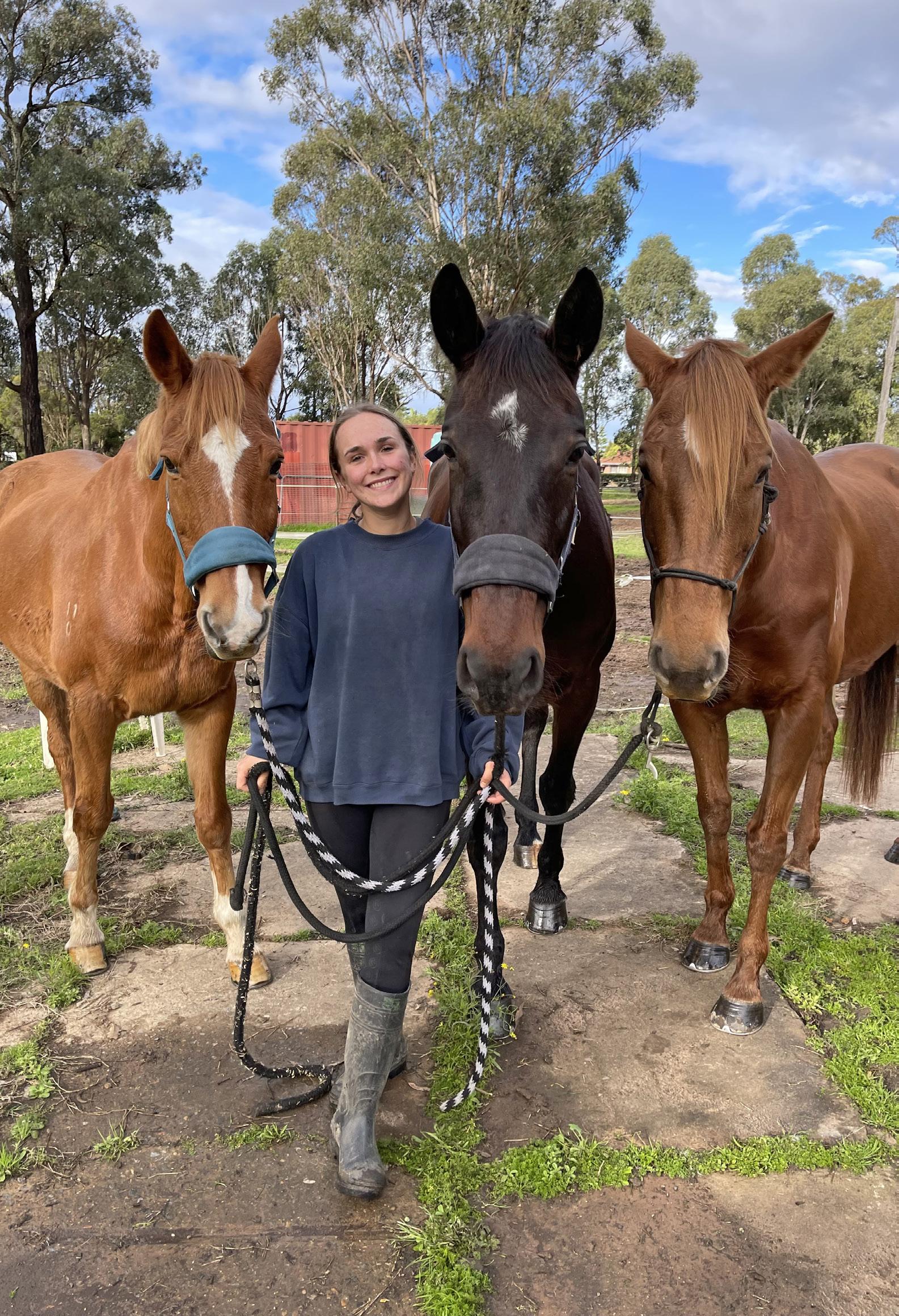
“The smell is quite intense, the actual flakes and the grime that comes off, and the bean itself - a lot of people are quite put off by it, and I don’t blame them. I’ve just learned to zone out,” she laughs. “It might sound strange, but I think a lot of people don’t want to clean their own horse, and I can totally understand them wanting someone else to do that job.”
She has noticed that in recent years awareness around the importance of sheath cleaning has increased, which is a positive. “There seems to be a rise in the number of owners becoming interested in that aspect of their horse’s health,” she says. “I think lately, especially during COVID, a lot of people are spending more time with their horses and are taking note of their behaviour.”
So, no matter whether you or someone else does the job, there can be no doubt about it - sheath cleaning is an essential part of caring for your horse’s health and overall well-being.
Kara can be contacted through her Pony Privates Facebook page.

FEATURE 32 | EQUESTRIAN HUB ISSUE 10 • 2022
Kara and three of her horses (Image courtesy Pony Privates).
NEW! Cough Mixture
Relieves coughing in horses and cattle.
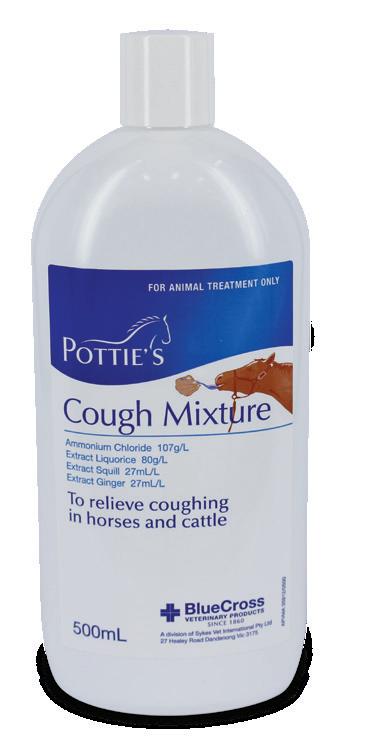
Helps with secretion or expulsion of phlegm, mucus, or other matter from the respiratory system.
Nervine Powder
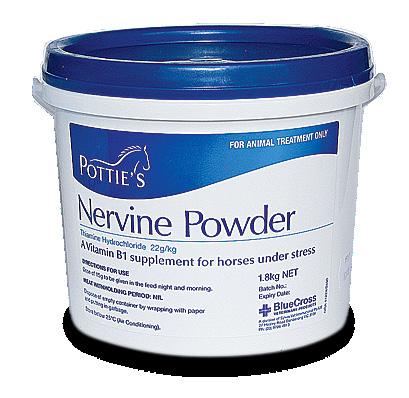
Vitamin B1 supplement for horses under stress.

Nervousness, stress and poor performance can be a result of deficiency in essential vitamins, poor quality feed, transporting, after sickness and during periods of high performance work.
White Ointment
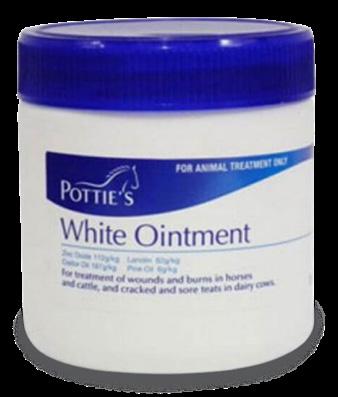

Zinc based.
Allows rapid healing, is a UV protectant and protects against invasive dirt and bacteria.
Isogel
Muscle, joint and tendon pain relief.
Produces a heating effect when rubbed into sore areas. For deeper pain, Electric Oil is recommended.
Use under wet or dry bandages.
Green Ointment

Anti-fungal and anti-bacterial.
Used on greasy heal, treats ringworm and can be used for minor cuts and abrasions.
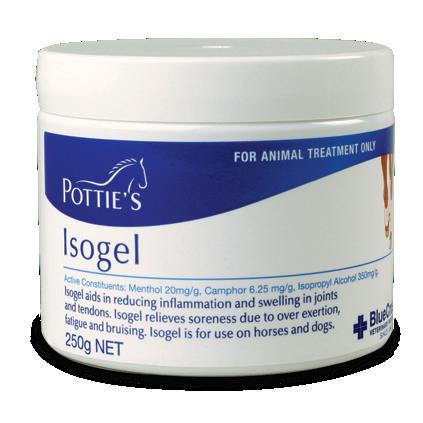
Pottie’s Equine – An Australian Legend Since 1890. Contact us for your nearest stockist 03 8792 3000 sales@sykes.net.au WWW.SYKES.NET.AU
Lameness
If your horse becomes lame, investigation into the cause is vital. We spoke to DR DOUG ENGLISH and asked for some advice.
While this might be stating the obvious, the most common causal factor producing lameness - defined as ‘an abnormal stance or gait caused by either a structural or a functional disorder of the locomotor system’ – is pain. However, the big question is what is it that’s causing the pain?
Generally speaking, most lameness originates in the forelegs, usually due to an issue below the knee, while a smaller

percentage of cases affect the hind leg from the hock down. However, the limbs are by no means the only location that may need investigating; lameness can also be associated with the spine, neck, head, hip or shoulders.
If you can’t find an obvious cause for the lameness, diagnosis, followed by a course of treatment (which might involve a vet, farrier, or both) should be arranged promptly so that your horse’s pain can be relieved.
Investigating the cause
Depending on the cause of the problem, treatments for lameness vary greatly – and identifying the cause is often more difficult than it might sound. Some horses can be lame in multiple limbs, and the reasons why they might be lame vary considerably. Some of the usual suspects include:

Injury/Trauma: If this is the problem, there are normally visible signs. Look for any bleeding or swelling. If there’s bleeding, the injury should be appropriately treated. If you discover a swelling, gently probe by applying finger pressure, which will prompt a reaction from your horse if this is the site of their discomfort.
Infection: Other than occurring as a result of an injury, infections associated with lameness are frequently located in the hoof. This can be quite common in wet conditions when the hoof area softens, allowing sharp objects such as stones to breach the protective barrier and create conditions ripe for the growth of bacteria and potentially an abscess, which is an immensely painful condition. If a hoof infection is present, your horse will react to pressure from a hoof tester,
34 | EQUESTRIAN HUB ISSUE 10 • 2022 VET VIBES
or when the hoof is tapped with a small hammer

Arthritis: Associated with age, a previous injury, or an unbalanced diet (in particular a lack of calcium, which can occur with high grain diets or grazing on high oxalate tropical pasture), arthritis may be present in multiple joints, or even in the horse’s spine. Although it is often difficult to pinpoint its exact location, if in a joint there is likely to be swelling and asymmetry, and an accumulation of joint fluid which can cause pain and heat in the area.

Cancer: Osteosarcoma is a bone cancer occurring mostly in older horses. It begins insidiously and increases gradually, eventually producing obvious swelling in the affected bone. Diagnosis is by x-ray.
Genetic malfunction: This can include problems such as patella lock in the hind leg; cervical vertebral malformation (Wobbler syndrome) which constricts the spinal vertebrae; and malformations of the vertebrae. All of these conditions produce obvious gait abnormalities.
Identifying lameness
The trot is the ideal gait for identifying lameness, particularly if carried out on a hard surface. If possible, have someone lead the horse at trot, both away from you and back towards you. Also watch from the side as they are trotted past.
The most easily recognisable sign associated with forelimb lameness is the head bob. The horse’s head and neck lift when the lame leg strikes the ground and drop as the sound limb takes their weight.
In the case of hind leg lameness, the sacral rise – in which the pelvis on the affected side lifts as the lame leg strikes the ground and drops when the sound leg takes the horse’s weight - can indicate in which limb the horse is lame.
A horse might also drag the toe of a lame hind leg. Have someone trot the horse directly away from you and watch to see whether the up and down movement of their hips is even or otherwise.
Both the head bob and the sacral rise help the horse to reduce stress on the lame limb and thus avoid additional pain. If you’re still unsure after the horse has been trotted up, lameness in both the fore and hind limbs is usually more noticeable when the horse is worked on a circle with the suspect limb to the inside. To locate the region accurately a veterinarian places local anaesthetic into nerves that supply specific anatomical areas, and a return to soundness will indicate the region.
What’s next?
Other factors to consider in a diagnosis are whether the lameness is persistent (ongoing); intermittent (it comes and goes); static (the severity doesn’t
change); progressive (becomes noticeably worse); and whether it improves with rest.
That’s quite a lot to consider, and even vets can at times have difficulties in identifying the cause of lameness. Fortunately, they are skilled in observing the horse in their entirety for further clues. They also have x-rays, scanning equipment and other diagnostic tools such as infrared photography (which pinpoints abnormal heat areas) at their disposal. So, while your horse’s lameness may simply have been caused by a stone bruise, if in doubt seek expert help – the earlier treatment begins, the better.
ABOVE: Vets are skilled at identifying causes of lameness and have a variety of diagnostic tools at their disposal.
FACING PAGE: Most lameness originates in the forelegs, while a smaller percentage of cases affect the hind legs.

EQUESTRIANHUB.COM.A U | 35
VET VIBES

CC



EQUESTRIANHUB.COM.A U | 37
is a US-based reference that horse feed companies and nutritionists worldwide are very familiar with.

Who decides what your horse eats?
Have you ever wondered who really decides what your horse eats? Equine nutritionist HOLLY MILLS has some interesting insights.
We are all familiar with nutrition tables on the back of feed bags that tell us how much of that particular feed a horse needs in order to receive their required daily vitamins and minerals. But who is it that crunches the numbers and puts hard figures around these requirements?
You will be comforted to know that the figures are not plucked from thin air, but are drawn from expert analysis and scientific research. The National Research Council of the National Academies (NRCNA) publishes its recommendations in its aptly named Nutrient Requirements of Horses. This
The NRCNA examines the varying nutritional needs of horses as they develop, perform and age. They also offer guidance on common disorders that are influenced by nutrition, as well as environmental factors.
In the case of a complete feed (one with a balanced nutrient profile that satisfies the horse’s daily requirements), feed companies typically formulate a blend of ingredients that meet the nutrient needs set out by the NRCNA. But how does a feed company know what nutrients are in their feed? Reputable feed companies will use laboratory testing to scientifically assess a product’s nutrient profile. This data forms the basis for the nutrient table that should then be printed on the product’s packaging.
Basic dietary building blocks A horse’s nutrient requirements fall into six key categories:

38 | EQUESTRIAN HUB ISSUE 10 • 2022 NUTRITION
As far as quantities go there is no magic, one-size-fits-all figure for these categories because horses are individuals with individual needs. Their physiology, age, breed, workload and health all affect how much of each nutrient they require to maintain optimum health. And of course, in each of these key categories (with the exception of water), there is a sub-set of different nutrients (vitamins being a good example) that each perform specific functions. The complexity of horse nutrition is precisely why the role of equine nutritionist exists!
Common diet missteps
If your feed room is starting to resemble a feed store, then it may be helpful to get an expert opinion on which products are really doing the heavy lifting in your horse’s nutrition.

Sometimes the expectation is that a nutrition advisor will keep adding products to the diet, but often the reverse is true. Diets can be overly complicated, in which case our advice is to simplify the horse’s current diet and reduce the number of products blended into each meal - because nutritionally speaking, some products perform the same function (for example, a vitamin supplement added on top of a feed that already contains the required quantity of those vitamins). At best, the horse excretes excess vitamins without using them. At worst, some vitamins and minerals have an adverse interaction when fed in excess.
The diet that under-delivers
Another easy misstep is to feed a complete feed at less than the recommended rate (the rate that sets out the quantity needed to supply the horse with the correct amount of vitamins and minerals). So, if an owner halves the amount of daily feed, then the horse is being short-changed. We see this occurring in seasons where the horse
has become over-conditioned and the natural inclination is to reduce the hard feed. Whilst it is essential to keep a horse from becoming over-conditioned, there are ways to achieve this goal without depleting the horse’s essential nutrients. Easy solutions to this problem include:
Topping up the reduced ration with a low-dose vitamin and mineral concentrate; or

Gently transitioning to a different complete feed that is less conditioning and therefore seasonally more appropriate.
Additionally, most feed companies accommodate steps up and down through their various formulations, so that it is fairly simple to ‘feed the need’. Seeking expert help can help you to navigate seasonal fluctuations.
FACING PAGE: Exploring your horse’s nutritional requirements and feeding options is time well spent.
ABOVE: A horse’s workload affects the quantity of each nutrient needed to maintain optimum health.
EQUESTRIANHUB.COM.A U | 39 Proteins Fats Carbohydrates Vitamins Minerals Water
NUTRITION

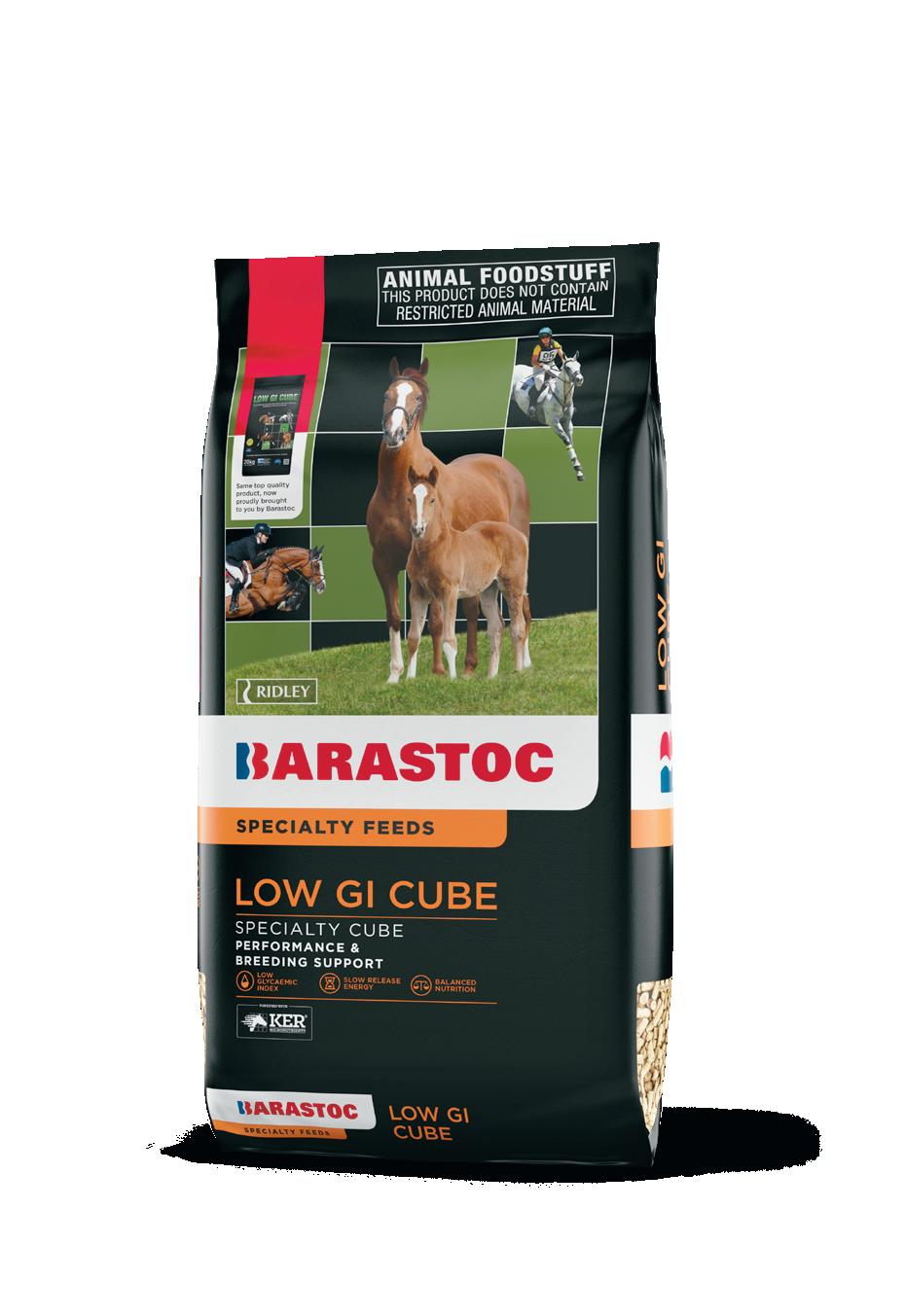
Just like a growing human, a growing horse needs to be supported with a feed that’s gentle on their stomachs and is packed with healthy minerals. Barastoc Low GI Cube is a low glycaemic horse feed for young and growing horses that is formulated with KER Buffered Mineral Complex™ (BMC) for bone development. It also includes multiple Superfibre™ sources, and is balanced with organic trace minerals and naturally derived Vitamin E. Set your young stock up for the perfect start and try Barastoc Low GI Cube today. IAL E For more information on any of our products, call 1300 666 657 or visit www.barastochorse.com.au NATURALLY BALANCED FOR GROWING HORSES. Barastoc Low GI Cube is a completely balanced, low glycaemic diet for young horses that is easy to digest and reduces the risk of Developmental Orthopaedic Disease (DOD). NO. 1 stud feed Australia’s brand* *Number of thoroughbred mares and stallions registered in 2022 fed Barastoc. Source Thoroughbred Breeders Australia.
Consult an expert to ensure your brood mare is receiving adequate nutrients.


The latest and greatest?
New feeds and supplements enter the market all the time. But just because something is new does not mean it is necessarily more advanced than what’s already on offer, or that it’s better suited to your horse. There are plenty of feeds that have stood the test of time and are still worthy of consideration for inclusion in your horse’s diet.
If you see a new feed at the feed store, read the label to find out what its purpose is, and then compare the ingredients to those you are currently feeding. A wise move is to check with an equine nutritionist for their opinion on whether or not the new product measures up to your current feed, or offers any additional advantages.
The feeding guide
The feeding rate on feed bag labelling is an estimate to guide you towards the correct quantity based on your horse’s weight, workload, and, in the case of a feed for development and/or breeding, their stage of life.
There is only finite space on the labelling, which means there’s typically not enough room to drill down to the


feeding rates that might be better suited for specific breeds or for health concerns. If you feel that your horse is not responding to a feed as expected, then an equine nutritionist may be able to help determine what is missing, specific to your horse’s individual needs.
Getting the best value
There are many factors that influence the feed owners choose for their horse and budget undoubtedly comes into play for many of us. But there is a smart approach to getting the best value from your feed bill.
A low-cost feed with a high feeding rate might end up to be more expensive overall when compared to a more concentrated blend with a lower feeding rate. It comes down to a cost per day comparison that is not too difficult to tackle with the help of a calculator. Happily, most mobile phones have an in-built calculator so you won’t run the risk of being mistaken for an accountant at the feed store!
There is also a more obvious question with low-cost feeds: why are they less expensive? Check the ingredients to see what may have been left out in order to
produce a feed with a budget price tag. This is not necessarily a red flag, more a heads up that you might need to include a vitamin and mineral supplement to balance your horse’s ration.
As far as feeds go, there are standouts in the lower price range that might suit a variety of horses. This is when consulting with an expert can help pin down exactly what your horse needs specific to their age, environment, workload, and condition - not to mention any inclination towards fizzy behaviour! Your consultation might reveal benefits to scaling up to a better feed formulation, or it might give you the confidence and peace of mind that comes from knowing that what you are currently feeding is on target.
You won’t know if you don’t ask, and there are many free advice services available. Make a start today on your horse’s nutrition journey. It’s a fascinating area of their well-being that is well worth the time spent exploring.
Holly Mills (BAnimSc) is the equine nutritionist with Mitavite. Visit their website to find out more about their free nutrition consultation.
EQUESTRIANHUB.COM.A U | 41 NUTRITION
TIPS
Tips for a double bit transition
How do you know when to transition from one bit to two? RACHEL ROAN spoke to elite dressage rider and Equestrian Hub mentor David Shoobridge.
Introducing your horse to a double bridle can mark a milestone in your training together. But adding a second bit into the mix has to be done with great consideration, care, and patience. It’s important that your horse is at the stage in their education where they are working well and are established in a snaffle bit. If this
foundation is solid, the transition to two bits should be seamless. “If your horse has had any anxiety around a single bit, don’t be in a hurry to move to a double,” is the expert advice from elite dressage rider and coach, David Shoobridge. “Sometimes the long road gets you there the fastest.”

David explains his thoughts behind setting a horse up for a successful transition to a double bridle, emphasising the importance of a correct foundation: “The snaffle bit is always the baseline for communication. We want our horses to work positively into the contact. When you touch the rein, you don’t want your horse to be fearful of it, nor do you want them to take advantage of it. The horse needs to draw from our legs. A good contact comes back to a good position, and a good go and stop aid.”
Ensuring your horse works forward into the contact to carry themselves and their rider is a foundational step that needs to be in place before you consider transitioning. “It’s really vital that people understand the basis around establishing a good connection,” he reiterates. Before starting on lateral movements, David recommends that the next step should be to develop correct transitions between the gaits, all while ensuring the horse is drawing forward into the snaffle bit. “It’s important that before we introduce the double bridle, the horse

42 | EQUESTRIAN HUB ISSUE 10 • 2022
TRAINING
is working confidently and accepting a snaffle bit. And it’s really important that the rider, when introducing the double bridle, is not using it as a tool for discipline or control,” he adds. “If you feel you can’t ride your horse in a snaffle, then you need to revisit some of the basic applications of your training.”
Part of David’s approach to familiarising a horse to a double is to ride four days a week in the snaffle, and one day a week in the double. “When I introduce the double bridle, I have a very easy ride the first day, sometimes even just at a walk to let the horse adjust to the feel of two bits in their mouth.” He includes walks out of the arena, stretching, working at a walk, focusing on bend, and helping the horse to feel and accept the different pressure, adding that each horse and rider will develop their own plan.
The double bridle consists of the bridoon bit (snaffle) and the curb (Weymouth). When correctly fitted and accepted, the horse should still draw

into the contact on the snaffle rein, with the curb acting as a lever by placing pressure on the poll. “The lever action of the curb will round the horse’s frame. It doesn’t really benefit any movement, it just refines the connection,” David says. “Going from a snaffle to a double bridle is not going to change how you do a flying change or half pass,” he explains. “It might allow for more control, or concise and precise timing, but it all comes back to the person at the end of the rein.”
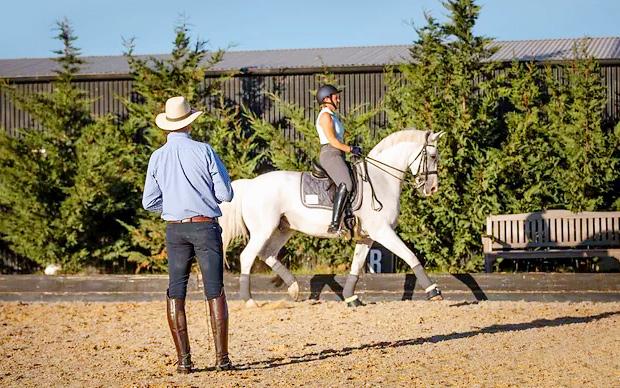
He believes it’s important for the rider to understand the purpose of the curb bit and how it works. “The curb bit puts pressure on the tongue and the bars of the mouth, the chin, and the poll. The horse isn’t going to want to move out of that frame, and there’s an element of pressure and release to maintain the frame you’ve got the horse in.”
David says it is critical to remember that the horse has not felt this pressure before, and riders should focus on encouraging the horse forward to the snaffle bit. However, the curb bit and rein should not be totally loose either, which might result in the bit bouncing around in the horse’s mouth. “It’s always good to have a consistent soft, light contact. Read the horse. Read their mannerisms and see if they’re happy and responding to it. If the transition from snaffle to double has gone well, it will be seamless,” he remarks.
If the horse is not adjusting well to the double bridle, it’s likely you will see
EQUESTRIANHUB.COM.A U | 43
ABOVE: Some of David’s students introduce their horses to the double in a lesson. FACING PAGE: Froth from saliva in the mouth occurs when the horse accepts the bit. All images by Jessica Atkins Studio
TRAINING TIPS
If you feel you can’t ride your horse in a snaffle, then you need to revisit some of the basic applications of your training.
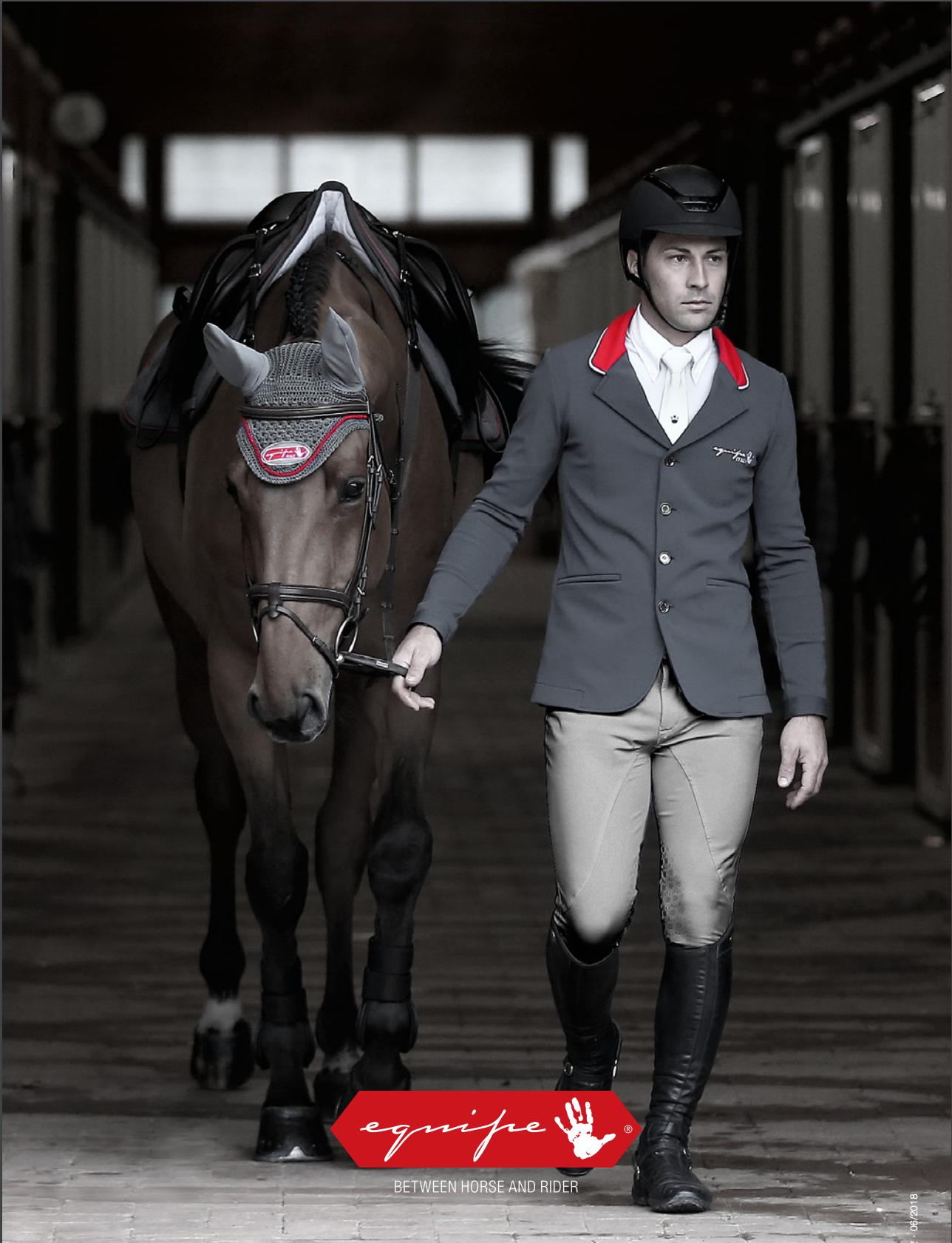




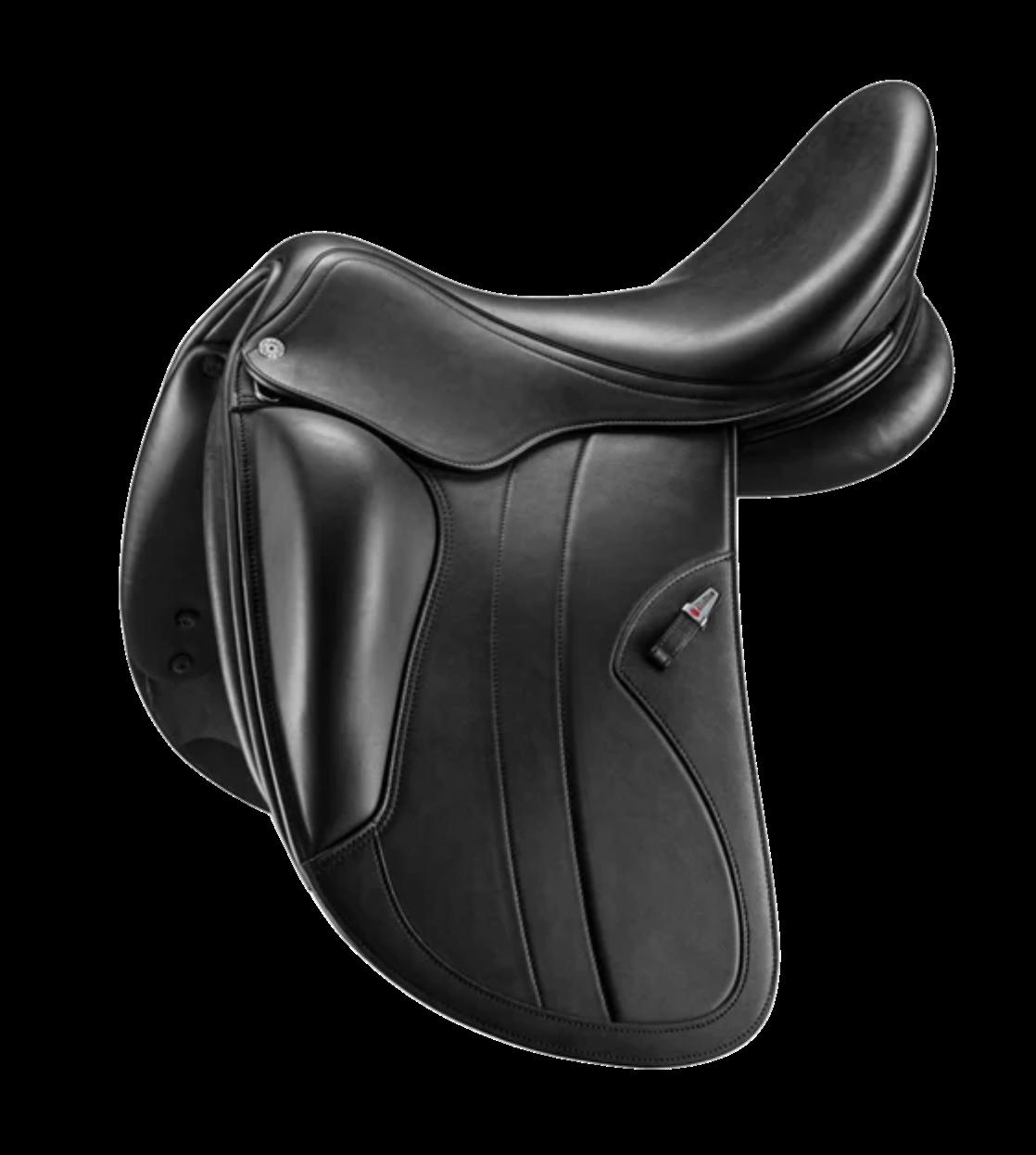
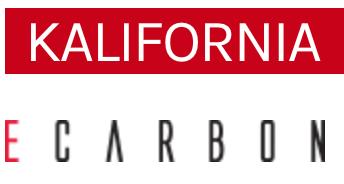
EQUIPE KALIFORNIA
resistance to the contact or potential tongue issues, especially if the bit is not fitting well. “You want to avoid pressure on the horse’s mouth and tongue,” David explains, “which can cause the horse to suck the tongue back, exposing the bit to the bars of the mouth and pallet.” Other signs of resistance and tension include the horse poking its tongue out of the side of their mouth, opening the mouth, or grabbing the bit.
If issues arise when transitioning, David’s suggestion is for the rider to reassess their training system, and look for the holes. “Ask yourself: What have
I overlooked? What have I missed? Do I need to get some professional help and seek someone else’s opinion on this transition?” Resistance indicates that the rider may have been a little bit too quick to transition their horse. “If your horse does develop a mouth issue in a double – and I can’t stress this enough – it always comes back to training. The rider needs to look inside their system and work out where the flaws might be, seek help, and adjust what they’re doing.”

Honest reflection on the rider’s part is also necessary, and they should stop to consider whether they are the ones in need of education, not the horse. If you haven’t ridden in a double bridle before, David recommends getting a feel for it on a schoolmaster if the chance presents itself. “While not always readily accessible, the opportunity to try the high levels with a schoolmaster is an invaluable experience.”
The requirement to use a double bridle in competition varies depending on the class you enter and your location. David tells me that in recent years, Equestrian Australia has approved the use of a snaffle bridle all the way to Grand Prix. “For international classes though, the double bridle is mandatory at Prix St George and above,” he adds. “Previously, it was at medium level that you could decide between the snaffle or double, whereas now you can ride at any level in a double, as long as you’re not in an international class.”
The ultimate goal throughout the transition process is to maintain the horse’s comfort and happiness. This requires the rider to have significant self-discipline, knowing when to seek help rather than looking for a quick fix. “The crux of any transition or introduction of gear is that it’s absolutely imperative that riders understand the ramifications of misuse of any product or aid,” David warns. “Equally, they need to understand the benefits. What are you trying to achieve by changing the bit or equipment? Is that reflective of your basic aids and the basic communication that you have between your horse and yourself?”

EQUESTRIANHUB.COM.A U | 45
Always treat your horse with respect.
The crux of any transition or introduction of gear is that it’s absolutely imperative that riders understand the ramifications of misuse of any product or aid.
TRAINING TIPS

I choose Hygain Advanced Nutrition.
Janet Seccull & Bloomfield
Vegas HYGAIN® SAFEGUARD EQ® may be of benefit to horses exhibiting one or more of the following symptoms: Stringhalt, aggressive or unruly behaviour, hypersensitivity / ‘girthiness’, poor coat quality, diarrhoea, poor conditioning and rye grass staggers. SAFEGUARD EQ® Scan for more information
If your horse is working well and established in a snaffle bit, the transition to two bits should be seamless.

Those considerations aside, the benefits of a double bridle are not to be overlooked. “Double bridles are a lovely tool to be used at a higher level,” he says. “They should be used with respect and the horse should always be ridden with respect. When done properly, it’s a fantastic feel. The horses are light, and when they accept the bit, we see what we call ‘ice cream’ – the froth from saliva in their mouth.”
A correctly fitted bridle should have minimal impact on the horse. The variation in types of bits and their fit is extensive, so it’s important to be prepared for some trial and error in finding the right combination. “There are a plethora of variations – that’s a topic in its own right!” David laughs. “Nowadays, most saddleries have bitting specialists you can consult for advice. You can often trial bits to find the right one to suit the conformation of the horse’s mouth, the level of the rider, and how the horse is going.”

Be prepared for some experimentation during this process and take the time
to ensure your chosen bridle and bits fit correctly. When introducing the double bridle, riders should ideally work alongside an experienced coach who can offer an on-ground perspective. “Even the most experienced riders will seek another set of eyes on the ground to read the horse’s cues, to look at the contact, to see the mouth, what’s happening with the tongue, see the connection, and provide feedback,” notes David. “Some of my students who ride Grand Prix will quite often introduce their young horses to the double for the first time in a lesson.”
If done correctly, with patience, and with the basics of your training firmly established, introducing the double bridle to your horse should not only be a seamless process, but one that is an enjoyable and exciting time as you progress in your training journey.


To learn more about David’s training, coaching and breeding business, visit his website or enquire by email

EQUESTRIANHUB.COM.A U | 47
TRAINING TIPS
David and his magnificent stallion Toto Nation de Jeu.
It’s a wrap
The second stage of the FEI World Championships has drawn to a close. JESSICA MORTON was on the ground at Pretoni, and reports on the highlights.
The FEI Eventing and Driving World Championships brought spectators to the edge of their seats last month in a dramatic and exhilarating two weeks of sport. With medals and Olympic qualifications at stake, the competition was always going to be exciting, but the final phases of both events developed into real thrillers.

The Australian Team – Andrew Hoy with Vassily de Lassos, Shane Rose and Virgil, Kevin McNab with Scuderia
1918 Don Quidam, and Hazel Shannon aboard WillingaPark Clifford - finished 10th overall, while debutante Shenae Lowings and Bold Venture placed 29th as individuals.
Sixty-eight of the 90 combinations who qualified to compete managed to finish the four-day event, with Germany winning team gold, the USA taking silver and New Zealand snatching bronze with a 0.2 point advantage over Great Britain who placed 4th.
All was not lost for the Brits thanks to the brilliant 25-year-old Yasmin Ingham, who finished 1st overall on 11-year-old Banzai Du Loir, while reigning individual Olympic champion Julia Krajewski and Amande de B’Neville brought home individual silver, and Kiwi Tim Price with Falco took bronze.
A volcanic venue

Known by locals as Rome’s green lung because of its pristine location in the Castelli Romani Regional Park, Pratoni del Vivaro lies on a grassy plateau between three extinct volcanos in the Municipality of Rocca di Papa. The federal equestrian centre at Pratoni was originally built for the 1960 Olympic Games but fell into a state of disrepair after years of neglect.
Thanks to Italy’s successful bid to host the championships, the municipality and the Italian Equestrian Sports Federation restored the centre to its former glory, constructing new competition and warm-up areas, stables, veterinary clinic facilities and groom accommodation. World-class course designers Giuseppe della Chiesa, Uliano Vezzani and
48 | EQUESTRIAN HUB ISSUE 10 • 2022
FEATURE
German Josef Middendorf were employed to create challenging and highly technical cross country, show jumping and driving marathon phases.
Much has been written about the red volcanic dust stirred up during the event, but the unique mix of volcanic ash and tuffaceous clay is part of what makes Pratoni ideally suited for equestrian events. The soil drains quickly even after heavy rain, and doesn’t become sticky, slippery, or compact underfoot – which makes it perfect for competition, no matter what the weather. According to Giuseppe della Chiesa, Pratoni’s Sport Manager, “the horses just love it.”
Eventing
The weather at the start of the eventing phase was moody and threatening, but by the fourth day had improved to end on a brilliantly sunny note.

The Australian Team was strong in the dressage phase, placing 5th overall at the end of Day Two. Kevin McNab and Scuderia 1918 Don Quidam produced a personal dressage best, but acquired 28.8 time penalties and 20 penalties due to a freak equipment failure on the course. “My rein broke between an A and B element, and I had to reach down and get it while not crossing my tracks. I won't tell you what words were going through my mind! When it broke I was a couple of seconds up on time. It took me a minute to mend the reins and I finished a minute over the time. It is so frustrating and unfortunate for the horse because he went beautifully.”
Spanish rider Carlos Diaz Fernandez and Frenchman Nicolas Touzaint both suffered falls during the cross country phase, but luckily neither was badly injured. Belgian rider Karin Donckers and her wonderful Fletcha were held up for almost twenty minutes on the course while the ambulance took away Touzaint, but finished without further disruption. Susanna Bordone, the Italian rider who heroically got herself back in the
saddle after a nasty rotational fall in July resulted in a broken collarbone and fractured pelvis, was sadly eliminated during the cross country when her horse Imperial Van De Holtakkers refused a jump three times.
Andrew Hoy and his golden unicorn Vassily De Lassos had a particularly tough day on the cross country, accruing 40 penalties for two errors and 14.8 time penalties. This left the combination ranked 63rd with a score of 82.9. Andrew accepted things as they were: “It wasn't meant to be today. It just shows that horses aren't machines. My horse was superb everywhere except for those two fences, and that was costly.”
The USA was the only country to ride five clear rounds in the cross country, leaving them in a particularly strong position for the show jumping on Day Three. But the final phase of the event changed the team standings multiple times, making for a wild finale. The course turned out to be trickier than it looked, and in the end only 12 riders rode a clear round.
Things got really exciting when the last horses had their turn in the ring. Tim Price and the extraordinary Falco produced a perfect round, as did his wife Jonelle abroad McClaren who “jumped his socks off.” Julia Krajewski, who was ranked 5th went clear with Amande de B’Neville, while Oliver Townend dropped out of contention when Ballaghmor Class clipped four rails and fell to 16th spot, moving his team into 4th place and the Kiwi team into 3rd.
Boyd Martin and Tsetserleg were unlucky, dropping four rails to fall into 21st place, before teammate Tamie Smith and Mai Baum lost their individual bronze ranking, pushing Tim Price up the scoreboard.
Micheal Jung was the last rider to enter the arena, and the crowd fell
FACING PAGE: Kevin McNab and Scuderia 1918 Don Quidam produced a personal best in their dressage test (Image © Australian Equestrian Team/ Libby Law).
ABOVE: Hazel Shannon and Thoroughbred WillingaPark Clifford raising Pratoni’s red dust (Image © Australian Equestrian Team/Kirsty Pasto).
EQUESTRIANHUB.COM.A U | 49
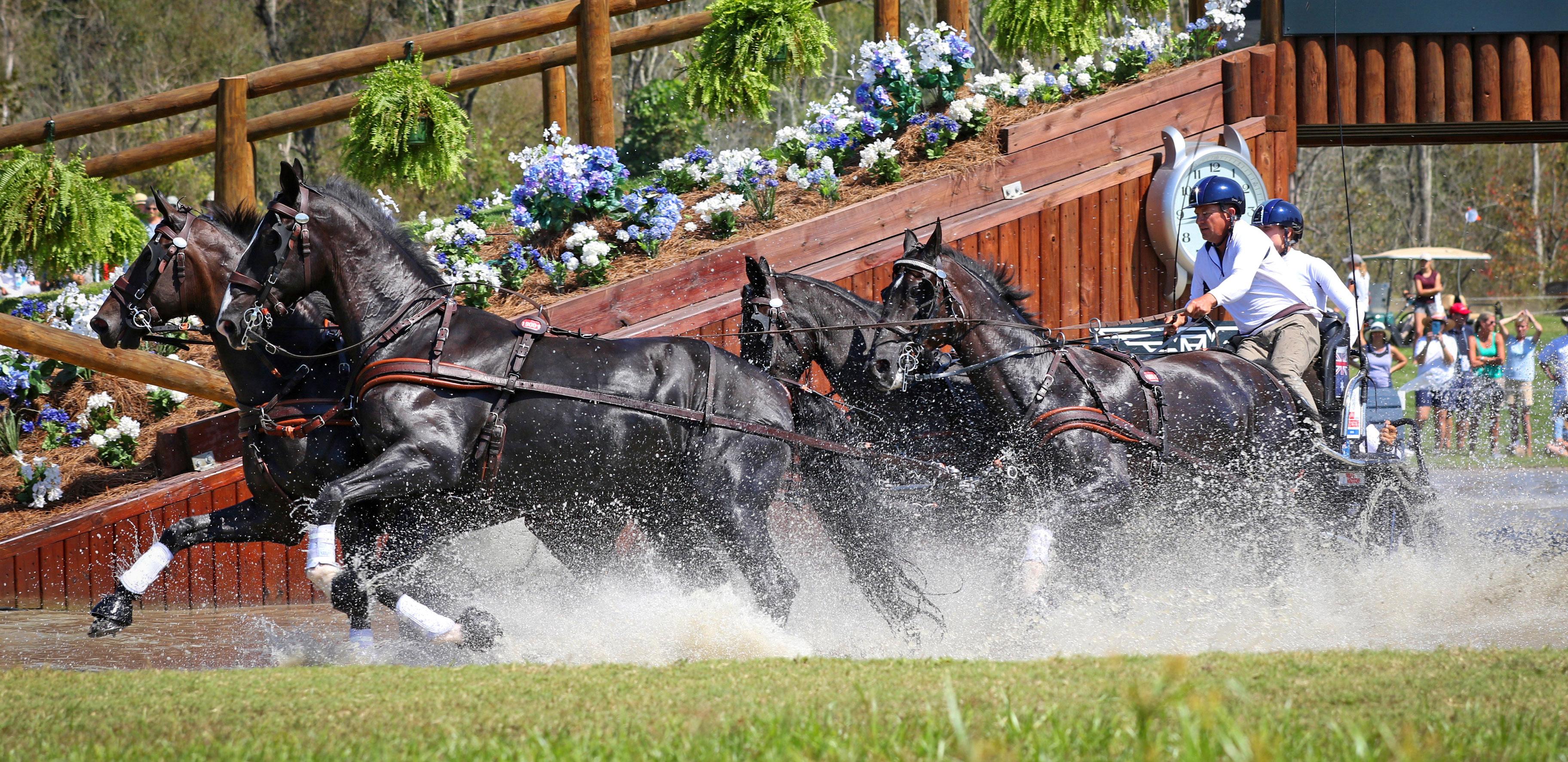
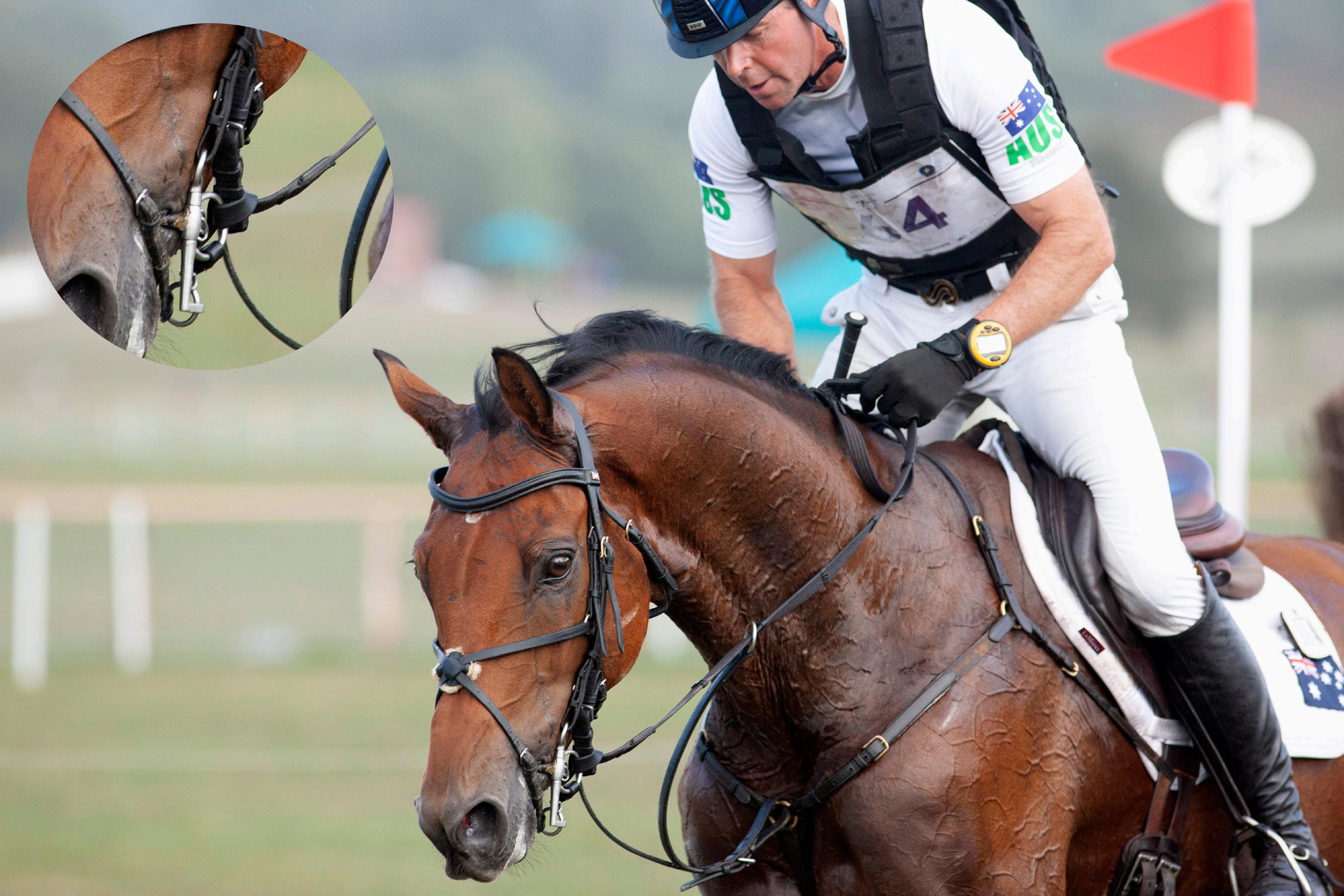

50 | EQUESTRIAN HUB ISSUE 10 • 2022
Boyd Exell successfully defended his 2018 Tryon championship title to win a 6th gold medal (Image by Michelle Terlato Photography).
FEATURE
With an equipment failure mid-course, Kevin McNab had the presence of mind to tie his broken rein to the bit ring (Image by Chiara Castellini).
silent waiting for a performance that would determine both the team and individual medal results. When Jung and Chipmunk picked up eight faults for hitting the double combination and the final fence, he unexpectedly dropped to 5th place, making Yasmin Ingham the new World Champion. The look on her face when she realised she had just won a gold medal was one of sheer joy.
As an interesting aside, four exracehorses from Australia and New Zealand – Bold Venture, Just Kidding, Artist and WillingaPark Clifford –competed in the event with excellent results. Pedigree data company Breed. Ride.Compete reported that the average for Thoroughbred blood in horses in this year’s competition was 59%, a fair indication of the importance of that bloodline for eventers.
Driving


Held the week after the eventing, 16 countries, 37 athletes and 185 horses competed in the World Driving Championships. Holland, Hungary and Germany presented themselves as the most probable candidates for team medals, and in the end, the Dutch took gold, the Germans silver, and Belgium swooped up the ranks to snap up team bronze.


Boyd Exell, who has just turned 50, defended his 2018 Tryon championship title, to bring home an amazing 6th gold medal on a final score of 156.06.
Boyd led the competition from the start with strong dressage, marathon and cones results. He set off last at the cones with complete focus despite thick rain, and his horses delivered a copybook performance that drove his supporters wild! Hot on his heels was 61-year-old rival Ijsbrand Chardon of the Netherlands, who took the silver medal on 159.82 points, while German driver Michael Brauchle finished on a competitive 163.89 points.
Boyd was understandably elated: “I’m really pleased for my horses. I’m thrilled for them because they deserved it,” adding that he might open a bottle of Champagne or two.
EQUESTRIANHUB.COM.A U | 51
Shane Rose and long-time partner Virgil (Image © Australian Equestrian Team/Libby Law).
Things didn’t go to plan for Andrew Hoy and Vassily de Lassos (Image © Australian Equestrian Team/Kirsty Pasto).
FEATURE
after Burghley, this year’s rider numbers were down but the competition certainly did not disappoint.
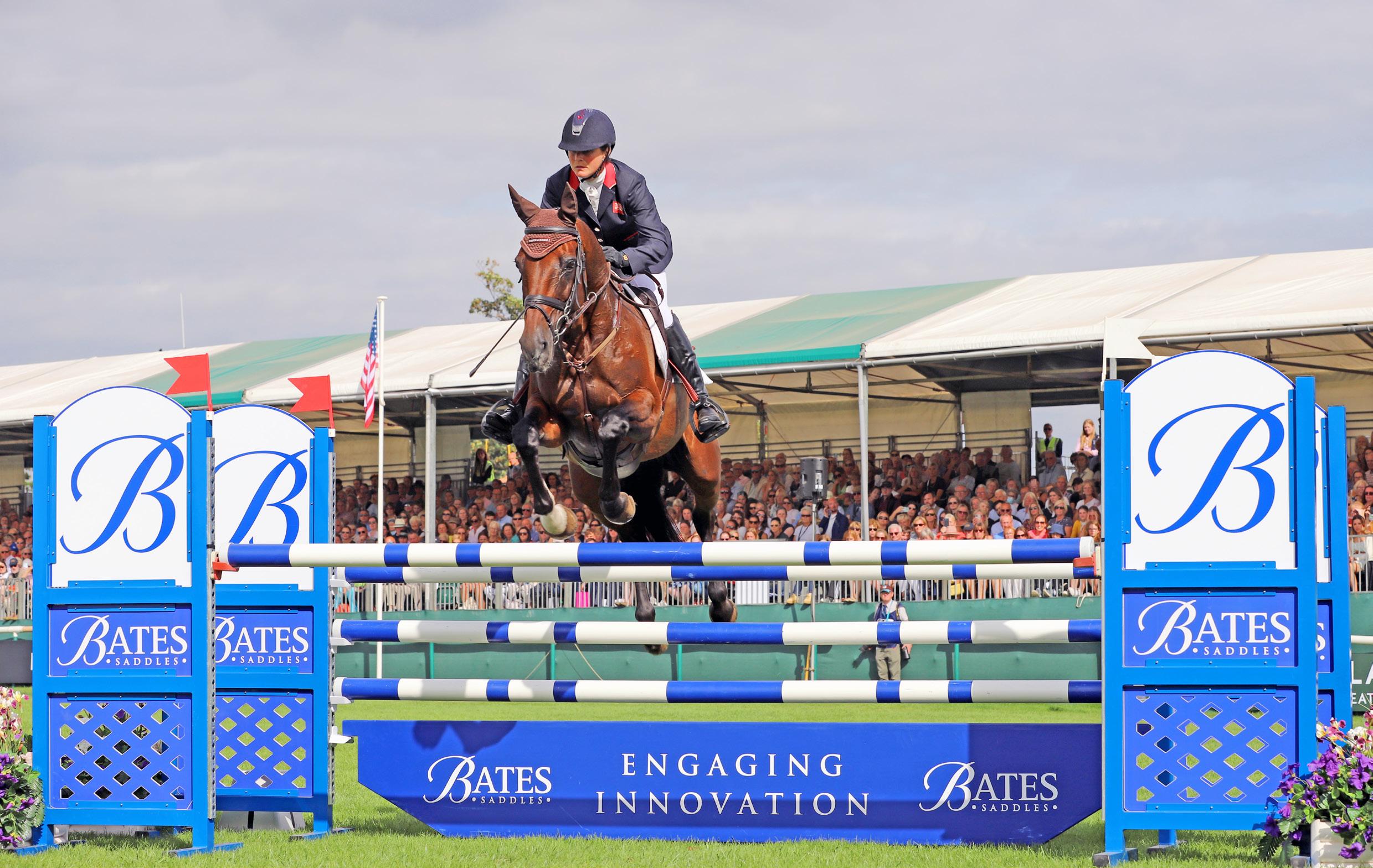
Piggy March wins Burghley 2022
A standout on the equestrian calendar, the Land Rover Burghley Horse Trials were held last month, and TANIA HUPPATZ was there to cover the event.
The Land Rover Burghley Horse Trials is back better than ever after a two-year COVID hiatus. Set in the stunning parklands of Lincolnshire’s Burghley House, it’s one of seven major 5* competitions, rivalling Badminton in size with over 173,000 visitors over the four days, and more than 600 trade exhibitors.
The event, this year held from Thursday 1st to Sunday 4th September, usually attracts around 80 of the world’s top eventing competitors, with a prize pool of over £320,000 - £100,000 of which, plus a new Land Rover Defender 4WD, is earmarked for the winner. However, with the eventing World Championships to be held in Pratoni, Italy just 11 days

During Thursday’s lunch break spectators were entertained by Yogi Breisner’s jumping masterclass – and crowd favourite Carl Hester kept everyone enthralled with his dressage masterclass on Friday. After explaining what to look for in a Grand Prix dressage horse, to the crowd’s considerable amusement one of the young horses in the demonstration started anticipating the movements, but Carl was able to make light of the situation.
Leading the charge after the dressage with a terrific score of 21.2 was Kitty King of Great Britain on her gorgeous grey Vendredi Biats. Following just point one of a point behind her was New Zealander Tim Price and Vitali. Both riders performed a 5* personal best, with less than four penalties separating the top six place getters. Australian riders Sarah Clark on LV Balou Jeanz finished thirty-fourth and Sammi Birch riding Finduss BHP was in thirty-seventh position after the dressage.
52 | EQUESTRIAN HUB ISSUE 10 • 2022
FEATURE
For the first time, this year Derek di Grazia took over from Captain Mark Phillips as course builder. Di Grazia comes with plenty of experience including the Tokyo Olympics and 10 years of Kentucky CCI5*. Other new staff additions included Martyn Johnson in the role of event director, and show jumping course builder Paul Connor, who has designed courses at Hickstead and last year’s 5* at Bicton to name a few.
Cross country day was busy with a swathe of spectators descending on Burghley Parklands with dogs of all shapes and sizes. The British love their dogs, and Burghley provides a dog crèche and plenty of canine watering points dotted around the course.
Burghley is known for its tough cross country and this year’s course was enormous. Di Grazia’s design was challenging, technical, and tracked over undulating ground.
With 52 starters and only 31 completing the course, the Holland Cooper Leaf Pit with its steep two metre drop fence caused a few hiccups. It was difficult for riders to anticipate how big a jump their horse was going to give, and on landing they needed to be in full control to navigate the next fence, a double brush. The UK’s Zara Tindall was one of many riders who had a run out here and sadly decided to call it a day.
Another problem fence was the Fairfax and Favour Boot Racks, a rather large fence with the ground dropping away on landing. Australian rider Sammi Birch fell here and was eliminated, while dressage winner Kitty King had a frangible pin that moved her back to sixth position overall.
World number one Oliver Townend had a disappointing event with two eliminations. He had only two fences to go on the cross country and was heading for home when his horse Tregilder nose-dived after the Parasol Table and Oliver tumbled off. On his second horse Swallow Springs, he came
to grief at the Trout Hatchery and fell in the water. It just goes to show how easily it can happen to the best.
Australian rider Sarah Clark gathered some cross country time faults and was unfortunate in the show jumping, dropping three rails. It was Sarah’s first time at Burghley and she finished in twenty-second place, a great effort as she was in the best of company.
The Sunday trot up went smoothly with only two horses pulled in for a second check, but both later passed. The Fell Pony society put on an interesting and
informative demonstration, followed by a Racehorse to Riding Horse HOYS qualifier in the main arena. Katie Jerram won the event with Queen Elizabeth II's ex-racehorse First Receiver, a win made poignant by the sadness that followed just days later.
FACING PAGE: Piggy March and Vanir Kamira on their way to winning the 2022 Land Rover Burghley Horse Trials.

TOP: With magnificent Burghley House in the background, Britain’s Tom McEwen and CHF Cooliser negotiate the cross country.
BOTTOM: The Princess Royal, Her Royal Highness Princess Anne presents Piggy with the winner’s trophy.

All images by Tania Huppatz

EQUESTRIANHUB.COM.A U | 53
FEATURE
October









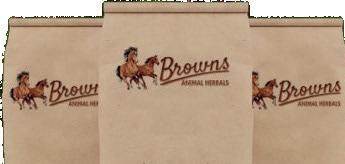

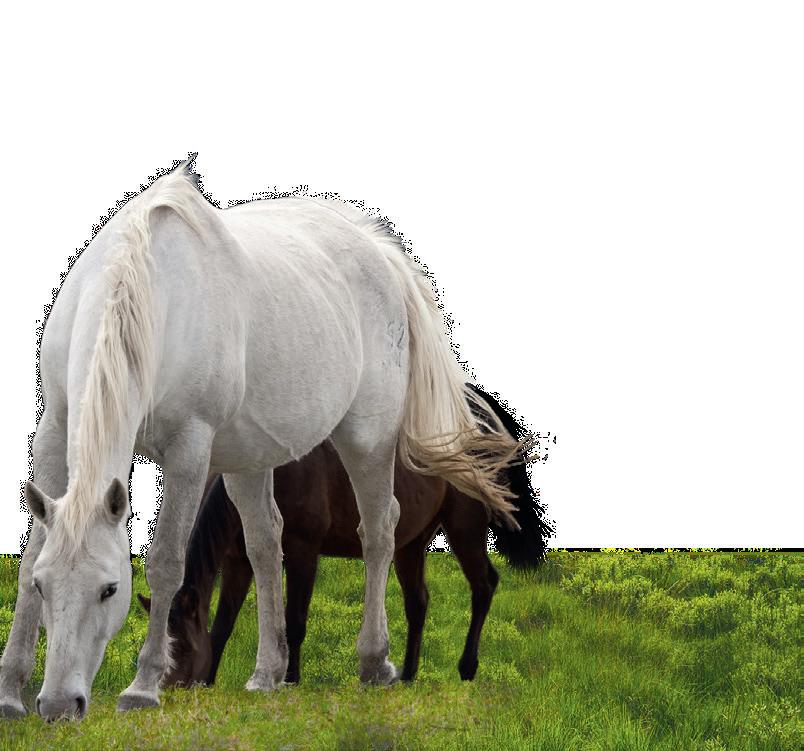
for great Herb Specials! Artwork by daZoop Designs www.brownsanimalherbals.com.au 1300 HORSEHERBS (1300 467 734) 100% natural herbs for all equines Stocking a large range of specialty blends as well as single herbs
Specials Circulatory Support 1kg was $55 special $45 3kg was $150 special $125 Brewers Yeast 1kg was $21 special $19 5kg was $100 special $90 A superb detoxifying and cleansing herbal blend containing ingredients reported to help prevent founder. Great to use over the spring season for the founder prone horse or pony. A great daily supplement; rich in B vitamins including B1 (thiamine), B2 (riboflavin), B3 (niacin), B5 (pantothenic acid), B6 (pyridoxine), B9 (folic acid) and B7 (biotin), as well as Chromium and Selenium
Each year a special guest is invited to Burghley to present the prizes and after lunch The Princess Royal, Her Royal Highness Princess Anne arrived by helicopter, landing in front of Burghley House. The Princess, who won the European championships here at Burghley some 51 years ago, presented this year’s winning combinations.
Captain Mark Phillips presented the Avebury trophy for the best cross country round of the day, which went to fourth place getter New Zealander Jonelle Price riding Classic Moet, the only one to achieve a clear round within the optimum time of 11 minutes and 20 seconds. Not a bad effort for a 19-yearold mare who in three appearances at Burghley has never been out of the top five placings.
The Band of the Household Cavalry played during the presentations and the Fitzwilliam Milton Hunt hounds were on display. Although mainly well behaved, event organisers became a little nervous
when, to the crowd’s amusement, the hounds strayed to the trophy table. Thankfully, as soon as the Master blew the horn the hounds responded and fell back into line.

Oohs and aahs were heard as rails tumbled in the show jumping. Piggy March had one rail, finishing ahead of fellow Brit Tom Jackson on Capels Hollow Drift who had a clear – and all kudos to Tom who was at his first Burghley. New Zealander Tim Price dropped three rails and one place to finish third on Vitali, with his wife Jonelle Price finishing in fourth place on Classic Moet.
It has been the case on many occasions that the combination topping the leader board after Burghley’s cross country phase goes on to win the entire event. And sure enough, with less than a rail between the top two, Piggy March aboard her 17-year-old mare Vanir Kamira became 2022’s Burghley Champion: "It is the best feeling in the world, a dream come true," a delighted Piggy said.
It was a well-deserved win for Piggy, who also won Badminton in 2019, has twice been runner up at Burghley, and is a two-time individual European silver medallist. "I think this is probably the hardest cross country event in the world,” she commented. “The terrain is so tough, and I think the horses just get an extra gold star for being able to do well here and get around that course fast.”

To celebrate, the George Hotel in nearby Stamford baked a special Burghley cake for the winner, and a low fat, sugar-free cake for the winning horse.
The horse trials have a strong antipodean history with Australians winning the event on multiple occasions. Andrew Hoy won in 1979 riding Davey, and again in 2004 on Moon Fleet. Also winners of this prestigious event were Lucinda Fredericks on Headley Britannia in 2006, and in 2016 Christopher Burton on Nobilis 18.

EQUESTRIANHUB.COM.A U | 55
Australia’s Sammi Birch riding Finduss BHP was in thirty-seventh position after the dressage.
FEATURE
Cavago’s come to town
With enthusiastic customers
providers already
and more than
like Cavago make the process faster and much easier – no more searching for hours online. Their automated booking experience helps users and providers find one another quickly, removes potential language barriers, and links users, providers and hosts who otherwise may not have connected.
Marketing where it matters
Once a host partnership is established, an online listing for that provider is created and linked to a booking engine that can process client requests and payments directly.
Upcoming trips and last-minute discounts are promoted on social media platforms and through regular email marketing blasts to help the provider stand out from their competitors. And since bookings on the app don't require a dedicated travel agent, commissions are kept to a minimum. Reservation tasks such as up-to-date availability, pricing and scheduling can be automated, so providers spend less time thinking about marketing and sales and more time running their business.
An easier way
Cavago has quickly become the fastest-growing booking platform for equestrian activities around the globe. Sometimes compared to other online accommodation platforms, Cavago’s point of difference is in finding unique equestrian experiences and destinations, and bringing them together in one easy-to-use site where you can find the perfect riding activity whatever your destination.
As the first service of its kind, the startup aims to revolutionise the equine tourism industry, streamlining scheduling and payments, and helping users spend less time organising their riding holiday and more time in the saddle.

Online offerings
Equestrian travel agencies have played an important role in the success of the equine tourism industry. However, there is a catch. The agencies sometimes take at least 20 per cent in commissions, and through exclusivity contracts often limit who tourism providers can promote with – restricting them from selling directly to clients, or accepting customers from rival agencies.
However, more people now prefer to do their own research in order to turn their dream riding holiday into a reality. By offering an extensive selection of unique riding experiences, booking apps
Singapore-based CEO Tauseef Qadri, himself a passionate horseman, says the impetus behind Cavago was to create a global network of horse businesses and a convenient system where enthusiasts of all disciplines could find a place to ride. “Cavago is the first travel app to connect equestrians, providers, and travel agents on the same platform; where users can effortlessly book private riding lessons, multi-day treks or tailor-made experiences no matter where in the world they find themselves,” he adds. “Searching for a place to ride within the network is as easy as inputting a location and activity and choosing from the broad selection of providers listed in the app.”
A Cavago user simply needs to choose a price range, location, and travel dates to browse through a selection of listings complete with images, reviews, and

56 | EQUESTRIAN HUB ISSUE 10 • 2022
worldwide
250
signed up, Cavago has made their mark, writes JESSICA MORTON. INTERNATIONAL TRENDS
video footage to ensure the property or activity suits them. Recurring activities like riding lessons or weekly horse treks can be managed on the app's dedicated calendar. And after just a few bookings, Cavago's advanced interface recognises your preferences and recommends the perfect riding itinerary when you next travel.


Protection for providers
Trekking centres and riding schools can use the app to protect themselves against no-shows or late arrivals with a customised cancellation policy connected to their listing. If the client doesn't arrive or cancels outside of the specified timeframe, the provider can choose to enforce the cancellation policy and not lose money.
carriage door that clients can use to pay for her services with their phone before they climb inside."
Disruptive tech
In equestrian tourism, it’s not just what you offer that counts; it’s who knows about it. Getting a product, trip, or experience in front of the eyes of potential customers isn’t always easy – especially in a niche market. Plus, the pandemic has changed the way people travel.

With many small businesses struggling to navigate these uncertain economic times while keeping their families, employees, and horses fed, Cavago’s goal of creating the world’s largest community of horse lovers might be just what many providers need for that essential visibility and support when it’s most needed.
Besides, at the end of the day, the world always looks better from the back of a horse!
Billing and receiving cash-free payments in advance is another advantage, significantly reducing the time spent scheduling and collecting fees for services and activities. The app can also send monthly agistment invoices, schedule weekly riding lessons, and collect extra one-off payments from clients.

Tauseef explains that because of these features, providers can now confidently process bookings on the app. "One of our providers runs horse and carriage tours in Portugal. In the past, due to a lack of card payment processing options, she lost clients. Sometimes in order to receive payment, she had to find her client's bank and wait on the road with the horses. Thanks to the Cavago app, she has a QR code on the
Searching for a place to ride within the network is as easy as inputting a location and activity.
EQUESTRIANHUB.COM.A U | 57
INTERNATIONAL TRENDS
FACING PAGE: Cavago founder Tauseef Qadri is a passionate horseman. ABOVE: The Yeguada Cartuja stud near Jerez, Spain, is home to the magnificent Carthusian Andalusian.
FEATURE

Fourth time’s a charm
Frenchman and equestrian vaulter Lambert Leclezio recently won his fourth world title.
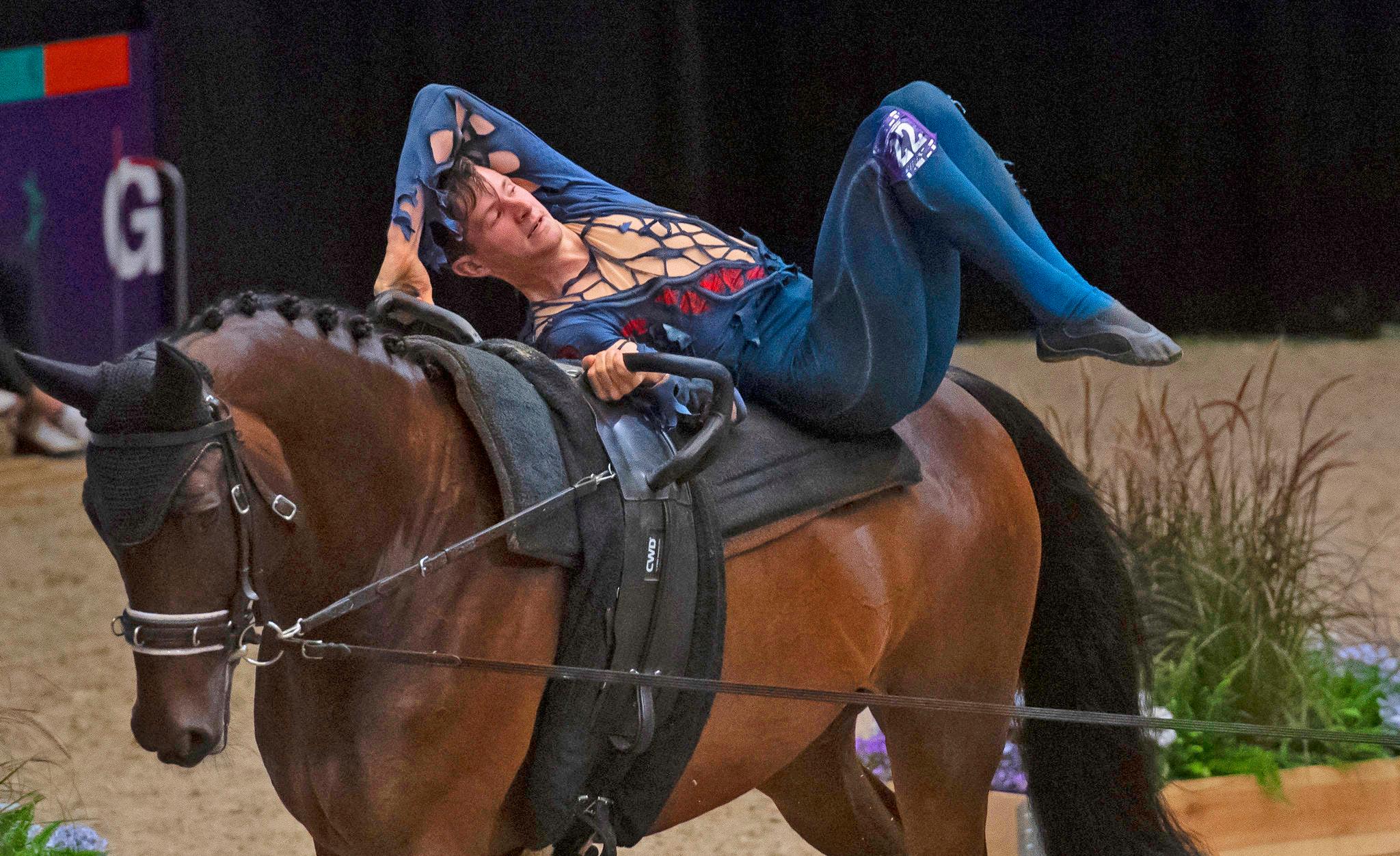
JAMIE HOCKING spoke to him after the event.
World champion vaulter Lambert Leclezio has been a fellow competitor and friend for some years now, and it was exciting to see the 25-year-old Frenchman win his record-breaking fourth world title in Herning, Denmark.
JH: Did you learn to vault growing up in Mauritius?
LL: At the club where I was learning to ride I was always playing around, making handstands and gymnastic moves. The riding teacher, Marie, told
me ‘you have to start vaulting’. I tried it and liked it and just kept on going.
JH: What does Marie think now that you are four times world champion?
LL: I had dinner with her two days ago in Mauritius. She is proud and says she uses me as the example to encourage other young Mauritian equestrians. She was there when I did my first small competition and I remember her telling everyone I would one day be world champion and I just laughed. But she says she always knew, because
she’d never seen a kid have so much concentration in what he was doing.
JH: What’s been the best championship win for you?
LL: I think this fourth world competition definitely, because for me every round was really special, really emotional. I started training my horse Estado from the beginning. In the past I was vaulting on experienced horses. This time it was more my own story and my own project with a new lunger and a young horse. For once I was the most experienced one! So the emotion in there was much, much stronger.
JH: How does it feel to have set a world record?
LL: Of course it's nice, but each of the championships was different. Winning four is so great because no one has ever done that. I really hoped I would win again this this year, but when it happens you know you just did your thing and the number is not the main thought. I was in the moment for every round. Estado was so good and I was thinking as if it was my only championship.
58 | EQUESTRIAN HUB ISSUE 10 • 2022
JH: What have you learned from all this experience?
LL: For me, the hardest challenge and most lessons have been in managing people. I had to learn to live overseas without the support of my family, and then learn how to handle team members; to include everyone and divide the work fairly. In the past I experienced some problems with people on the team, and I had to learn to communicate better with them.

JH: We watched Estado put in a buck just before you started your final freestyle round and we were all holding our breath, but you stayed calm and it turned into such a brilliant round.
LL: Yes, I was worried we might be pushing him too hard, too fast. And in the end Estado had to make the jump. Because I had a back-up horse, we were supposed to be taking it easy and getting some experience, to just let him get ready and take his time. And suddenly we didn’t have the back-up option and there were only two competitions before the World Championships last year, so we went with Estado.
At Saumur, he was a dragon! It was at home and the worst competition I’d had in five years. I don’t think we were focused on him enough, when he’s a horse that needs attention all the time. It’s hard when there’s so much pressure. He’s amazing but he is inexperienced, difficult to launch and could also react to the lunger. You really need to gain his trust.
JH: What’s a hard life lesson you’ve had to learn?
LL: I learned that what saves me is working hard. We all make sacrifices, but
when something was not easy I worked twice as hard to solve it.

JH: What tips do you have for young equestrians wanting to become the next world champion?
LL: Make good choices, even if they’re difficult to make. For example, changing my nationality to compete for France upset some people. I had to stay strong, because to go forward I knew that’s what I had to do. And trust your own feelings, make your decisions and go for it. And get the right team, the right people around you. I think it's very important that you're not scared to change your support group. Find the people and the horse that makes you feel good.
JH: I know you will stay involved in the sport, but will you also catch up on things you’ve missed out on?
LL: Yes, like continuing my physio studies at my French University. I start again next week. I will probably never be away from horses and I would like Estado to live with me after he retires. And I hope to discover all the things I like, because until now, I was not looking for anything else but my sport.
FACING PAGE: Competing in the Male Individual Vaulting at the 2022 World Championships in Herning (Image FEI/ Richard Juilliart).

ABOVE LEFT: With his lunger Loic Devedu, Lambert celebrates his record breaking fourth world championship (Image FEI/Richard Juilliart).
ABOVE: Lambert and Estado competing in Saumur, France (Image courtesy Lambert Leclezi).

EQUESTRIANHUB.COM.A U | 59 FEATURE
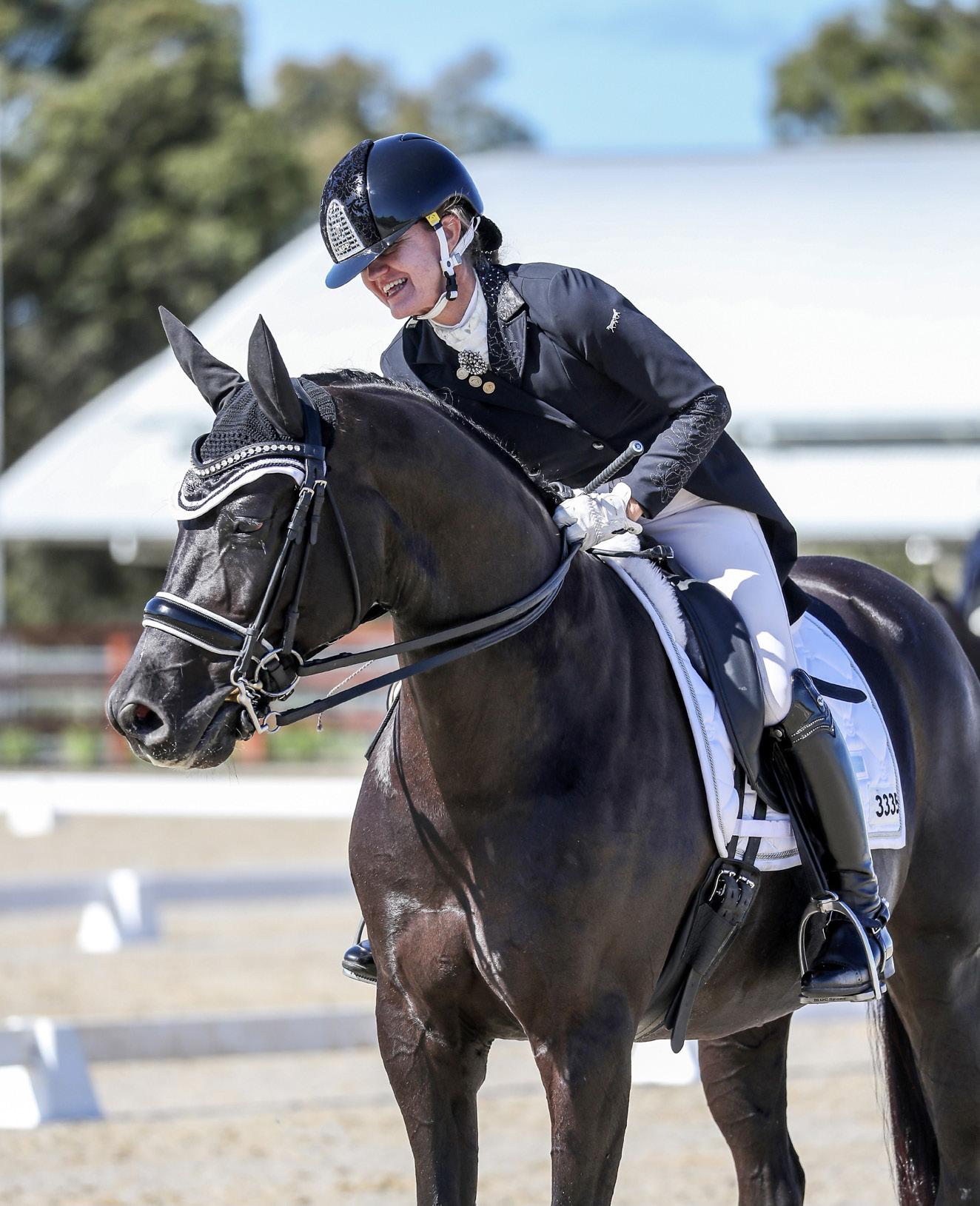


Available on Spotify, Apple Podcasts and Google NOW This episode is sponsored by NICOLE TOUGH is our special guest on the latest Equestrian Hub Podcast! Listen to the Equestrian Hub Podcast
TACKED UP
Colour coordination
Which colours best suit your horse? A good question, and one that needs consideration. Fortunately SUZY JARRATT has some advice.

Matchy-matchy is a relatively recent expression in the equestrian vocabulary.
Velcro fastenings had yet to infiltrate the horse market. Your saddlecloth was primarily to protect your equine’s back, rather than to make a fashion statement, and few riders knew much about ear bonnets.
Today, matching accessories are big business and the marketplace is bursting with eye-watering combinations. Equestrian stylists are everywhere suggesting suitable shades for you and your horse. There is an abundance of bright cotton ear bonnets, vibrant neon saddlecloths, and bandages in scores of plain colours or fancy designs such as love hearts, polka dots and bumblebees. You can also buy sets encrusted with rhinestones!
Needless to say, it is up to owners to decide what looks best on their horses. Tastes vary and fashions change, just as they do with food and clothes. Yesterday it was all about distressed jeans and smashed avocado, today it’s bubble tea and crocheted crop tops. Some riders are conservative when selecting accessories, others are more adventurous. But, in the end, it is all about personal choice and if you want your Knabstrupper stallion to wear a rose gold saddlecloth and striped bandages it is entirely up to you.
We’ve compiled a few ideas on what might be a good match for different coloured horses. A simple rule of thumb to assist in selection is that a dark coat suits lighter colours and a light coloured coat suits darker ones. But there are always exceptions to that rule!
Grey/White: Dark colours are the best with grey horses and there are many to choose from, including charcoal, navy, black, burgundy, olive green, dark brown and red. Neutral shades like beige or taupe aren’t particularly flattering. For many, pink is an absolute no-no but it might be considered appealing on a child’s dapple grey pony.
A few decades ago bandages were usually white, navy or black, and secured around the legs with tapes –
Black: Black horses can carry almost any colour; they especially look attractive in white, cream, taupe and pastels.

EQUESTRIANHUB.COM.A U | 61
Bay: Hunter green, white, maroon, turquoise, grey, and black are some of the many colours which suit bays. However, if your bay has a lot of red in their coat, navy or royal blue might work well.
Chestnut: Try royal and light blue, black, hunter or mint green, and teal – but avoid light shades of red.
Palomino: Dark shades are probably best – think blueberry, black, peacock green, even purple. But give yellow, beige and orange a miss.
Dun: White, pastels, burgundy, dark blue, or dark brown are likely to hit the spot. Skewbald: Stylists suggest colours which are attractive on a chestnut or grey can also look good on a skewbald.

Piebald: Those colours which suit a black or grey can do the same for a piebald.
Appaloosa: Uniquely patterned and in many shades of grey and brown,
black, burgundy or bottle green might work. Perhaps be guided by the colour suggestions for piebald and skewbald.
The colour wheel

If you are really serious about pursuing matchy-matchy combinations you could study the colour wheel, traditionally used by designers, painters and artists. It’s a neat little tool broken up into cool, warm, primary, secondary and tertiary colours and you can use the principles of the wheel to pair hues that work well together.
But no matter what colours you fancy, if you’re thinking of competing check your discipline’s rule book to find out what’s appropriate. For example, no bandages or coloured saddlecloths are allowed in dressage tests, and the EA National Show Horse Rules vary depending on the class. In some cases, numnah colour is optional, while in others ‘a discreet
natural sheepskin saddle cloth is acceptable’. Bandages are allowed only in the warm-up area and for working hunter jumping phases. Meanwhile show jumpers tend to use leather or Kevlar tendon protectors, as do eventers when going cross country.
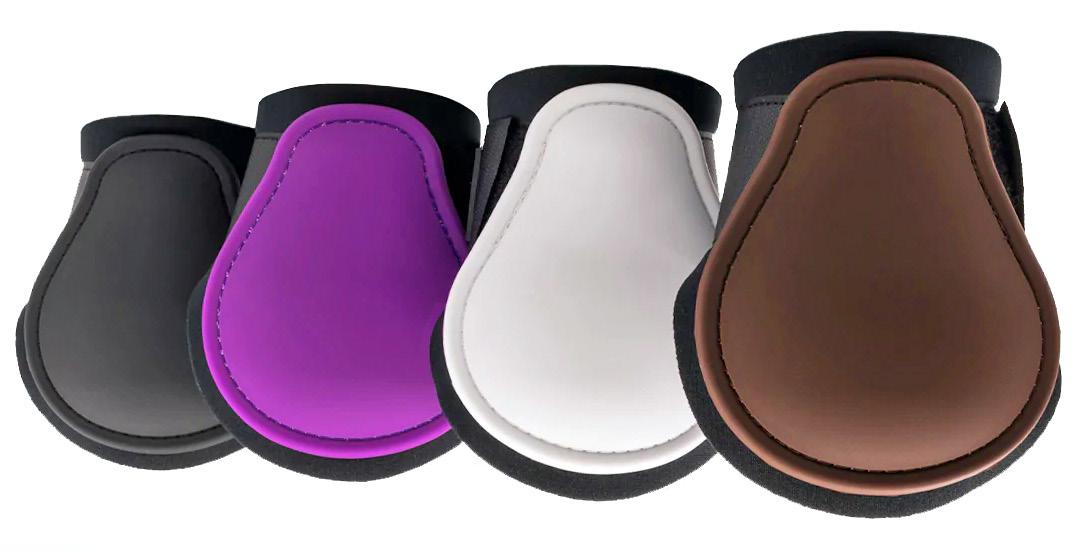
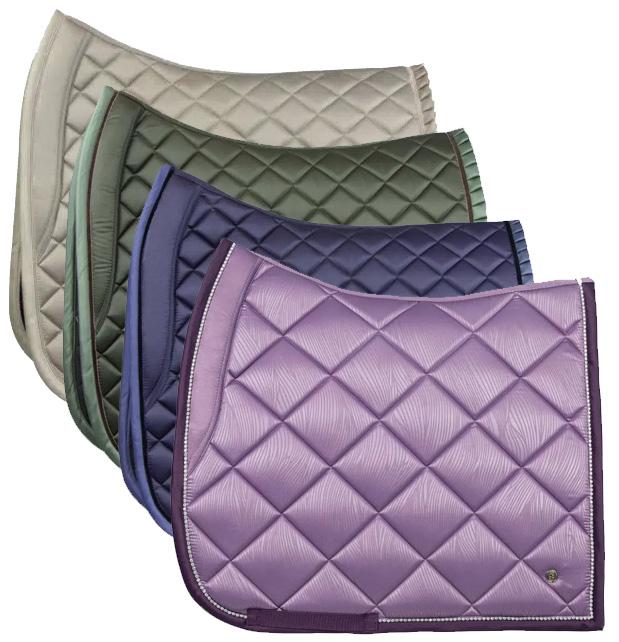
Different Pony Clubs, breed societies, polo and polocrosse associations all have varying regional, state and national colours, and participating riders must abide by those rules. There are more opportunities to introduce colourful accessories in western riding, especially when it comes to saddlecloths or blankets.
Of course, you and your horse can wear whatever you like when on a recreational ride, schooling at home, or attending clinics. And there is a practical aspect to bright bandages - they come in very useful when training in an arena with mirrors, making it easier for riders to see the positioning of their horse’s legs.

Whatever choices you make will mean nothing to your horse. An equine’s vision is similar to human colour blindness, where certain colours, especially red and related shades, appear more green or yellowish. Horses perceive the world through quite different eyes.
But beware! Colour coordination can be very addictive. So when you’re next mulling over the suitability of plum or blueberry, remember to save some money for your riding lessons.
62 | EQUESTRIAN HUB ISSUE 10 • 2022
PS of Sweden saddlecloths from The Saddle Hub.
Shop Aintree elastic bandages at Ashbree Saddlery.
ABOVE: Eurohunter fetlock boots come in a variety of colours (available from Trailrace).
PREVIOUS PAGE: The Saddle Hub stocks PS of Sweden saddlecloths, bandages and bonnets in a range of colours and styles.
TACKED UP
Where performance and comfort collide

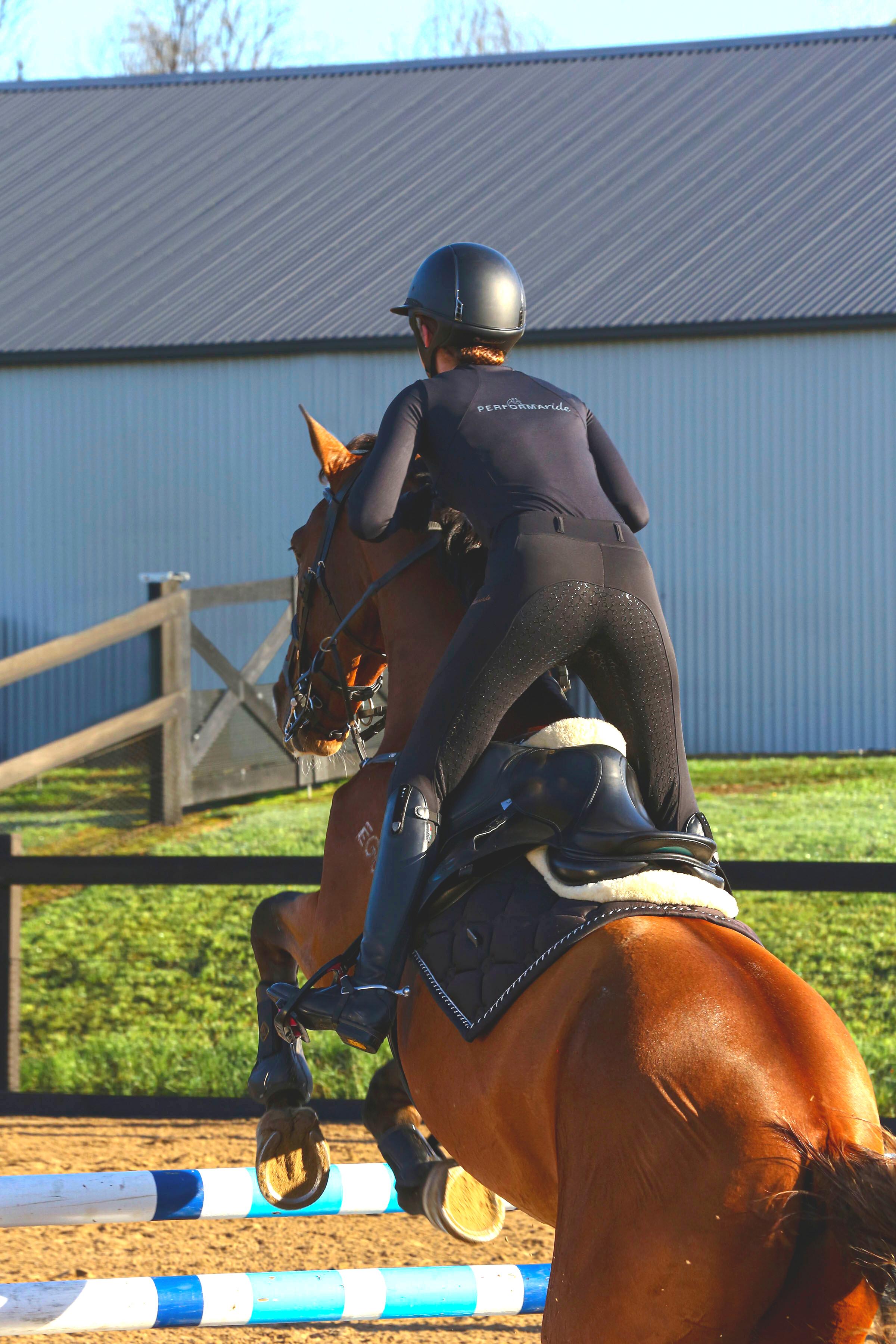
LIFE AFTER RACING
A slice of Pie

Quirky, intelligent and kind, ex-racehorse
Pie quickly won over TARA MADGWICK and her family.
As a horse obsessed teenager, who dreamed of a career in racing, I found a mentor in respected South Coast trainer Bede Murray, whose Conjola racing stables were a short 10 minute drive from our farm.
He gave me my first job at 16 and taught me most of what I know about handling and riding racehorses, before setting me
on the path to work for some of the best trainers in the country. Those formative years working in stables gave me the grounding to forge a successful career in bloodstock media and I can thank Bede Murray for that. So, when he rang me in 2015 about a horse, I was quick to take the call.
Bede was battling cancer and cutting back his horse numbers: “I’ve got the
perfect horse for your kids. He’s New Zealand bred, jumper’s pedigree they tell me, and all those jump trainers down south are after him, but I’ve told them he’s for you.” My twins were 12 at the time and my first thought was that I needed a fresh off the track horse for them like a hole in the head, but I wanted to catch up with Bede so went for a look.

Piazza San Pietro was a seven-year-old gelding by champion sire Pins (who had been a handy stayer) but he had not raced for a year courtesy of a bowed tendon. He’d spent a long, wet winter in a paddock with no rug, so pretty he was not. There were spellers in the paddocks galloping around and a stiff breeze, but the raggedy brown gelding jogged off quietly for me with a spring in his step and cantered up the hill with a long floating stride and arched neck - he was a keeper!
We brought him home to Daybreak Farm the next day and I told my daughter Jasmine that he was to be her new horse, to which she replied, “But Mum, he’s so ugly!” He had a name change as
64 | EQUESTRIAN HUB ISSUE 10 • 2022
befitting a Thoroughbred to be ridden by a young girl and became Pie, a reference to National Velvet. Then we set about transforming our ugly duckling into a swan. I spent the early days riding Pie at home to assess his nature and reactions under pressure and it wasn’t long before I deemed him safe for Jasmine and she took over. Moving up from a 13hh pony to a 16hh horse can be a tricky transition, but she was quick to see the light, “Mum it’s like riding a cloud.”

Pie is a horse of extremely high intelligence and as such he has a few quirks that come with it. His impatience and anxieties have led to some memorable tantrums, while his attitude to other horses remains a source of constant amusement. He can undo any stable door or gate lock, remove any rug, slip out of any head collar or bridle, and if there is any place you don’t want him to go, that’s exactly where you’ll find him.
Training him to be a competition horse and adapt to the world of shows and gymkhanas had its challenges, but if you were on his back he has always been ‘perfect Pie’. Jasmine’s confidence had taken a battering from her previous pony, who was not averse to planting her on the ground, so she enjoyed swift progress on Pie as they learned the sport of show jumping together.
Pony Club and Interschools events came and went over the years as they forged a very successful partnership that ultimately led Jasmine up to the next level of the sport. Late last year, she decided to make the quantum leap and take a job with champion trainer Chris Waller, so in preparation for her departure Pie was enlisted to revisit his racehorse days. We put a racing pad on him and over a period of weeks Jasmine gradually got the hang of riding short and keeping her balance before having to produce those skills for real at Rosehill.
He eventually found himself somewhat on the back burner at Daybreak Farm, but the advent of Thoroughbred Sport Horse jumping classes has been a game changer. Pie, whose competition name
is Daybreak Del Pietro, has racked up multiple wins in these classes at major shows this year, ridden by both Jasmine and her twin brother Jack.


With his fifteenth birthday just gone, he is in the best condition of his life with hopefully many more years ahead of him in our care, and he will be looking to close out his year on a high with a trip to Stonewall Equestrian on Mangrove Mountain NSW for the inaugural Thoroughbred Sport Horse National Titles. The event covers a wide variety of equestrian pursuits for Thoroughbreds and will be run from 18 to 20 November. Save the date!
Entries for the Thoroughbred Sport Horse National Titles open on Monday 24 October, and close on Sunday 13 November.
FACING PAGE: Pie and Jasmine in action at Stonewall earlier this year (Image by Dianne K Smith Photography).
TOP: Jasmine and Pie quickly became a winning combination (Image courtesy Tara Madgwick).
LEFT: With the late Bede Murray, Tara and Pie for their first ride in September 2015 (Image courtesy Tara Madgwick).

EQUESTRIANHUB.COM.A U | 65
TACKED UPLIFE AFTER RACING
IT’S BETTER TO BE META SAFE THAN SORRY.
You would do anything to keep your horse safe. Diets high in sugar or starch can lead to laminitis and the development of metabolic disorders.

META SAFE® is a grain free pellet containing a complete blend of nutrients at a low feeding rate. Formulated with less than 1.5% starch, low sugar and the added benefit of BONAFIDE®, META SAFE® is ideal to support horses on controlled diets.

META SAFE® is the safe choice for Laminitic, Cushings Disease, EMS and PSSM horses and ponies.
Take the META SAFE ® HORSE HEALTH CHECK

66 | EQUESTRIAN HUB ISSUE 10 • 2022 XAVIER_HYG38938.7
Riding by the Rockies
If you’re looking for the adventure of a lifetime, MATHILDE GREGOIRE is pretty sure you’ll find one in Alberta, Canada.
With unrivaled equestrian outdoor activities and spectacular scenery, a riding holiday in western Canada sure will take your breath away! Its diverse wildlife, freshwater lakes, snow covered mountains and friendly Canadians make the English-speaking province of Alberta a popular destination for Australians seeking adventure.
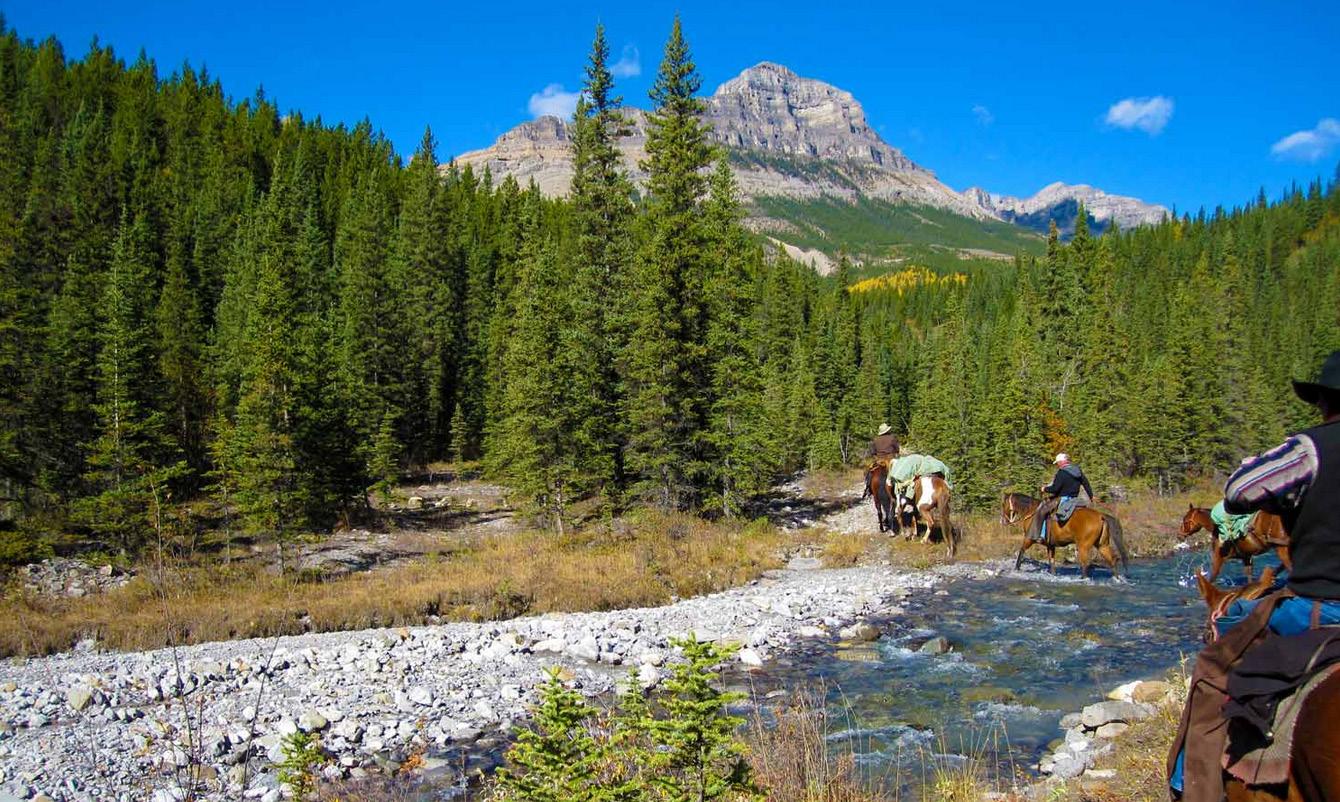
Western riding is deeply rooted in Canada’s culture, and you’ll find many working and guest ranches in this province. But look no further - we have

two gems to help you make the most of your riding holiday.
Anchor D Ranch

Nestled in the foothills of the Canadian Rockies in Black Diamond, Kananaskis Country, Alberta, Anchor D Ranch offers the ultimate western experience. Located an hour south west of Calgary, Alberta’s largest city, the ranch has a wide range of riding and outdoors experiences available all year round. A three hour ride will take you into the depths of the beautiful Kananaskis
countryside, where a seemingly endless forest of pine and birch trees, and incredible views of the Canadian Rockies await you. Following Sheep River out into the vast prairies where cattle roam freely, this raw country horseback riding experience is a dream come true for adventure and nature lovers alike.
And this is not your usual nose to tail ride: prepare to channel your inner cowgirl as you canter through the prairies and uncover grizzly bear tracks along the way. The experienced wranglers and their sure-footed horses will give you the confidence to ride along the ridge line and through steep terrain as you drink in the beauty of the Rockies.
With over 100 horses, Anchor D Ranch has a variety of American breeds, including Appaloosas, mustangs, and Quarter Horses. Additional activities, including sleigh and wagon rides in winter, are also offered at the ranch, and overnight stays in fully equipped rustic log cabins are available if you want to indulge in a longer visit. Treks over several days out into the back country may well suit riders wanting a full wildlife experience.
EQUESTRIANHUB.COM.A U | 67
TRAVEL
Brewsters Lake Louise Stables
If you are looking for a peaceful ride with incredible views, this place is for you! At Brewster Lake Louise Stables you can choose from a variety of rides through magnificent Banff National Park, an area famous for its turquoise alpine lakes, majestic mountains and glaciers.
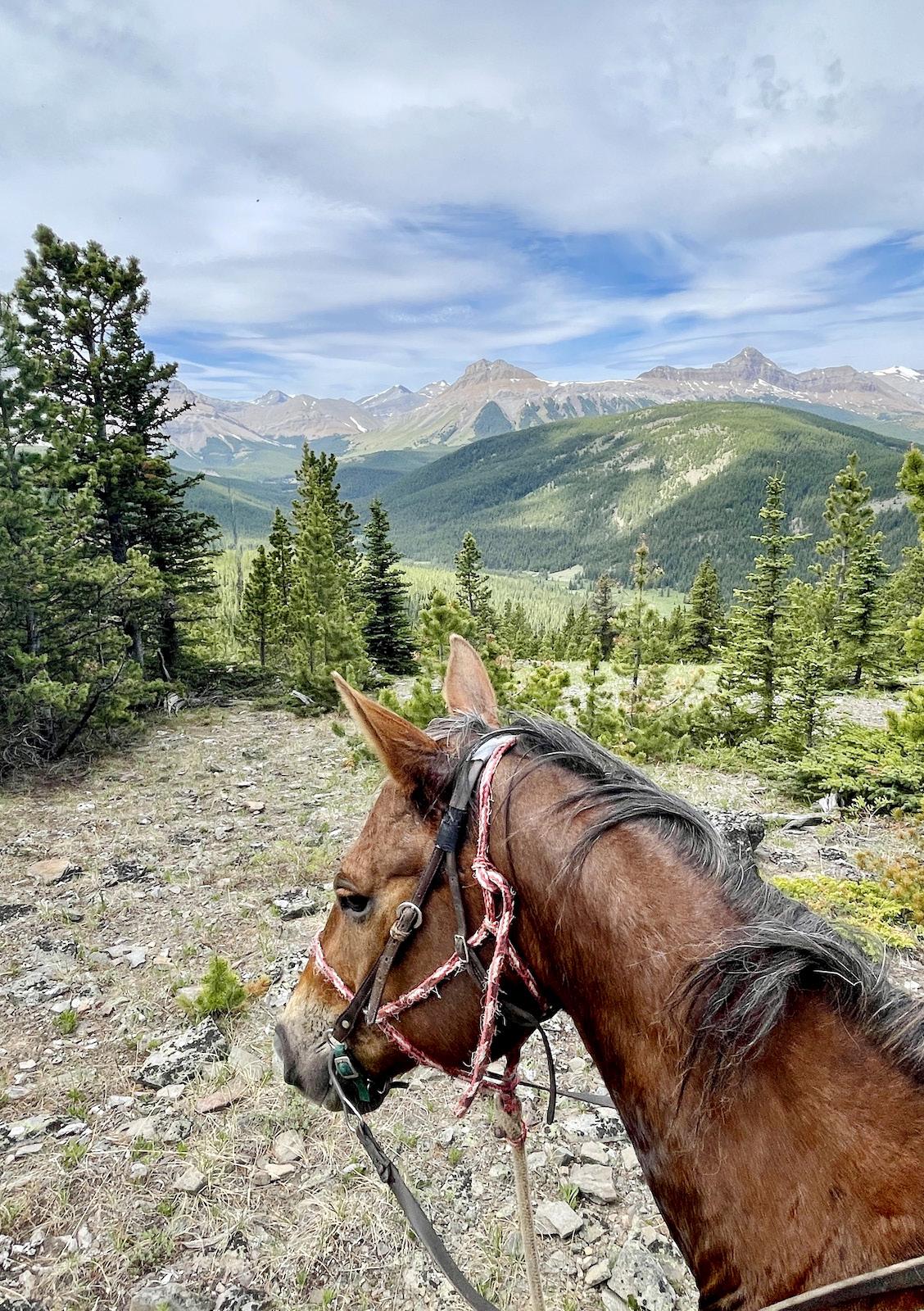

The half-day Lake Agnes Teahouse trail ride follows the lake’s tree line and reveals unbelievable vistas. As you go up the mountain overlooking Lake Louise, a Rocky Mountains panorama with views of Mount Temple’s triangular peak opens up before you. After climbing to an altitude of 2,100 meters, you can take a break and enjoy tea or coffee at the iconic teahouse. Overlooking Lake Agnes and its waterfall, the teahouse, which is only accessible by foot or on horseback, basks in a secluded ambience that invites you to relax.
This slow paced ride is for riders of all levels. Even as a relative beginner, you’ll enjoy walking your horse through a breathtaking landscape that offers some of the best views in Canada.
Considerations
Canada can get extremely cold in winter, with temperatures going well below zero. If chilly weather isn’t your thing, the best time to visit Banff National Park and the Calgary area is from May through to September. However, there’s a majestic winter beauty to be enjoyed when riding through a fresh snowfall. Just ensure you’re appropriately equipped for the cold, particularly on a windy day, so you can immerse yourself in the ride and the sound of virgin snow crunching beneath your horse’s hooves. A winter wonderland of snow covered landscapes and trees decorated with white powder guarantee an experience like no other.
Another advantage of riding during winter is avoiding crowds of tourists who mostly visit in July or August. Even in those months, the weather in the mountains can change drastically from one moment to the next, so bring several layers. You’ll need them – even in summer.
Many Canadian ranches advertise their rides as suitable for all levels. However, riders of different experience are mixed together in groups where the pace is usually slow, with horses following each
other in single file. This is ideal for those looking to take their time and prioritise experiencing the views and scenery, but if you’re seeking more dynamic and faster paced trails, be sure to book a private ride.
The Calgary Stampede

Want to build even more excitement into your trip? Every July, Calgary hosts the Annual Stampede. Referred to as the greatest outdoor show on earth, the festival celebrates western culture and First Nation heritage. From rodeos to barrel racing and parades, this 10-day event will give you full immersion into North America’s western lifestyle. And if you want to look the part, you’re sure to find your dream cowboy hat and boots at one of the festival’s pop-up shops.
For more information head over to Brewster Adventures, Anchor D, and to Calgary Stampede to book your tickets.
PREVIOUS PAGE: Mount Temple’s triangular peak (Image courtesy Brewster Adventures).
LEFT: On the way to Lake Agnes in Banff National Park (Image by Mathilde Gregoire).
RIGHT: Mountains and forests as far as the eye can see (Image by Mathilde Gregoire).
68 | EQUESTRIAN HUB ISSUE 10 • 2022

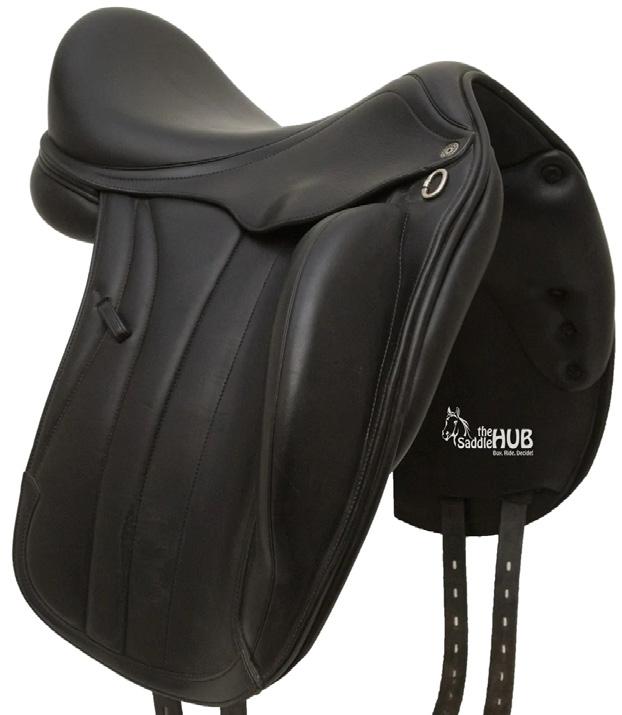
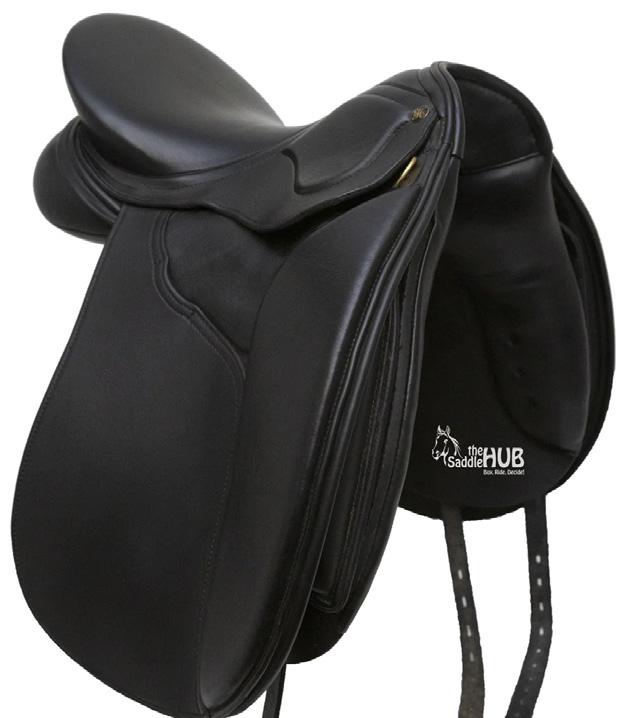
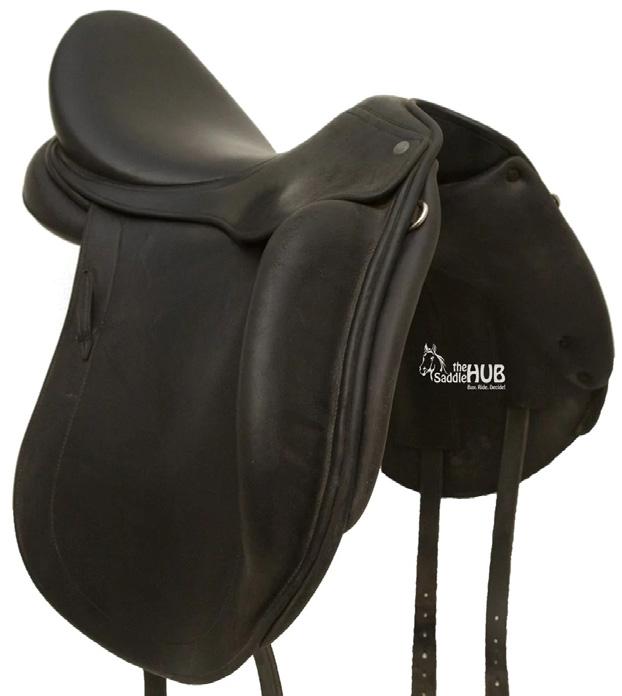




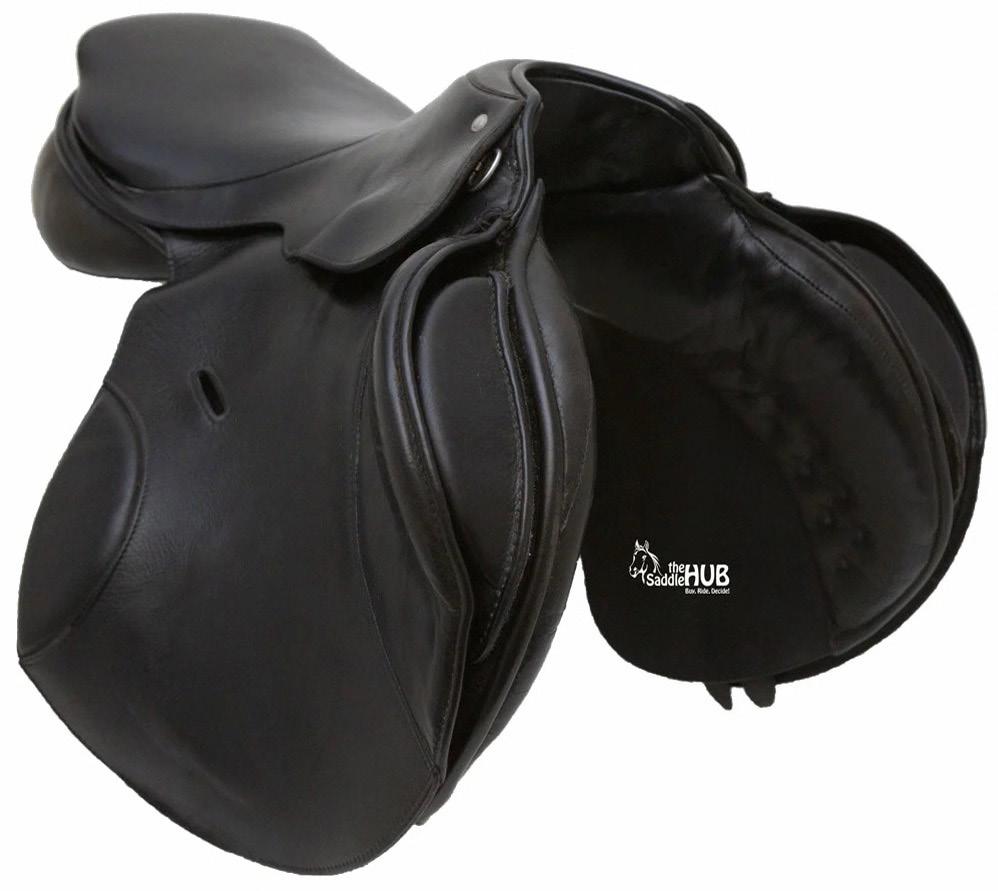

EQUESTRIANHUB.COM.A U | 69 Welcome to The New Saddle Hub Helping you find the perfect fit - for you and your horse Equipe Viktoria 17” $5,800.00 Peter Horobin Amazone 17” $2,990.00 Luc Childeric DHE 17” - $4,995.00 County Perfection Turnout 16.5” $4,500.00 Kieffer Rotterdam Size 2 - $3,995.00 Ambassador 16.5” Fully Mountedar $995.00 Wintec Pro Stock Large - $1,300.00 Arena All Purpose 17” - $1,300.00 Passier Eventing 17.5” - $2,995.00 $2,495.00 www.thesaddlehub.com.au HOT DEAL!
Equine Clinical Nutrition



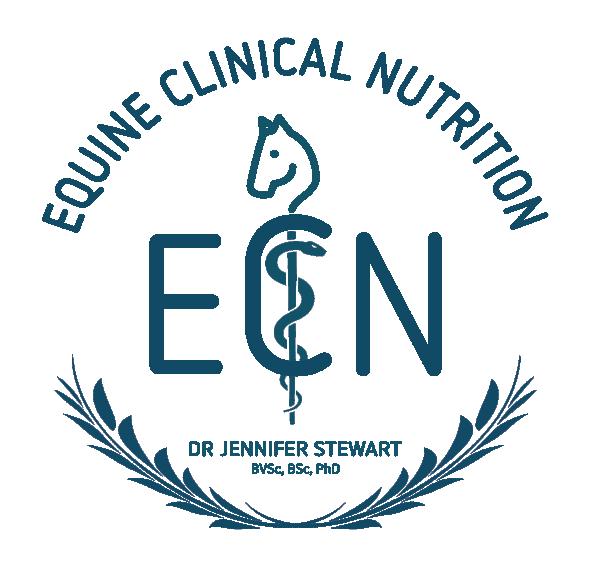
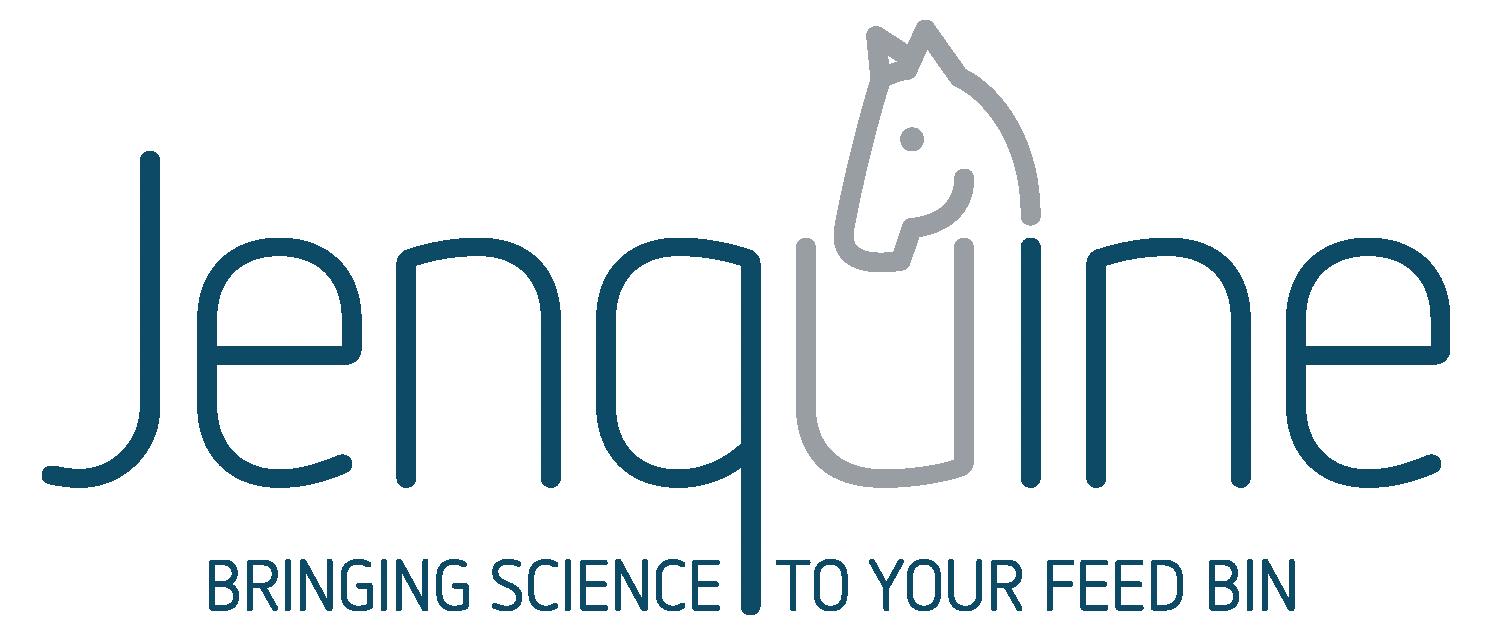

www.jenquine.com
FASHION TRENDS
Endurance haute couture
Just because you’re an endurance rider doesn’t mean you have dibs on all that super kit! JESSICA MORTON explores some styles perfect for all riders.

When you think of endurance, do you think of riders dressed in spandex and horses equipped with colourful biothane kits? While you might be partly correct, in truth these fit and friendly folk know more than a thing or two about choosing summer riding gear that prevents chafing in all the wrong places and yet looks great too.
So we picked some trends straight from the European endurance circuit that'll keep you looking sharp, and feeling good no matter where you're riding – or for how long!
No pinch pants
If you’re planning on a long ride, leave the restrictive jeans and thick breeches at home. Quick drying and super
stretchy riding tights make summer riding much more comfortable.
Equiline's Cairk leggings might just become one of the benchmarks against which future riding tights are judged. Stretchy and sleek, these stylish leggings won't compromise your freedom of movement. Silicone grippers on the knee provide enhanced support in the saddle, while an elasticated pocket on the leg easily expands to fit a large cell phone and prevent it from bouncing around when you pick up the pace.
Perfect for summer riding, French label Horse Pilot designed the X-Aerotech performance breech range using Aerotech technology. Key design concepts include laser cut perforation vents to improve air circulation around the legs, while mesh panels on the inside of the waistband and calves create a welcome cooling effect. Constructed especially for extended time in the saddle, X-Aerotech’s enhanced suppleness, stretch and durability makes them feel like a second skin.
Strategic layering

Endurance riders know all about dressing in layers so they can adjust to changing temperatures throughout the day. This strategy helps regulate their body temperature as they add or remove layers according to their activity level or changes in the weather.
A good base layer is designed to keep riders dry, comfortable, and completely odor-free, no matter how long they ride. Since pure cotton garments tend to soak up moisture (and odour), Spanish label Sport HG has created base layers infused with tech-carbon to protect muscles from fatigue and Climatherm® to regulate your body temperature and keep you smelling fresher for longer.
And Italian endurance brand Setzi Saddles recently came up with a revolutionary base layer that doubles as a body protector for long-distance riding.
The High Performance Softshield T-Shirt
EQUESTRIANHUB.COM.A U | 71
has a protective exoskeleton made of a rubber composite that absorbs the shock of a fall without constricting the rider’s movement in the saddle.

Flexible foot support
That old adage about the foot making the horse? It's true for riders too!
Comfortable footwear is essential when riding over long distances, and while you don't need to be competing in the Tom Quilty Gold Cup to understand the appeal of rock solid support and weather protection, investing in footwear with a decent tread and shock absorbing qualities will help you make it through to the end of your ride.
Sitting aesthetically between work boots and running shoes, the Ariat DuraTerrain boot is a popular choice for endurance riders. With a chunky design and rugged tread, these boots can be worn alone, or matched with Ariat Terrain half chaps. The contoured half chaps provide a protective layer to the leg to prevent chafing and pinching, and also provide compression support. Less expensive and more flexible than tall boots, lightweight chaps can be folded away for travel, and are easy to rinse off and dry after riding.

If you prefer to ride without chaps, the new line of endurance sneakers from Sergio Grasso bring with them a touch of '80s nostalgia. Sporty, sleek and 100 per cent waterproof, this hybridised
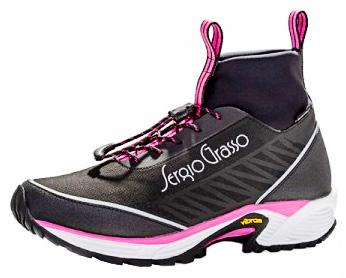
style is sturdy enough to wear for riding and comfortable enough to wear running alongside your horse. Available in a selection of colors, the sneakers have reflectors for night visibility and a stretchy waterproof collar that prevents debris and water from getting inside.

Beat the heat and stay safe
Once upon a time, helmets were uncomfortable, clammy and heavy. But today, with an exciting variety of airy lightweight options available, there is no excuse not to wear one.


Some of the best hot weather designs were conceptualised by riders who live in warm climates. Lelia Polini, CEO and founder of KEP Italia, envisioned a lightweight helmet that would keep riders safe and cool while competing in endurance. Today, her ventilated safety helmets are worn by top endurance riders all over the world.

Don't forget
An emergency kit is a wise investment regardless of where you plan on riding. Rescue Swag sell an Adventurer Rescue Swag and Equine First Aid Kit combo, which contains essential supplies for human and horse emergencies and attaches neatly behind your saddle. The kit includes a snake bite bandage designed specifically for the pressure immobilisation technique commonly used in Australia for snake and funnel web spider bites. Safe to say, you shouldn’t leave home without one!
72 | EQUESTRIAN HUB ISSUE 10 • 2022
Horse Pilot X-Aerotech Green Morocco summer breeches
Setzi Saddles High Performance Softshield T-Shirt
Sergio Grasso KM Plus Fucsia endurance riding bootKEP Kingfisher Blue endurance helmet
Ariat DuraTerrain waterproof boot and half chaps
FEATURE


The wild horses of Sable Island

Sable Island’s wild horses have inspired photographers and documentary film makers alike, and as SUZY JARRATT discovered, with very good reason.
When the TV screens go fuzzy on Sable Island everyone blames the horses, who when they get itchy, rub their rears against the island’s satellite dish.
Horses in other countries can scratch on branches and tree trunks, but not on this remote Canadian island located 160 kilometres southeast of Nova Scotia,
where there is one scrawny pine which has grown only a metre in 50 years.
Set alone in the Atlantic Ocean, Sable Island (‘sable’ is French for ‘sand’) is an approximately 40 kilometre sand bar shrouded in fog for a third of each year. Crescent-shaped and narrow, it’s renowned for shipwrecks, has the world’s biggest breeding colony of grey seals and nine years ago was decreed
a National Park Reserve. The island is most famous for wild horses and presently there are about 500 living amid the dunes and grasslands.
Horses were first sent to graze on Sable back in 1737 and most were stolen by fishermen. In 1760, according to Nova Scotia Museum’s Education Department, a merchant named Thomas Hancock shipped 60 to the island. They had originally belonged to the Acadians, French immigrants who in the 1600s settled in Nova Scotia, known then as Acadia. The horses they brought from France were a mixture of types which later interbred with Friesians and Andalusians.
When the Acadians refused to sign an oath of allegiance to Britain (which then had control of the region) they were deported and forced to abandon their livestock. So Hancock, who was paid to transport the settlers to the American colonies, helped himself to some of their horses, dropping them on deserted Sable Island where they survived and became wild.
The first people to settle on Sable came with the Lifesaving Station in 1801, and as folklore has it, so did a stallion named

74 | EQUESTRIAN HUB ISSUE 10 • 2022
BREED
Jolly. He was a registered Canadian Horse, a small hardy breed resistant to harsh conditions, and the first horse to be officially recorded on the island. Many of the herd today display his characteristics.
For the next 150 years people relied on the horses to haul lifeboats to shipwreck sites, and men from the Lifesaving Station rode them around the shoreline searching for ships in distress. Some were taken for sale in Nova Scotia’s capital Halifax, but failed to fetch good prices so a few Morgans and more Canadians like Jolly were introduced to breed with the mares. However, there are accounts suggesting that this wasn’t particularly successful. The native Sable stallions fiercely defended their mares, so that few imported stallions were able to breed with them.
Today’s Sable Island horses look much the same as ever they did: short and stocky with thick, shaggy coats; tails and manes that drag along the ground; and long hooves tending to turn up. Their main diet is marram, a coarse grass which grows in sand.

The horses dig for much of their fresh water. Rain seeps through the sand until it meets salt water. Fresh water floats on top of salt water and the horses know where to dig until small pools fill the hole. There are also freshwater pools which are a life-saving source for the animals. But back in the ‘50s there was a move to end these lives. Biologists and ecologists argued the horses were not native to the island and were destroying it. They would have been slaughtered or sent to work in coal mines had it not been for a letter-writing campaign by schoolchildren begging the then Prime Minister to save the Sable Island herd. In 1960 the horses were officially protected by Canadian law.
A 2007 study has since proved that the horses have been isolated long enough to become genetically unique. Nova Scotia declared them the province’s official horse in 2008, and in 2011 Parks Canada took over their custodial role, which was to protect but not manage them. Any intervention is illegal - no farriers, dentists or vets for them.

Abbie Branchflower, a behavioural researcher, documented her experiences when first encountering them: ‘Walking among the dunes I gained an appreciation for the wild and rugged lives they live. The sand is difficult to walk on – yet they canter up dunes as if it’s nothing. The island is a beautiful but brutal place. Horses walk along the beach steps away from piles of bleached bones, and the weather can turn in an instant from sun to pouring rain. Winter can be cruel to the young and very old, but these horses are perfectly, amazingly adapted to the life they live’.
Another researcher was amazed that they have survived for so long, commenting that it was difficult to believe they were eking out a living on a little sandbar miles from anywhere. The horses pay little attention to human visitors, who are not permitted to approach them. As one tourist noted: ‘close by a stallion was idly scratching on some coarse dry roots, he didn’t even look up, then just ambled away grumbling quietly to himself’.
EQUESTRIANHUB.COM.A U | 75
ABOVE: The Sable Island horses are short and stocky with thick, shaggy coats and long manes and tails.
FACING PAGE: The horses’ main diet is Marram, a coarse grass which grows in sand (Images by Sarah Medill, © Parks Canada).
Hard to beat
Once you see it, you’ll understand why Helgstrand at Turnberry, a spectacular Scotchmans Road property in Drysdale, VIC, is one that’s hard to beat.

This magnificent property, the Australian home of world renowned Helgstrand Dressage, has stunningly clear water and Melbourne skyline views. Combining horses and lifestyle with a sound investment opportunity, Helgstrand at Turnberry stands on the much sought-after Bellarine Peninsula, within walking distance to major wineries and just 25 minutes to

Geelong, 10 minutes to Drysdale, and under 10 minutes to Portarlington with its ferry service to Melbourne's Docklands.
The exclusive Scotchmans Road address offers sealed road frontage. The property itself is strikingly introduced through remote control gates and a tree lined private driveway leading to an imposing granite stone residence of unsurpassed luxury and sophistication.
The formal and informal living areas, library, sitting room, and four generously proportioned bedrooms, two with ensuites, are striking in every respect. There’s also an office with a delightful courtyard outlook, and a separate selfcontained apartment. The well-appointed kitchen has marble benches, dishwasher, a walk-in pantry and gas cooking.
Additional attributes include plantation shutters throughout, hydronic heating, a

76 | EQUESTRIAN HUB ISSUE 10 • 2022
PROPERTY
security system, expansive under floor cellar, solar power (in addition to the mains) and a superb heated in-ground salt water pool with spa. Domestic water is supplied from the mains and 280,000 litre freshwater tanks.
The property’s equestrian facilities are world class. The indoor arena boasts a Martin Collins (UK) surface, a Buchholz (Germany) overhead computerised irrigation system, and a luxurious
viewing area with kitchen and staff accommodation. Other features include 13 stables, an enclosed maple tree courtyard with fountain, a five bay shed complex, round yard, working area and a breeding crush.

The property is laid out with laneways to three large and 10 smaller paddocks, all with rich black soil and improved pastures. Post and rail fencing is throughout, and two spring fed dams and bore water
ensure an ample water supply.
Contact Andrew Rice of Charles Stewart
& Co on 0457 105 500.

FACING PAGE: The imposing granite stone residence offers unsurpassed luxury and elegance.
TOP: Thirteen stables enclose a maple tree courtyard with fountain.

LEFT: The spacious stables are light, airy, and very well equipped.
RIGHT: The formal and informal living areas are striking in every respect.

EQUESTRIANHUB.COM.A U | 77
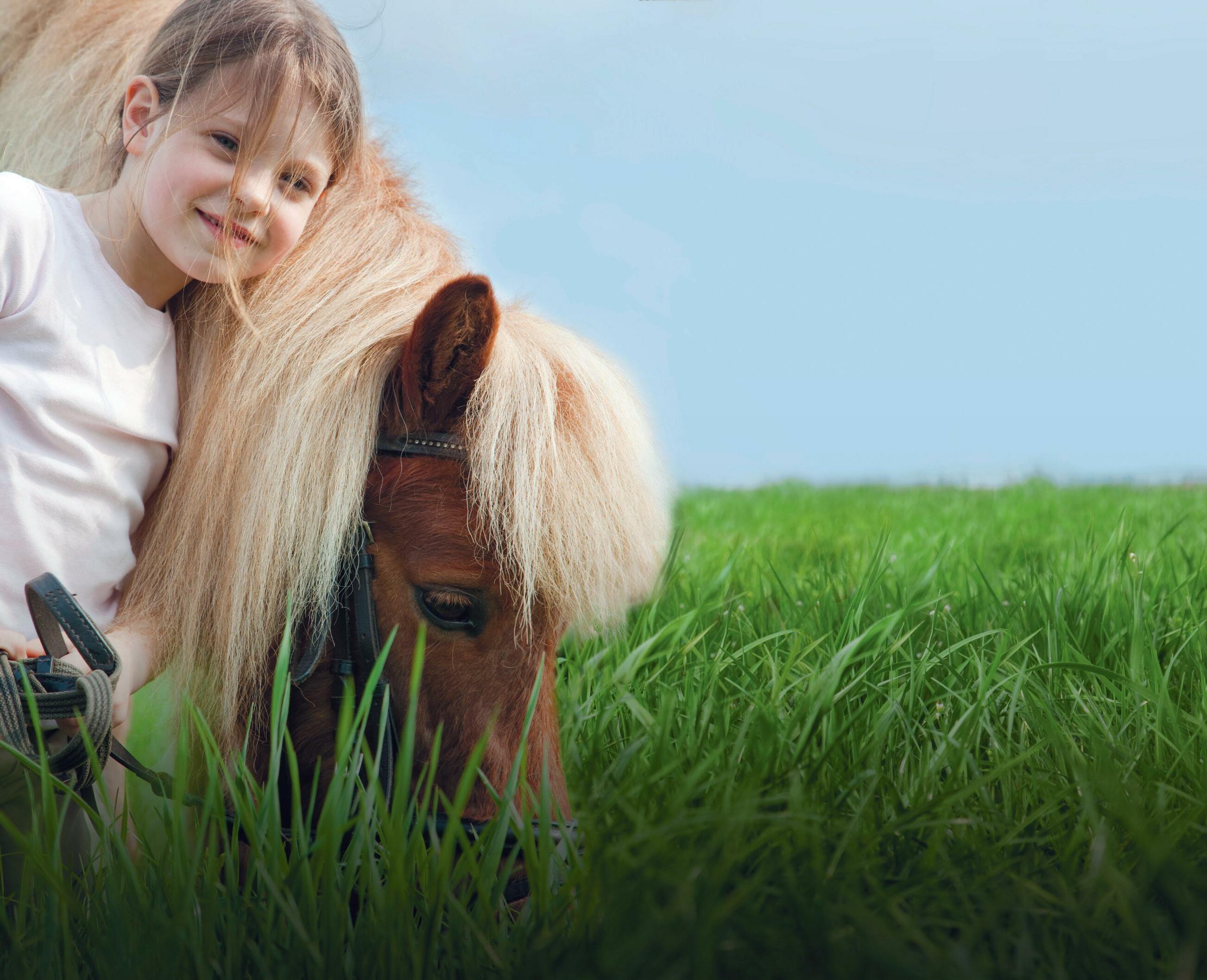
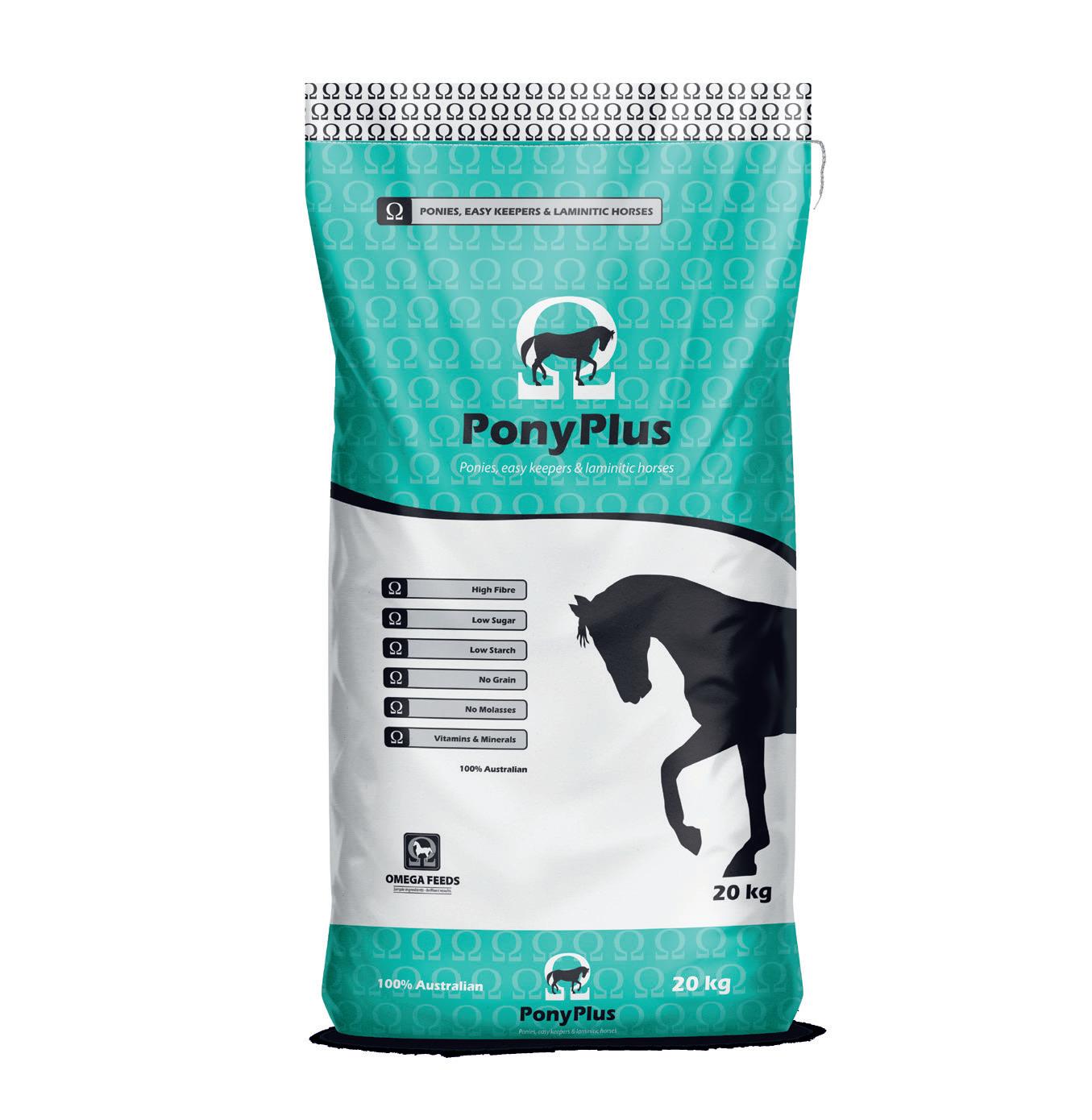
Erreplus Freestyle

Not one but two Erreplus Freestyle saddles recently arrived at a hobby lavender farm in Molong. Their new owner is delighted with her purchase. “One is for my 14-year-old Friesian Warmblood mare, the other for my daughter’s Welsh cross Australian Riding Pony,” explains Sandra Strudwicke, who lives on the 13 acre farm in NSW’s Central West with her family and horses. “We also have a friend’s retired Shetland, an Arabian I bred, and another Friesian cross,” she adds.
Sandra occasionally rode bareback as a child but didn’t have a horse of her own until she was 27, when she acquired an 18-month-old Arabian. “Green rider/ green horse is never a good idea but somehow we survived!” she recalls.

Many of her early riding lessons were from Tracee Males, once daughter-inlaw of Ron and Val who founded the legendary Ralvon Stud in the mid ‘50s. “Tracee was inspirational and grew my love for horses. I had the privilege of owning Ralvon Memory for over 12 years. My heart was broken when she died.”
After spending time in W.A., the Strudwickes returned to the east coast in 2016. “I haven’t been competing but I’ve been learning classical dressage,” Sandra explains, “and I’m also leaning online with real time lessons from German classicist Nicole Weinauge. Nicole has an incredible eye and she’s also an expert on equine musculature.”

Interestingly, Nicole has obtained trainer licenses in Classical French as well as Classical German methods, and says her training methodology brings lightness back into dressage, an alternative to the heavier German training method.

During the day, Sandra works online as a technical business analyst, and she’s very complimentary about the way The Saddle Hub operates. “Its business model is fabulous – low risk for the buyer, low risk for the seller, because you have an intermediary doing all that. I also used them in the past to buy a Bliss of London,” she says. “Ava, my 10-yearold daughter and I wanted an Erreplus Freestyle this time. She had a ride in a friend’s and I was blown away by how good her position was. I didn’t have to
keep telling her to put her heels down or stop tilting forward.”
The Strudwickes are looking forward to Ava doing some dressage at the local Pony Club on her pony Tessa. “At the moment she’s riding at home, learning the basics and trying her hand at horse archery. She’s super capable and helps around the stables and yards. My incredible husband Craig also makes time to help each day so I have time to enjoy my Freestyle and my mare,” Sandra smiles. “And many thanks Saddle Hub – you really looked after me.”
The Saddle Hub has a wide variety of top quality second hand saddles, so why wait? All saddles come with a two-week trial, finance options, and a courier right to your door. Terms and conditions apply.

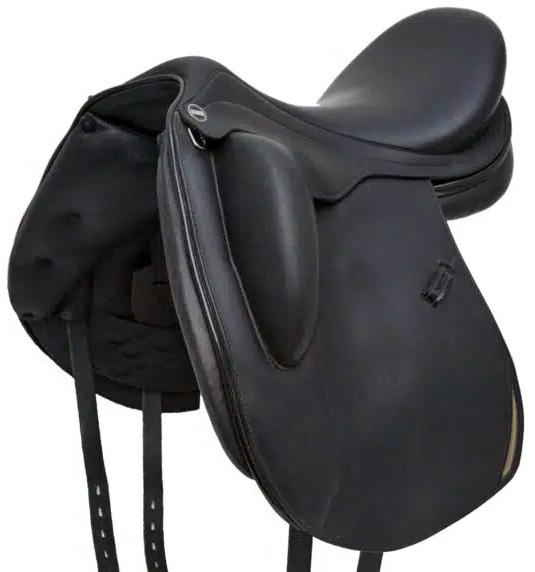
EQUESTRIANHUB.COM.A U | 79
Two of a kind - Ava and Tessa both look comfortable in their new Erreplus Freestyle, as does Sandra’s Friesian Warmblood mare.
SADDLE REVIEW
With excellent rider comfort and grip, the Erreplus Freestyle has an extra deep seat and a narrower twist to allow for closer contact.
Firmly grounded

After recently talking to young eventer William Bates, SUZY JARRATT is of the opinion that he has all his ducks in a very well thought out row.

Horses are not the only animals keeping William Bates busy: there are three Jack Russells, some ducks, guinea fowl, various chooks and a peacock with a harem of hens. Each day they demand attention. As does his schoolwork – and as William’s goal is to become a vet, he must study hard.
Sixteen-year-old William is the son of Matthew and Christine Bates and it was inevitable he would grow up with horses. His father is a breaker and former 3* eventer, his mother a 5* eventer and coach. Together they run a busy training and agistment business in Wilberforce, 60 kilometres north-east of Sydney.
William’s first rides were on a miniature pony when he was two, there’s some YouTube footage to prove it! “But I didn’t start riding properly until I was five and then I began eventing at nine.” In just a few years William has notched up points on the board, winning and placing at major equestrian competitions (some of his ducks and chickens also won prizes at the 2022 local ag show, and at the recent Penrith ag show, William was awarded Champion Poultry Judge).
Today his main horse is 12-year-old Lamondale Reveller a.k.a. Reuben. “He’s three-quarters Warmblood, one quarter TB,” William explains. “He’s friendly and cuddly, not sharp or spooky, and the plan is to keep going up the grades. At Tamworth in July we competed in our first 95cm where we placed ninth overall. I was super happy with how he went for me, consistent in all three phases.”
He is also riding Adelaide Hill the international eventer formerly campaigned by his mother and owned
80 | EQUESTRIAN HUB ISSUE 10 • 2022
YOUNG RIDER
by family friend Beth Turner. “I’ve recently taken him into straight dressage events which can be fun, especially on an experienced horse like him, whereas eventing dressage can be boring. He’s 20 now - I’m just going slowly and might eventually bring him back to eventing. Mum and I call him Spooks. He’s vastly different to Reuben who you have to kick when you get on. If you did the same to Spooks you’d get bucked off. It took Dad three years to break him in!”
Beth is delighted William has taken Adelaide on. “He’ll learn from him and Adelaide will enjoy being ridden by William,” she says. “Trained horses do respond well to gentle, kind, young riders and they like competing. I’ll be following their progress just as I did throughout Christine’s career with Adelaide.”
Christine, who helps her son with the three eventing phases, always encourages him to seek new advice. “I love getting dressage lessons from Prue Barrett and I recently went to a showjumping school with David Cameron which was fantastic,” he tells me. William knows that without his parents he could never participate in the sport he has grown to love. “Mum and I work the horses around four o’clock when I get home from school. Mum will ride one, I’ll get on the other and we’ll rotate them the next day. People assume I’ll become a professional rider but knowing how hard Mum and Dad work, I’ve decided against that and am aiming to be a vet. I’ll look into going to university in America or England. My parents have said they’ll move to where I go and then they can keep my horses with them which will make it cheaper for me.”
Although only young, William Bates seems to be well-grounded and wise. What qualities does he think are necessary to make a good horseman? “Definitely patience,” he says. “You also need to love animals and be able to build a connection with them. Until I have a good bond with horses I cannot ride them well.”


FACING PAGE: William and Reuben placed 9th in the 95cm at the 2022 JNR Tamworth ODE (Image by Britt Grosvenor Photography).
TOP: William steers Lamondale Reveller through the rain to take 2nd place in the 80cm class at the 2022 NSW Interschools (Image by Rodneys Photography).

BOTTOM: Adelaide Hill and William took 1st place in Bowral Dressage’s 2022 Prelim 1B JNR (Image by Rodneys Photography).
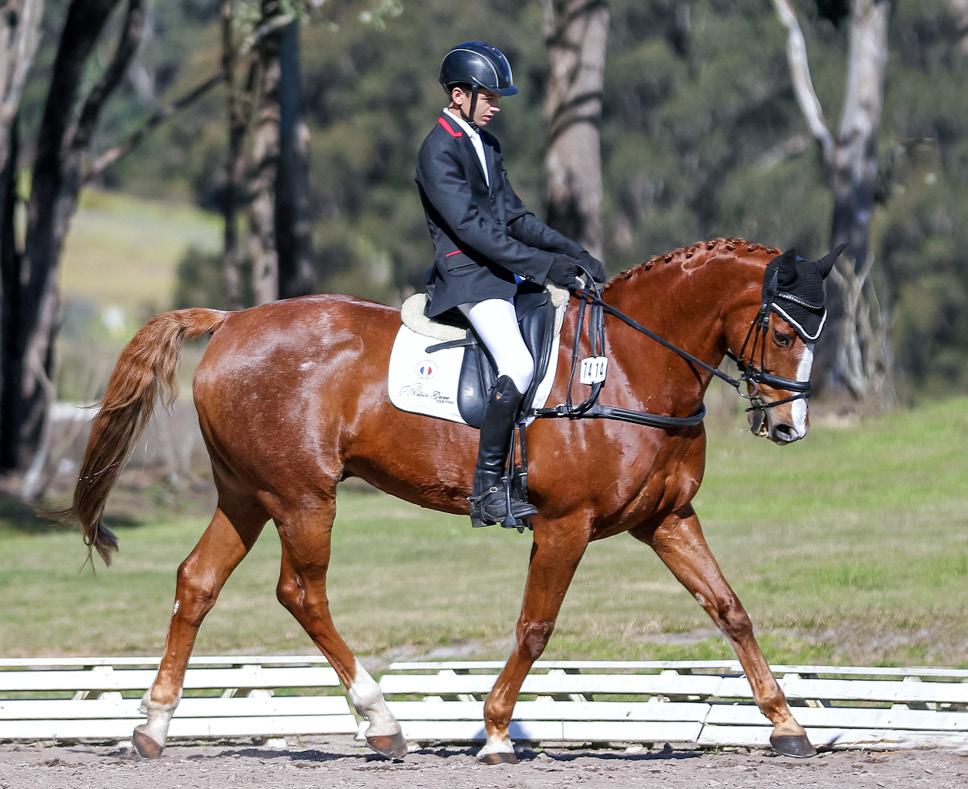
EQUESTRIANHUB.COM.A U | 81
YOUNG RIDER
20 Questions with Wayne Turner
Wayne Turner has worked in the horse industry for the last 30 years. He’s the founding partner of Progressive Equine Services & Hoof Care Centre, and is dedicated to a modern approach to farriering.
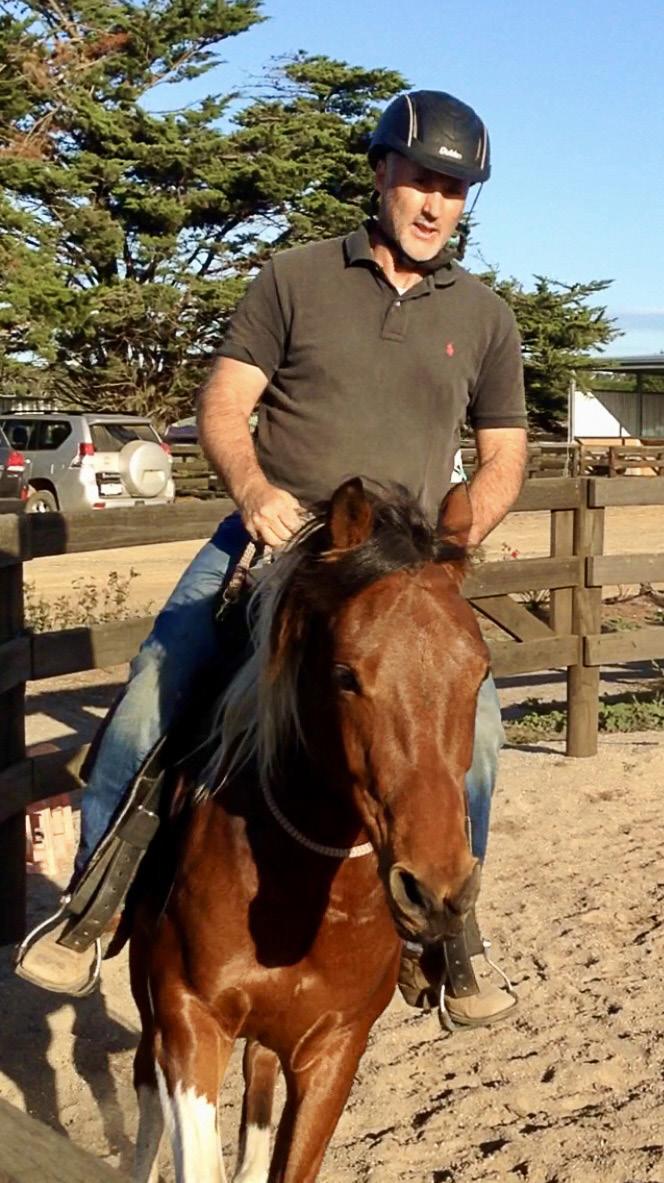

Q: Where are you based?
A : Warragul, Victoria.
Q: What did you want to be when you were growing up?
A : A professional golfer.
Q
: When did your interest in horses begin?
A : I have always had an affinity for horses since growing up on a farm, but didn’t really get involved with them until my mid-twenties.
Q: Did you participate in any horse sports?
A : I did some endurance riding, but as competitive as I am personally, I’ve never pushed that onto my horses.
: When did you become involved in farriering?

Q
A : In my early ‘30s.
Q: What other interests do you have?
A : I've been very sporty all my life and competed in a few professional triathlete races. I still ride my bike and play a bit of golf, but nothing serious these days as I’m busy running Progressive Equine Services & Hoof Care Centre (PES). We also started a lot of horses under saddle for many years, which allowed me to work overseas a bit.
Q: Where have you worked overseas?
A : When I was starting horses I spent time in India, UAE, the UK and Europe.
Q: When you started farriering did you shoe in the traditional way?
A : Yes, but I had a great teacher who believed we didn’t have all the answers and this has kept me searching. The open heel metal shoe was developed for protection of the foot only and it does that extremely well. Originally horses were shod so armies could travel further, before the horses became foot sore. Back then, shoeing had little to do with supporting ideal foot function, or meeting the needs of the foot, and sadly not much has changed.
82 | EQUESTRIAN HUB ISSUE 10 • 2022
20 QUESTIONS
Q : What led to the establishment of PES?
A : I saw just how many horses were suffering from poor farriery and felt there must be a better way. The direction I took was to try and gather more accurate and objective data, which is why I got licensed to own and operate x-ray equipment. It’s the best decision I ever made, and we’ve helped thousands of horses over the last eight years.
PES also works with other farriers, both in Australia and overseas. We are more than happy to take x-rays or gather data for colleagues, answer any questions, and help them as much or as little as they want in order to achieve the best result for each horse.
Q: How does PES differ to other farriering businesses?
A : We use modern technologies including gait analysis and x-ray equipment, and Werkman Black, an innovative technology that gathers objective data on every facet of your horse, which allows us to determine the horse’s needs more objectively and trim and shoe them accordingly. This is a long way from most other farrier businesses, which often use subjective opinion and guesswork for much of the evaluation, trimming and shoeing process.
Q: Which country is the most advanced in farriering?
A : I would say the UK sets the standard, but I don’t see any country moving in the right direction. The use of modern technologies to better evaluate a horse’s needs must be incorporated into farrier training and practices if we’re to move forwards. With a few exceptions, we’re still shoeing horses as we did several hundred years ago. Sadly, there’s still so much resistance in the industry to move into the modern era, which negatively impacts the horse, their comfort, soundness, and performance!
Q: Have you written a book?
A : In 2003 I authored a book on optimising breakover efficiency for a shoe idea we developed.
Q: In your opinion, what’s in the best hoof dressing?
A : I don’t advocate for most hoof dressings. Good nutrition, stimulation, loading, movement, and hoof care are what’s best for horses' hooves. I think walking them into water over their fetlocks every day or two is a great idea through the drier months.
Q: Are there some breeds or types you don’t or won’t shoe?
A : I’ll happily work with any horse that will stand quietly to be shod. Breed and discipline are irrelevant, but my safety is paramount.
Q: Do you shoe elite competition horses?
A : We shoe top level horses from most disciplines, yes. But we also shoe many Pony Club, riding club and trail riding horses too. To us, each horse is of equal value, from Olympic through to Pony Club horses.
Q: Do other farriers contact you for advice?
A : It’s amazing how many farriers contact us from all around the world. Many did not like what we had to say several years ago in relation to open heel shoes, caudal failure and trimming styles. But they’ve seen our results over many years, and we’re still saying the same things. It’s great when they send photos or messages showing the changes they’re making by following our work and shoeing style.
Q: You have an extensive online following.

A : We have almost 40,000 followers on our PES Facebook page, and we post most days, often with our thoughts on various aspects of farriery. We show a lot of before and after photos on hoof corrections, we also show x-rays and data reports from the equipment we use,
so our followers can better understand the internal and external foot. My goal for my social media page was for owner education, but we have a huge following of hoof care providers, trainers, vets and other people working in the industry from around the world.
Q: Are there many female farriers?
A : Yes, there are many in this country and internationally, and many are also exceptionally good.
Q

: Do you have a family?
A : Just me and Wilson, the Staffordshire terrier.
Q: Do you have time for a social life?
A : Sorry, I don’t understand the question!
Visit Progressive Equine Services or email info@progressiveequine.com.au for more information.
FACING PAGE LEFT: After upgrading his audiovisual equipment, Wayne is producing an educational video series on farriery.
FACING PAGE RIGHT: Wayne has always had an affinity with horses.
ABOVE: To ensure the best outcome for the horse, Wayne uses x-rays and other data gathering technologies.
All images courtesy Wayne Turner

EQUESTRIANHUB.COM.A U | 83 20 QUESTIONS
For Sale
versatile, Reymond is trained in Reining, Ranch Riding, Cow Horse

Cutting. This one in a million horse has won multiple State and Highpoint
with an excellent work ethic, this combined with
makes him the ultimate horse to take you from beginner level to the top!
amazing
This flashy handsome boy has done it all with a no fuss attitude. He has no vices and is super easy to do anything with. He is for sale due to absolutely no faults of his own and will only be sold to the greatest of homes.
truly is a once in a lifetime horse!
84 | EQUESTRIAN HUB ISSUE 10 • 2022 CLASSIFIEDS
Advertise your horse where equestrians shop FIND OUT MORE Read more REYMINATOR Breed Quarter Horses Discipline Ranch Horse, Reining Size 15hh Age 10 Sex Gelding Location Scone, NSW Price $28,000 Super
and
champions
his
temperament
He




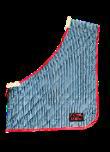


























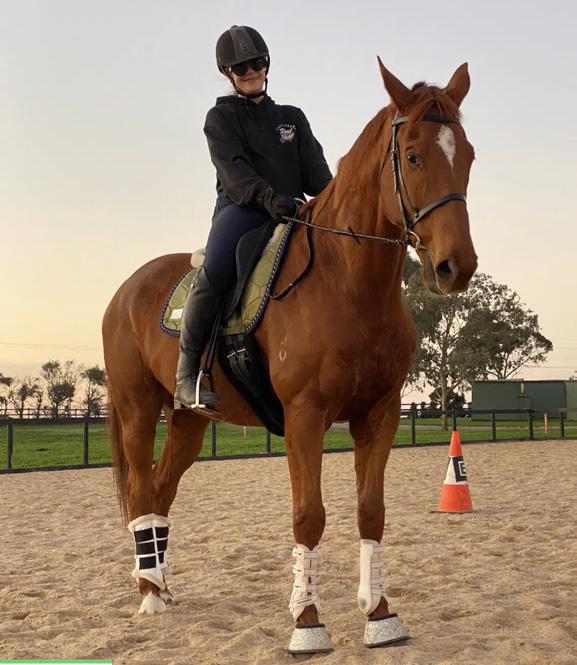

EQUESTRIANHUB.COM.A U | 85 AUSTRALIAN OWNED & CUSTOM MADE Q Great for those Nervous floaters Than Towelling Absorbent Ruug design TM ABN: 32407544616 CLASSIFIEDS We sell custom-built Australian Floats from the finest quality materials, with the utmost care for the safety and reassurance you need. Our floats are superbly balanced and unequalled in strength. FOLLOW US STALLION FLOATS NSW AGENT For Sale – TB Gelding Read more Size 16.2hh Sex Gelding Location Werribee, VIC Discipline Adult Riding Club Allrounders Price $5,000 For Sale – Mare Read more For Sale – Mare XENA WARRIOR PRINCESS Breed Irish Sport Mare Discipline Eventing, Performance, Showjumping Size 15.1hh Age 6 Sex Mare Location Eurongilly Price $20,000 Read more
LIVER
CHESTNUT


86 | EQUESTRIAN HUB ISSUE 10 • 2022 CLASSIFIEDS OUTSTANDING PERFORMANCE MOUNT Breed Thoroughbred Discipline Eventing, Interschool, Showjumping Size 16.2hh Age 9 Sex Gelding Location VIC Price $16,000
COLT Breed Warmbloods Discipline Dressage, Eventing, Performance Size 16hh Age 1 Sex Colt Location Laidley, QLD Price POA Read more Read more For Sale
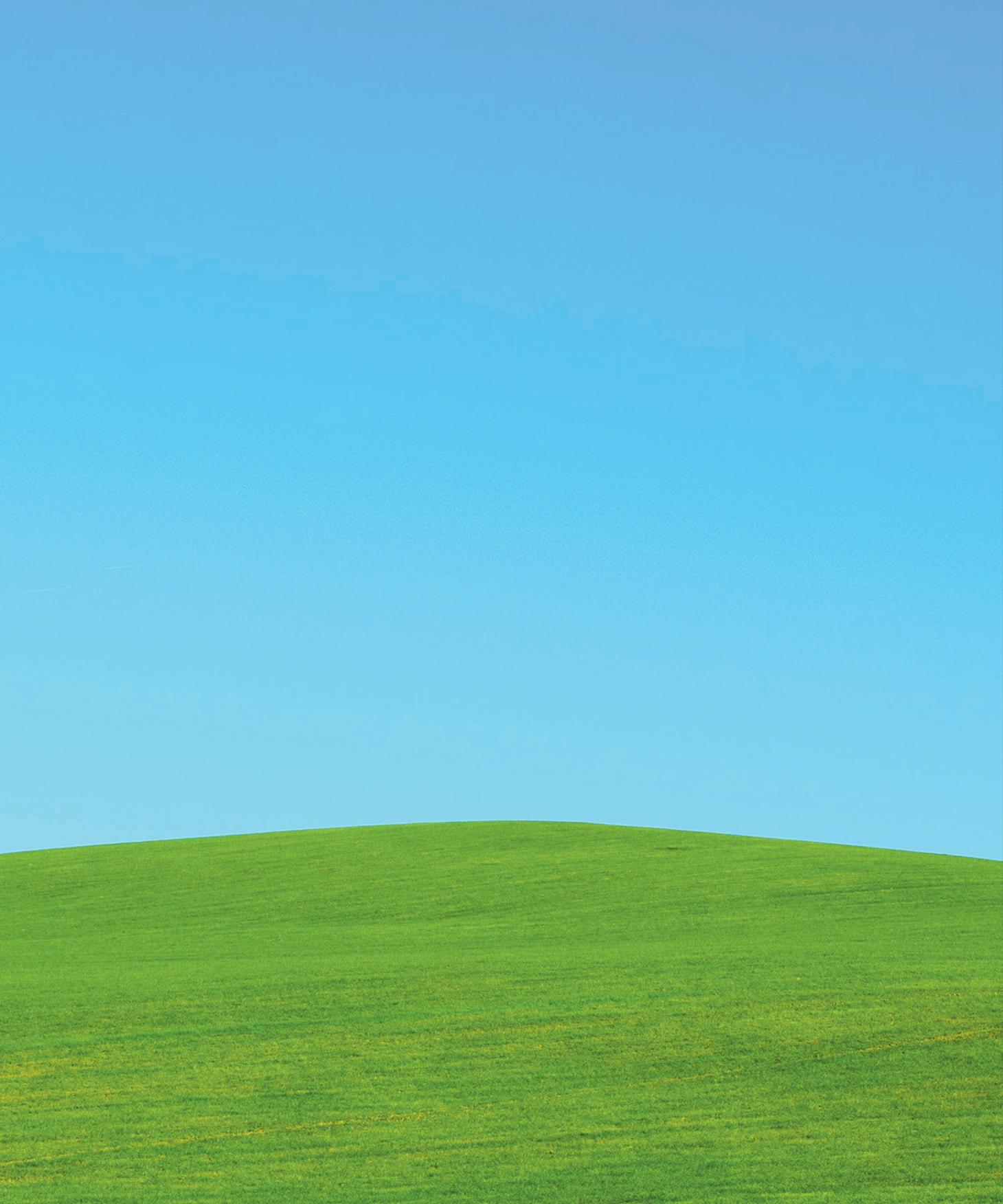









EQUESTRIANHUB.COM.A U | 87 CLASSIFIEDSMeet The Next Generation Microchip Alternative! For Sale – Filly Read more SENORITA Breed Andalusian/PREFriesiansWarmbloods Discipline Breeding Dressage Show Size Will mature around 16.2hh Age Under 1 Sex Filly Location Biddaddaba, QLD Price POA LA PETIT –COMPETITIVE SHOWJUMPER Breed Warmbloods Discipline Interschool, Showjumping Size 15.3hh Age 14 Sex Mare Location Mundoolun, QLD Price $22,000 Read more For Sale

88 | EQUESTRIAN HUB ISSUE 10 • 2022 CLASSIFIEDS PHOENIX OF BLACKALL PARK Breed Friesians Discipline Dressage Performance Size 16.2hh Age 9 Sex Gelding Location Biddaddaba, QLD Price $30,000 Read more For Sale INTRODUCTORY OFFER LIST YOUR PERFORMANCE HORSE FOR SALE, FOR FREE! LIST YOUR HORSE NOWCOUPON CODE: LIST4FREE
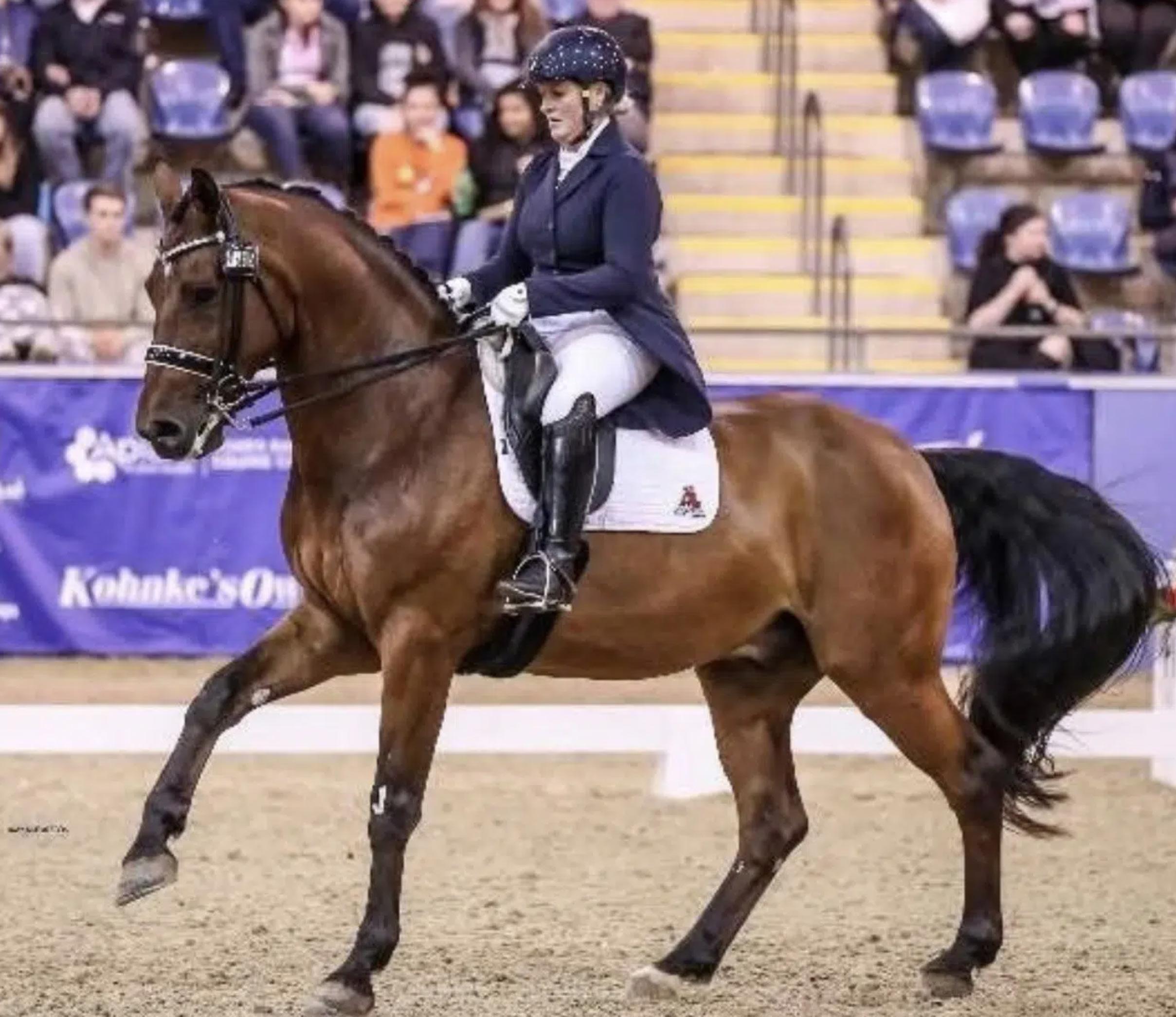

EQUESTRIANHUB.COM.A U | 89 CLASSIFIEDS FERRERO CHOCOLATE BOX Breed Warmbloods Discipline Dressage Size 16.2hh Age 15 Sex Gelding Location Lochinvar, NSW Price POA PENINSULA GIRL Breed Warmbloods Discipline Dressage Size 16.3hh Age 5 Sex Mare Location Lochinvar, NSW Price POA Read more Read more Contact: Sheridyn T: 0416 262 055 E: sheridynashwood@ icloud.com Contact: Sheridyn T: 0416 262 055 E: sheridynashwood@ icloud.com For Sale

SOLD Get Results. Sell your performance horse with Sell My Performance Horse Digital and Magazine ads available






































































 Datura is a weed often found with sunflower seeds.
Datura is a weed often found with sunflower seeds.















































































































































































































